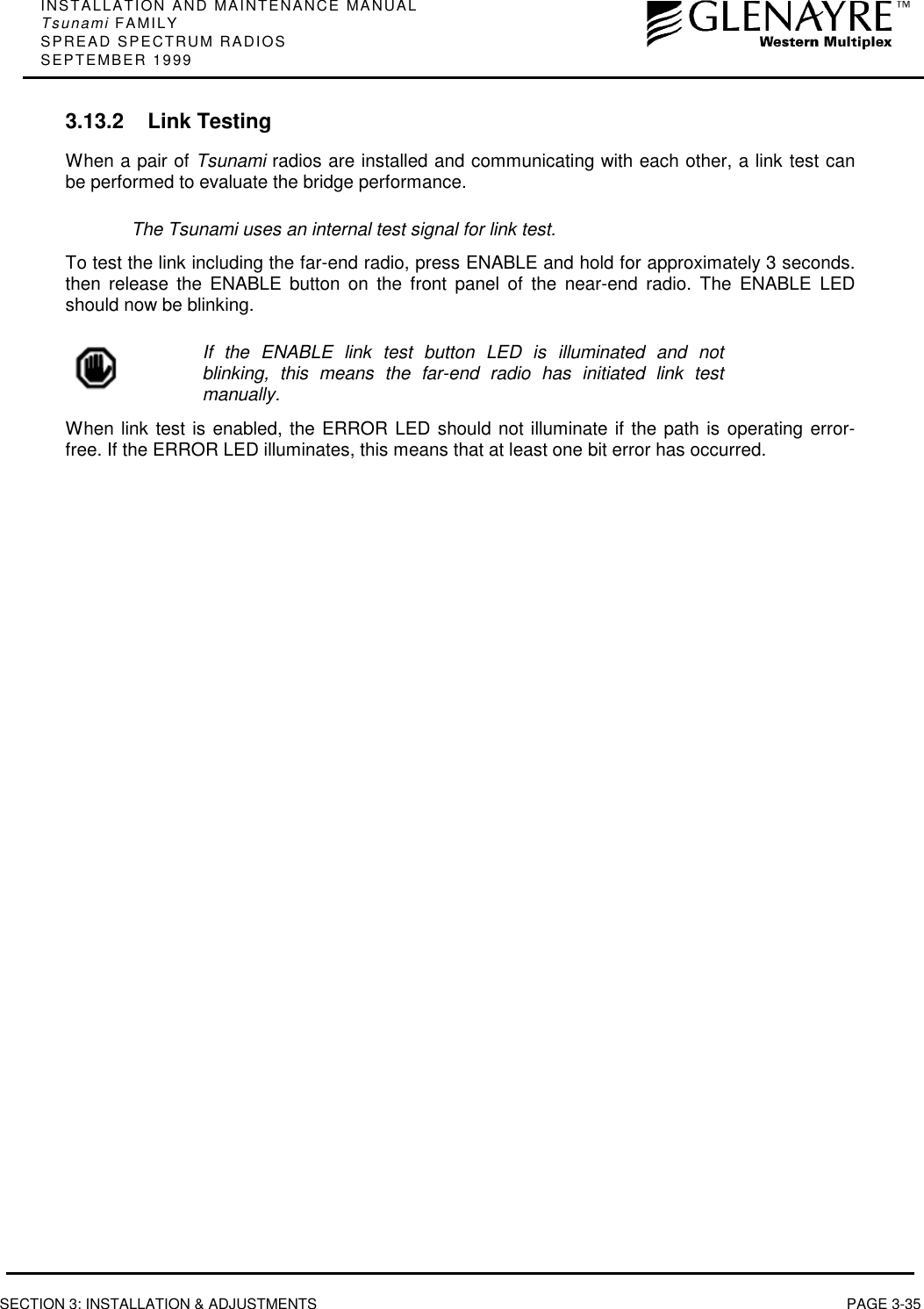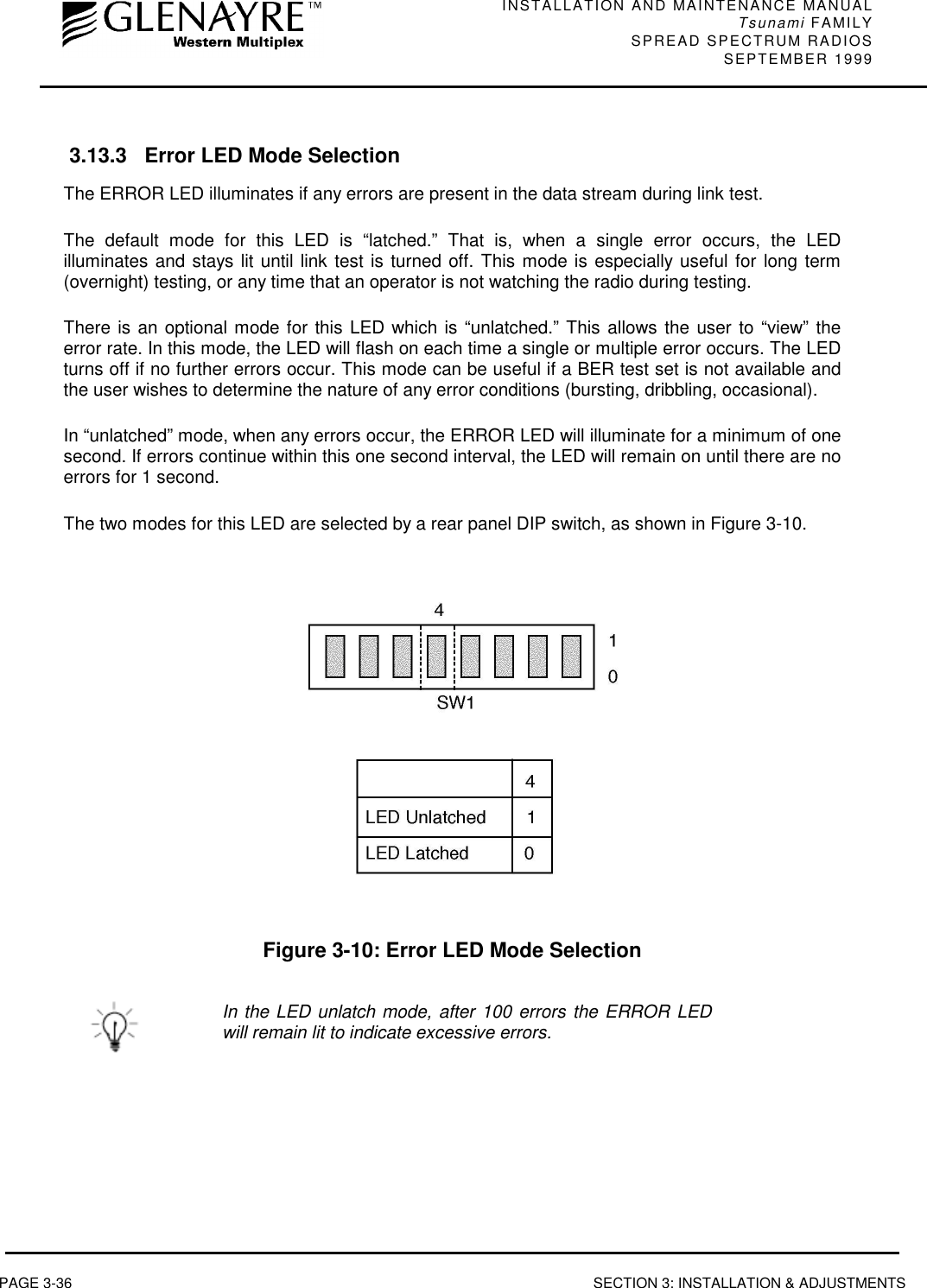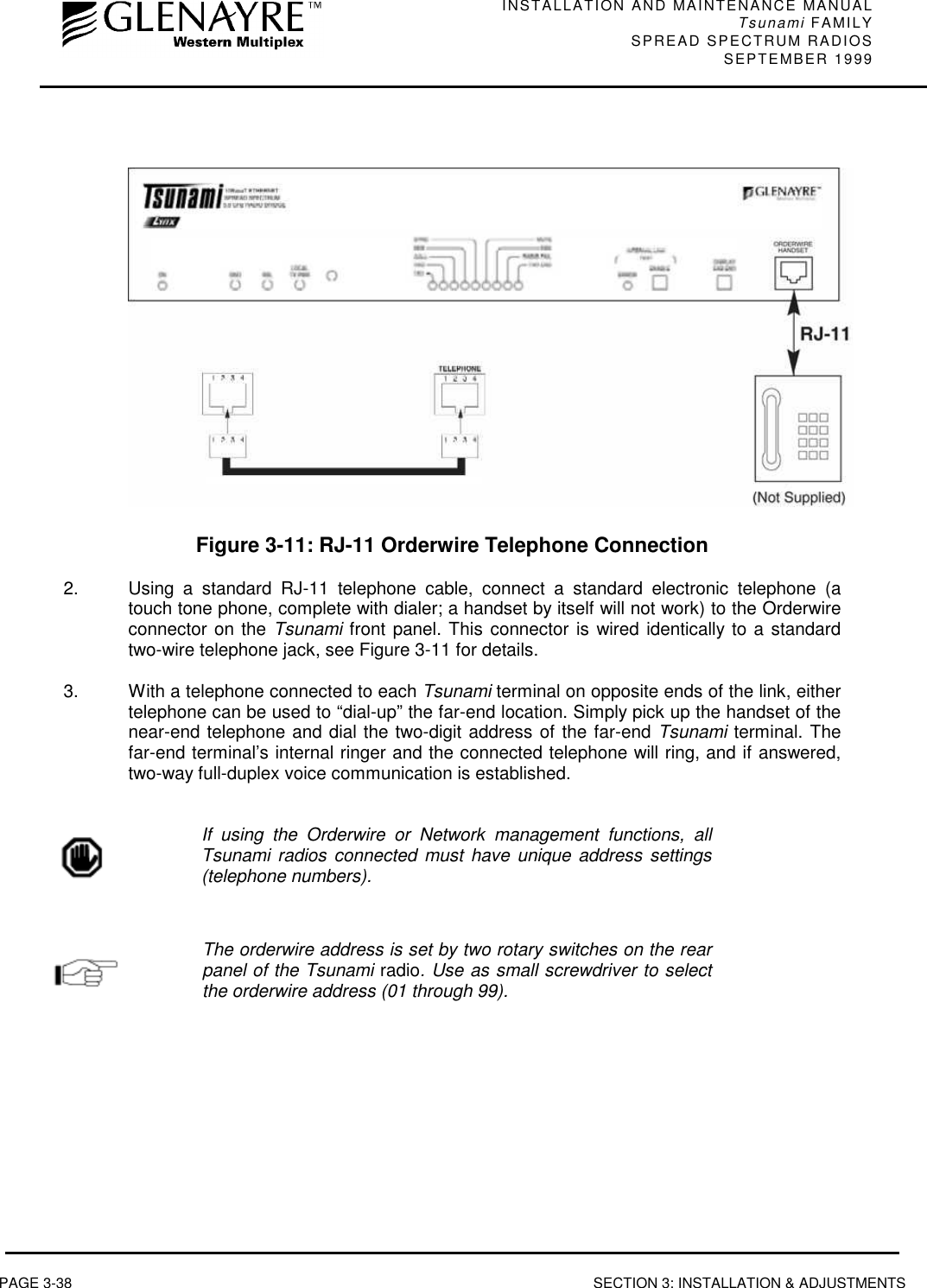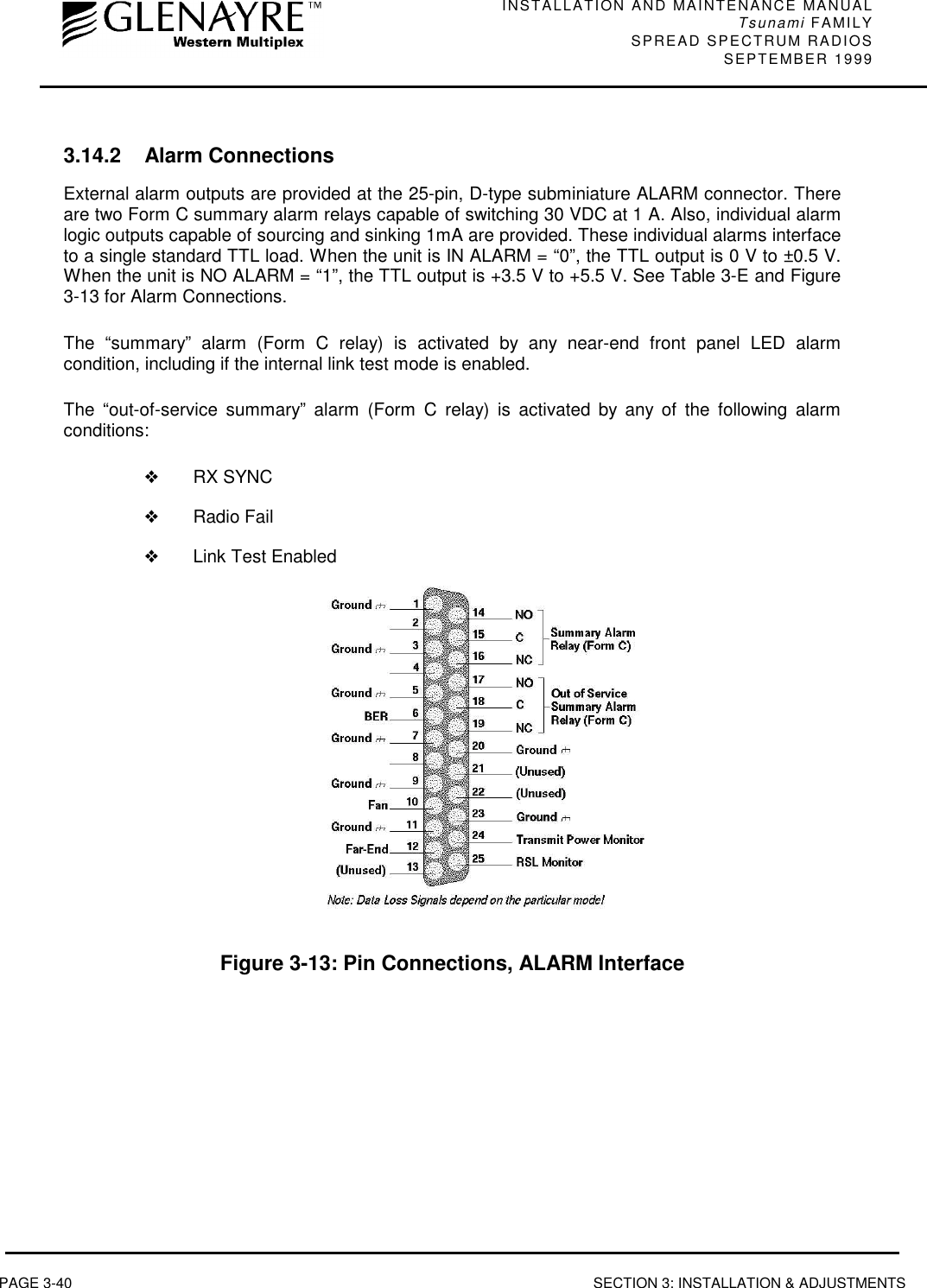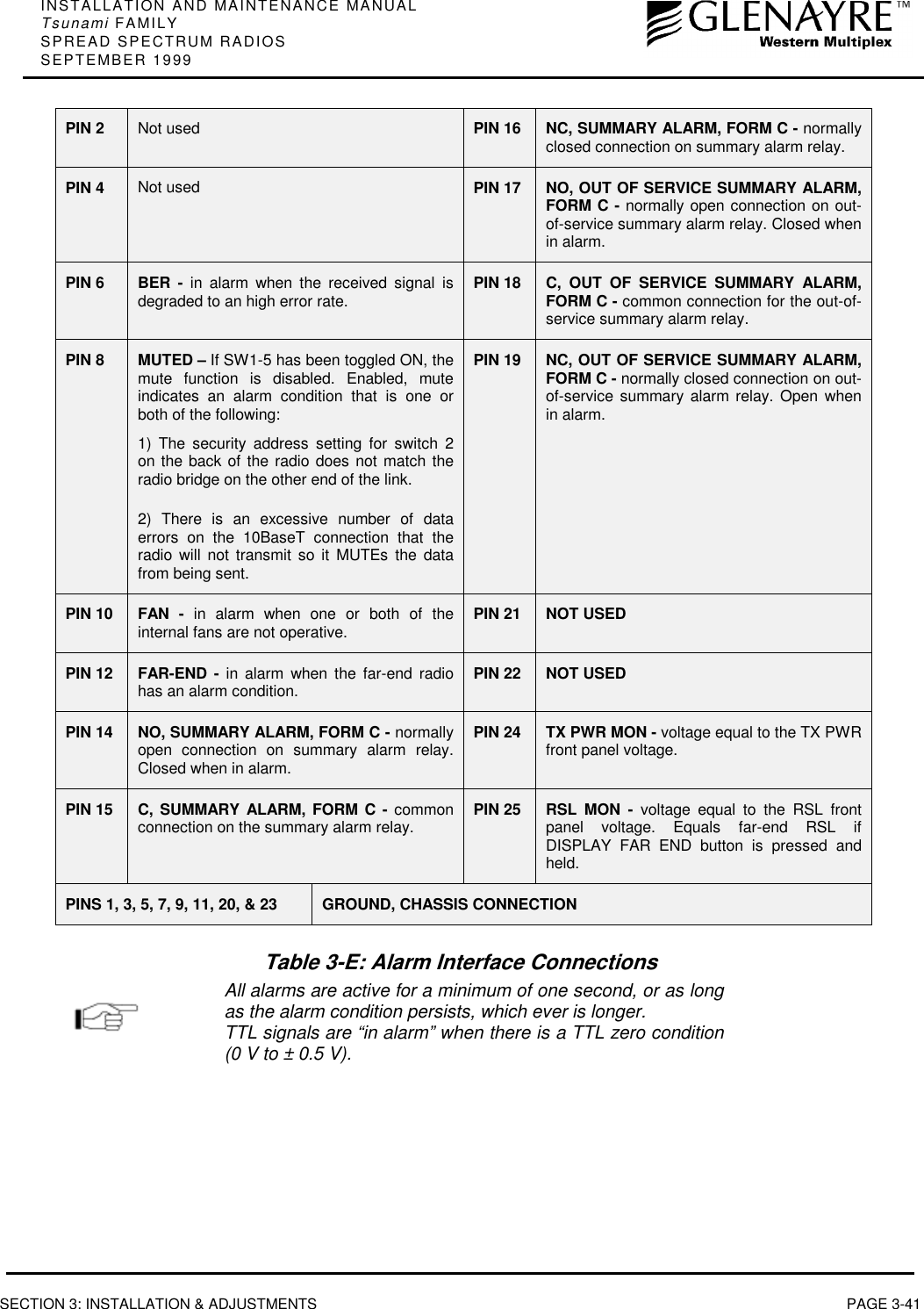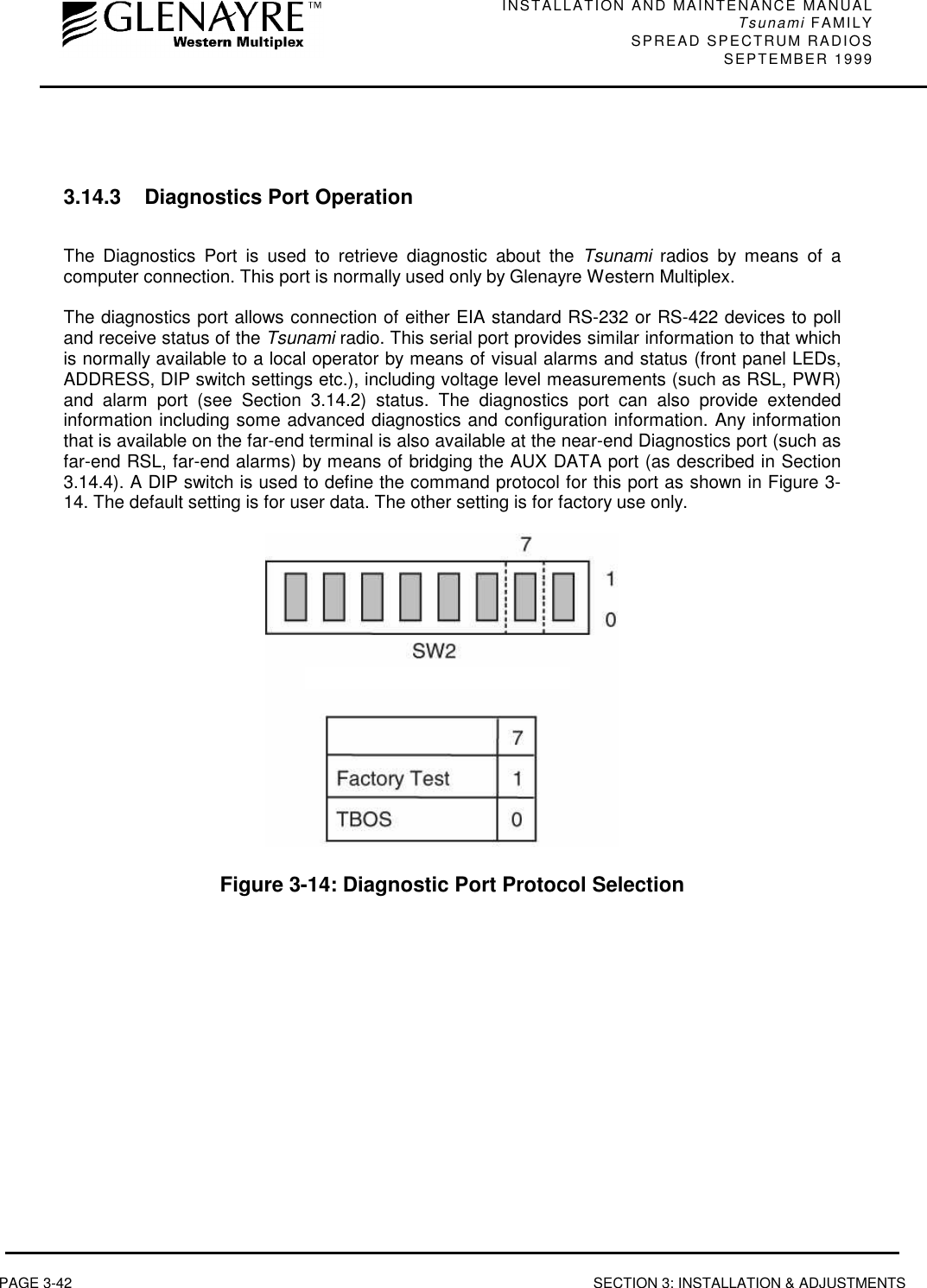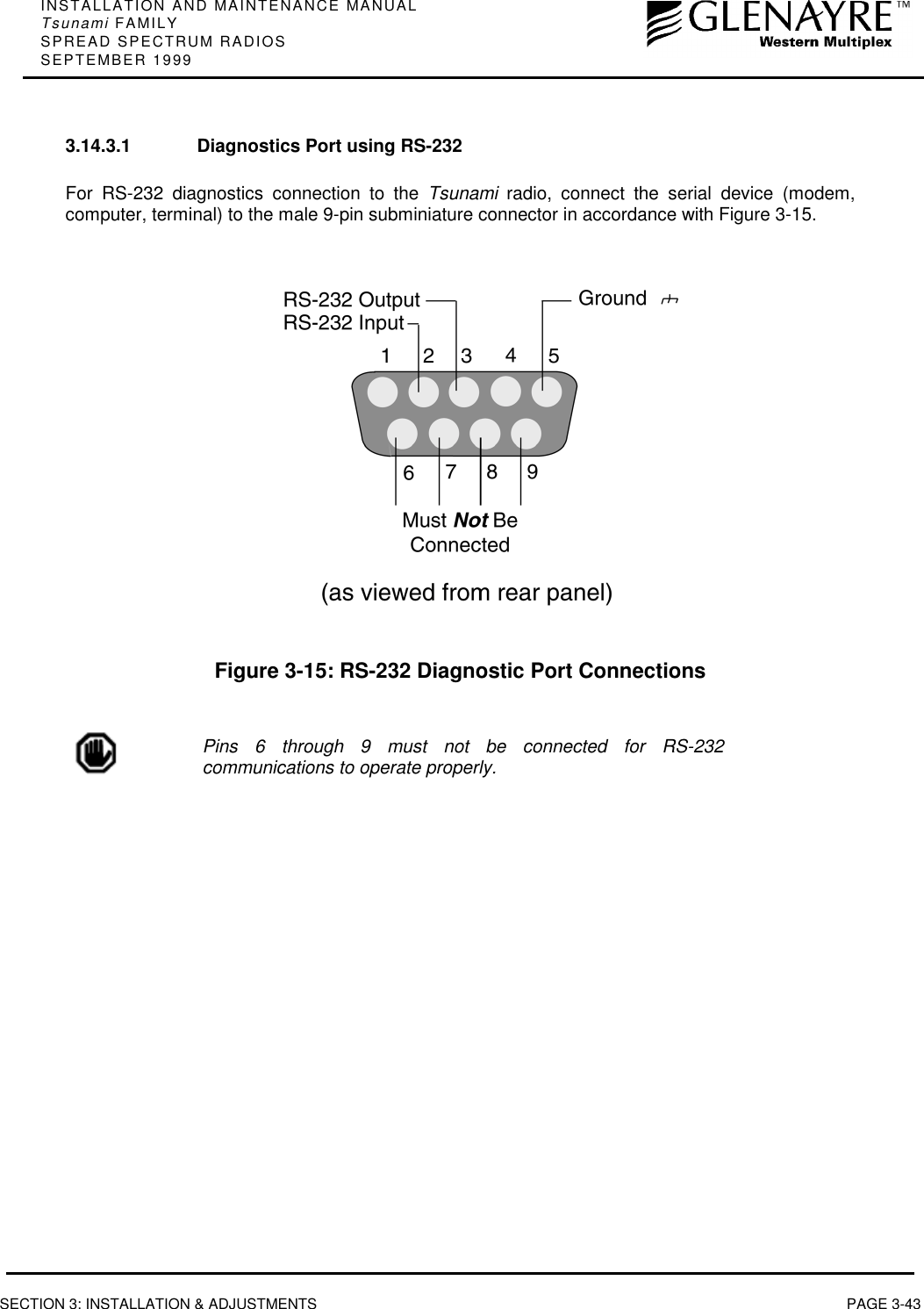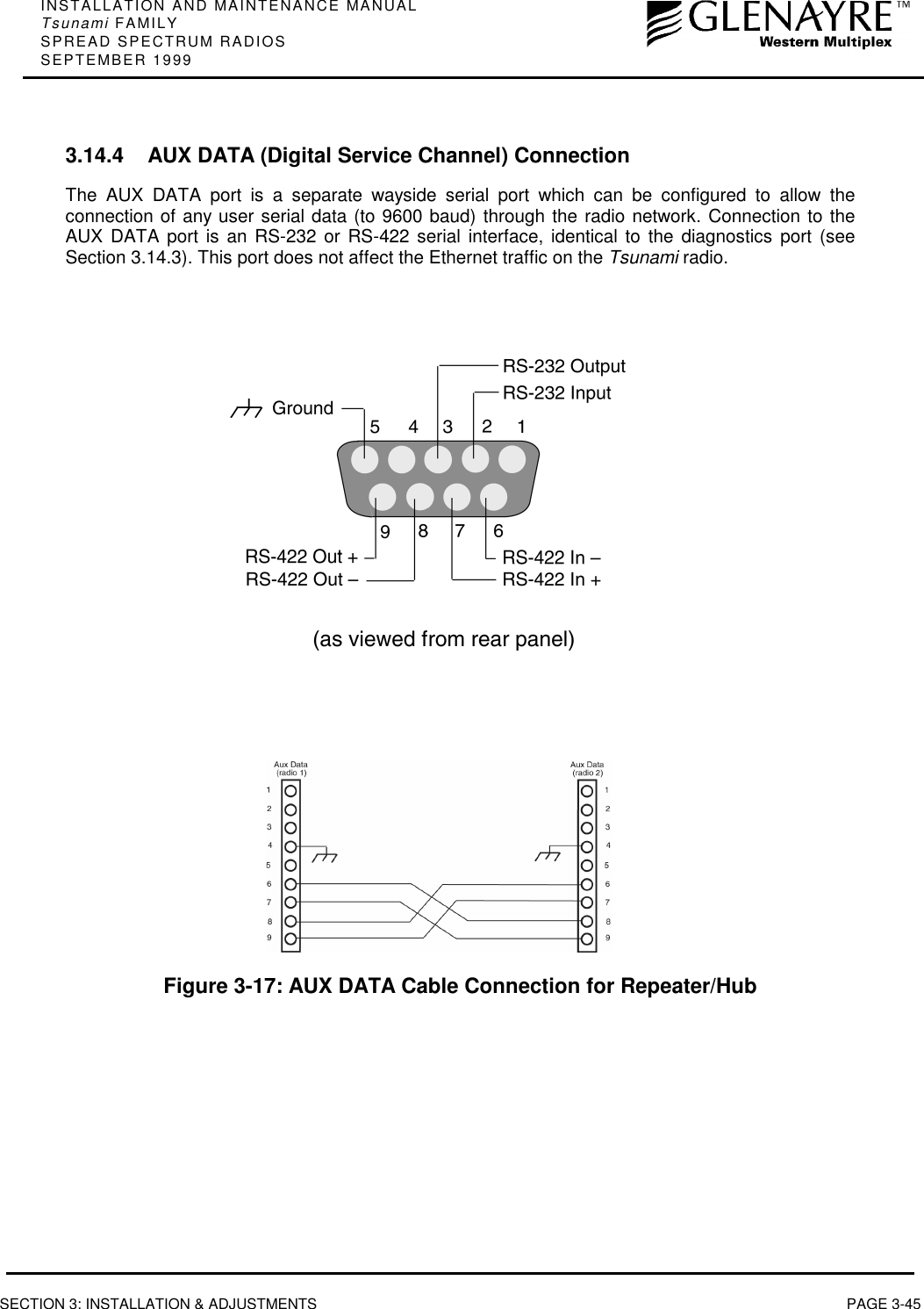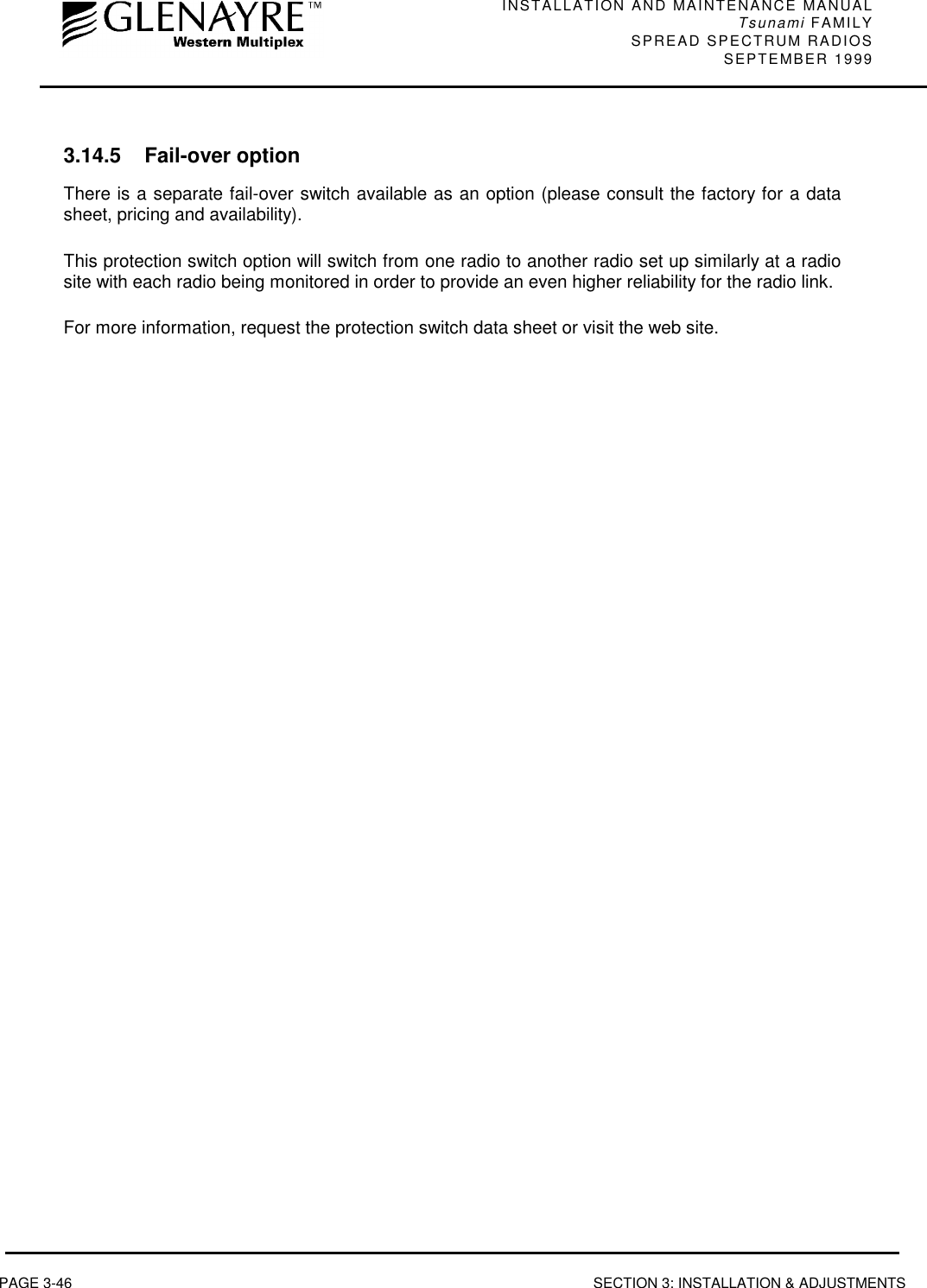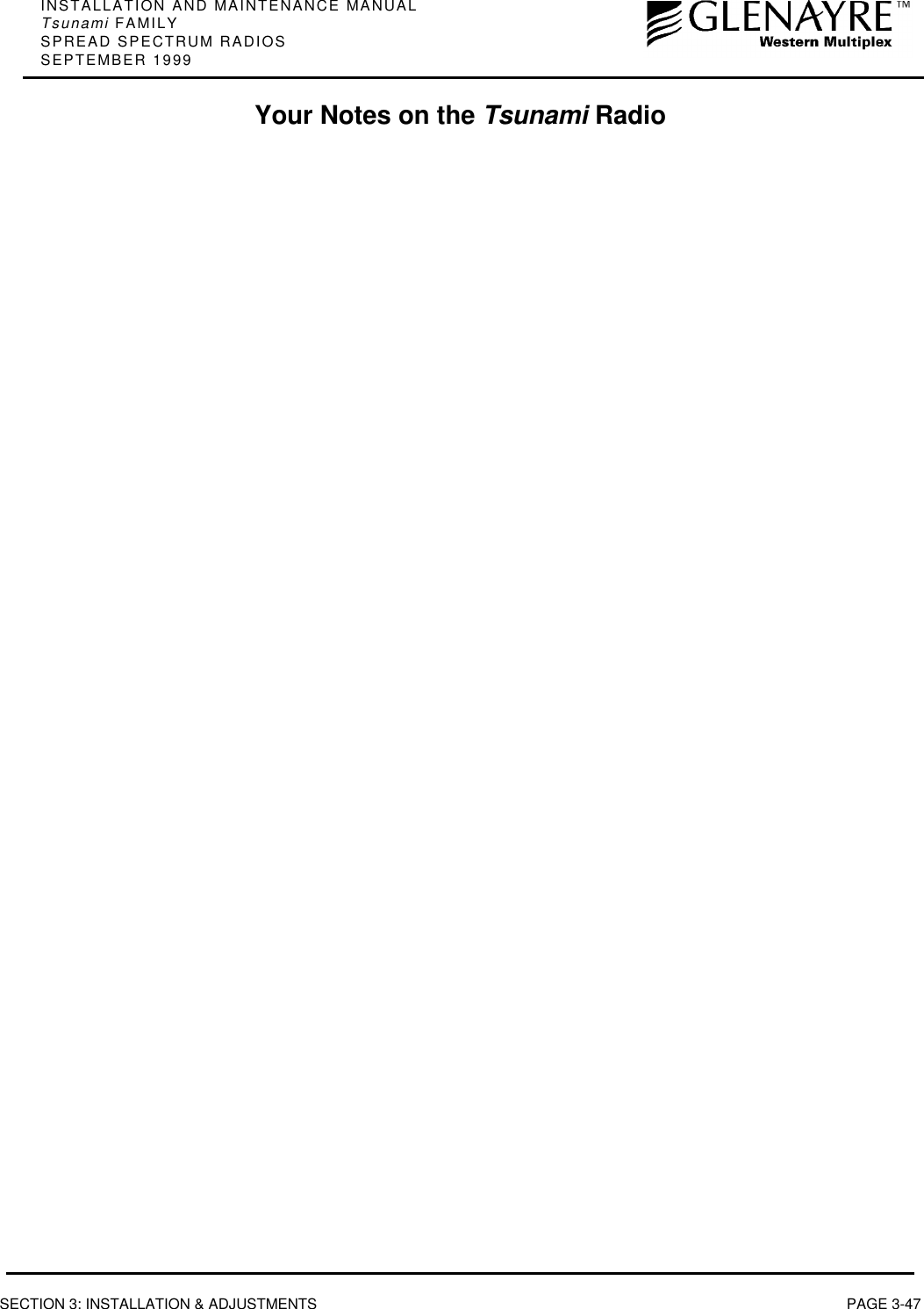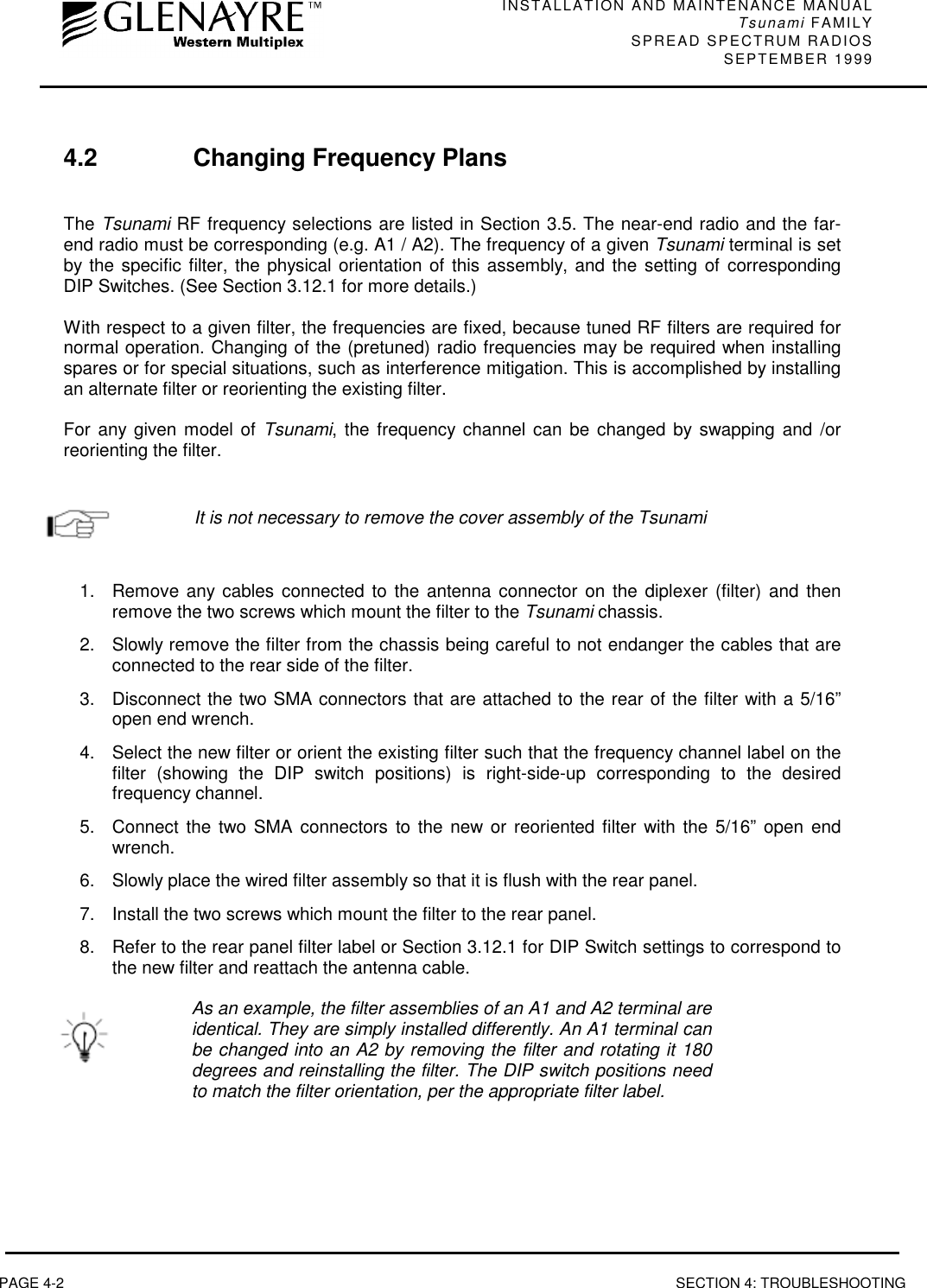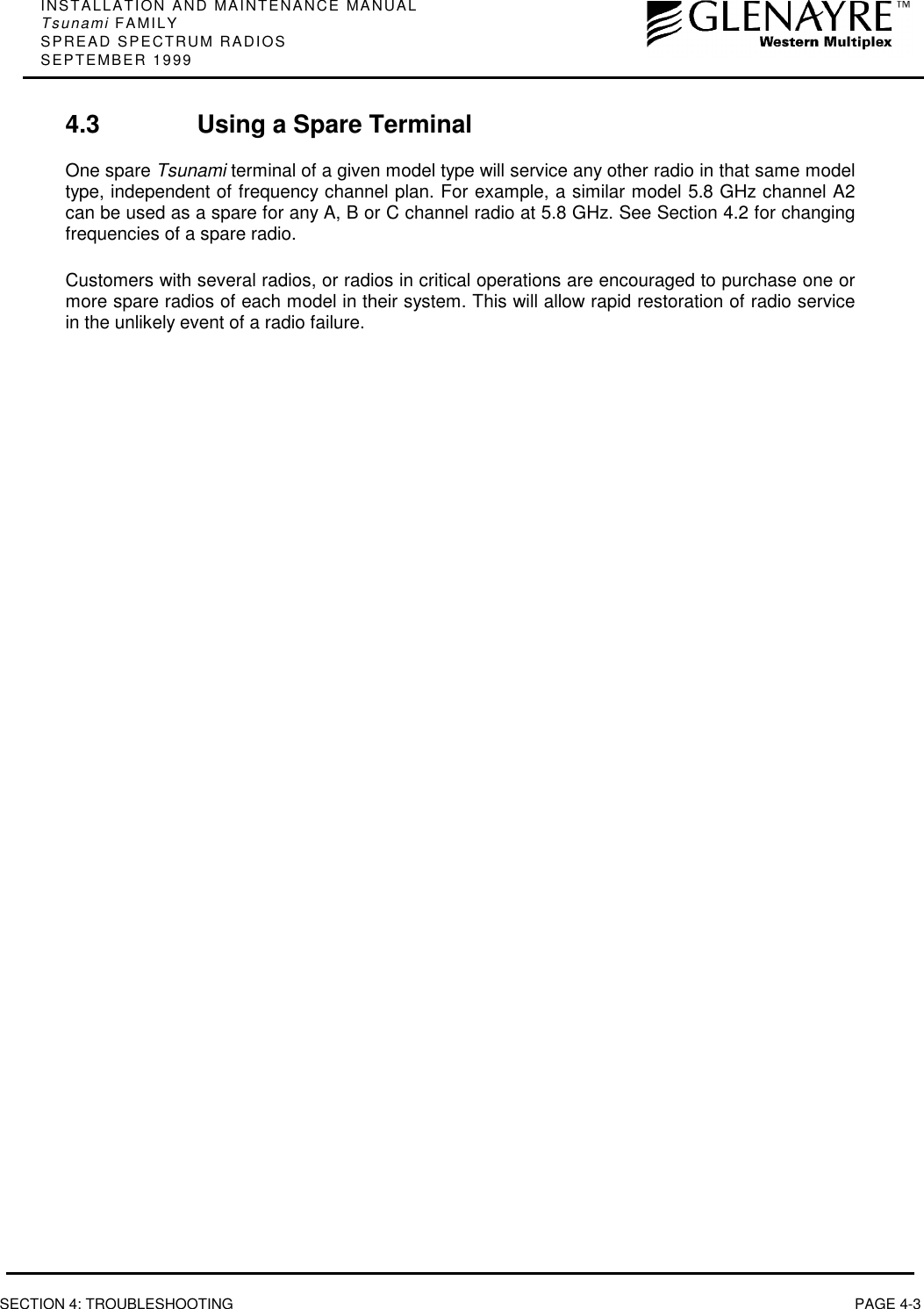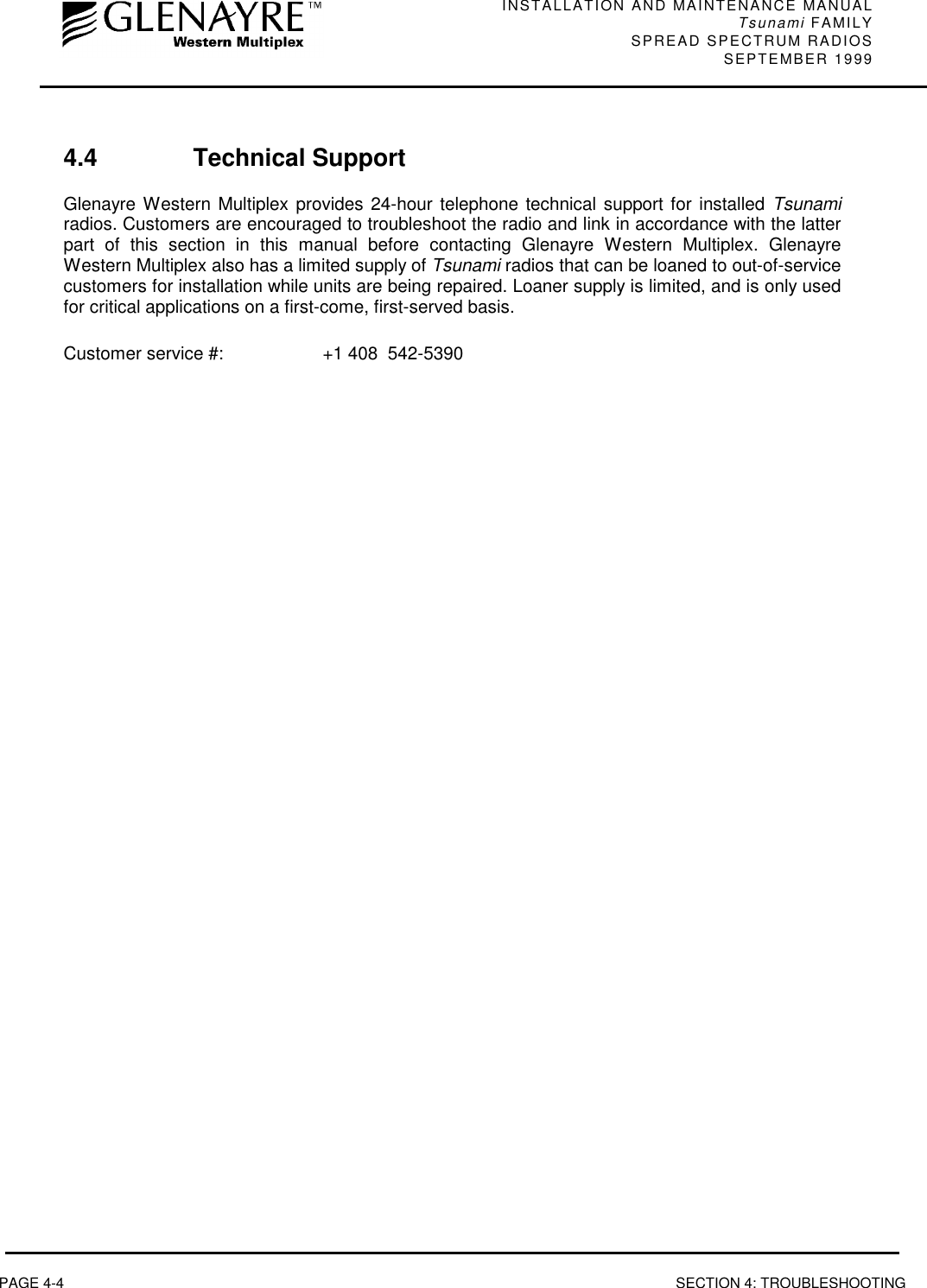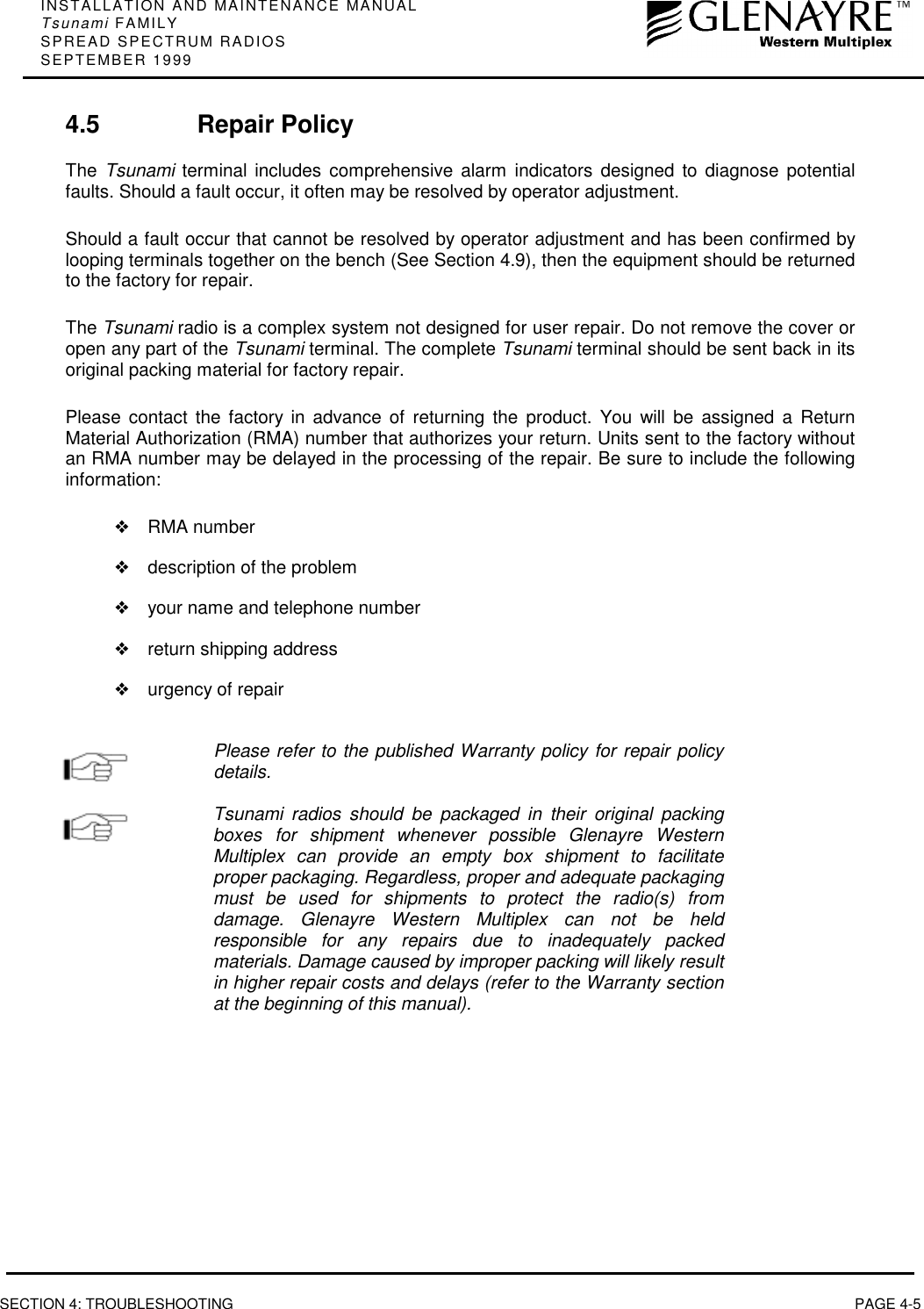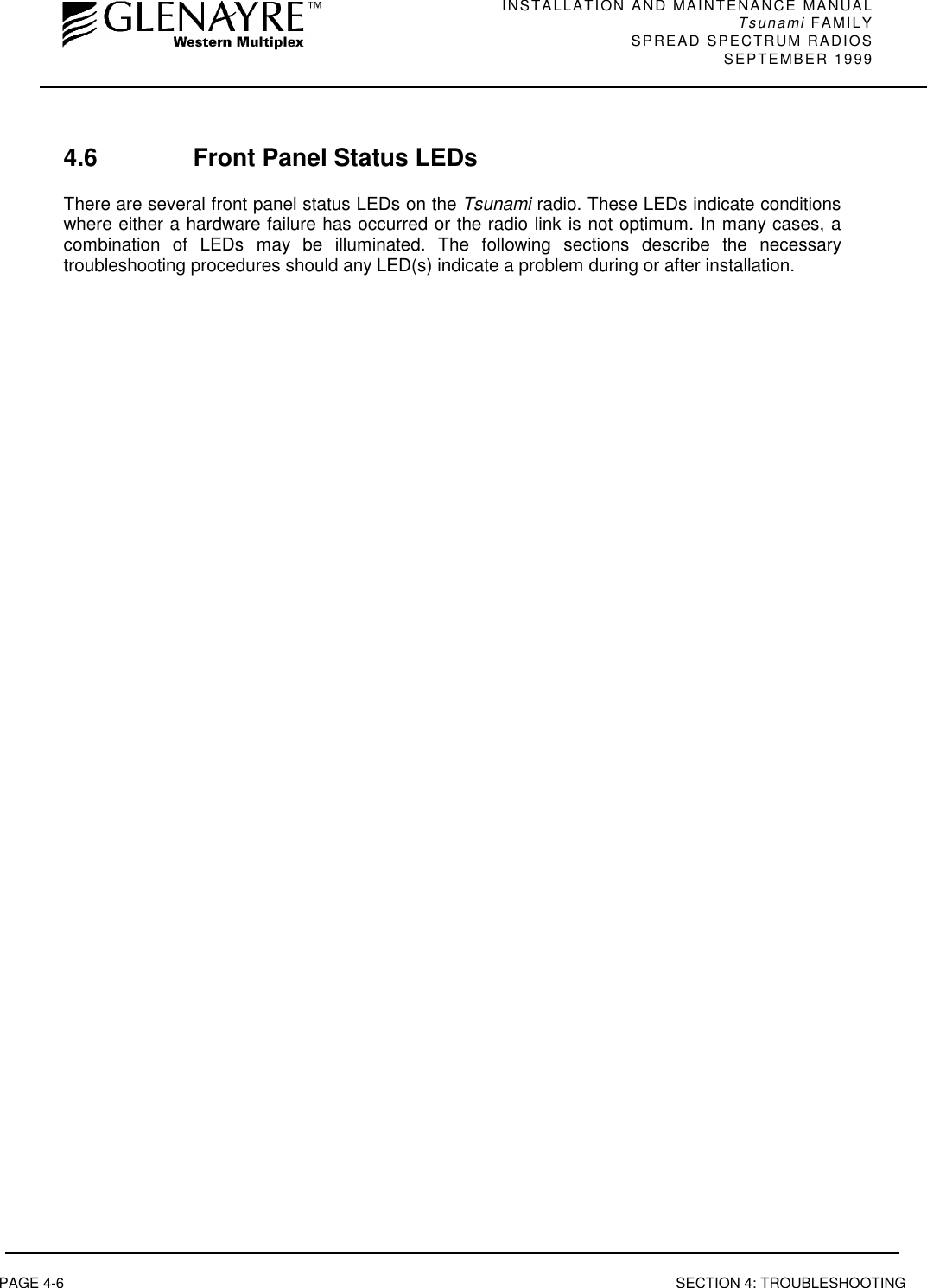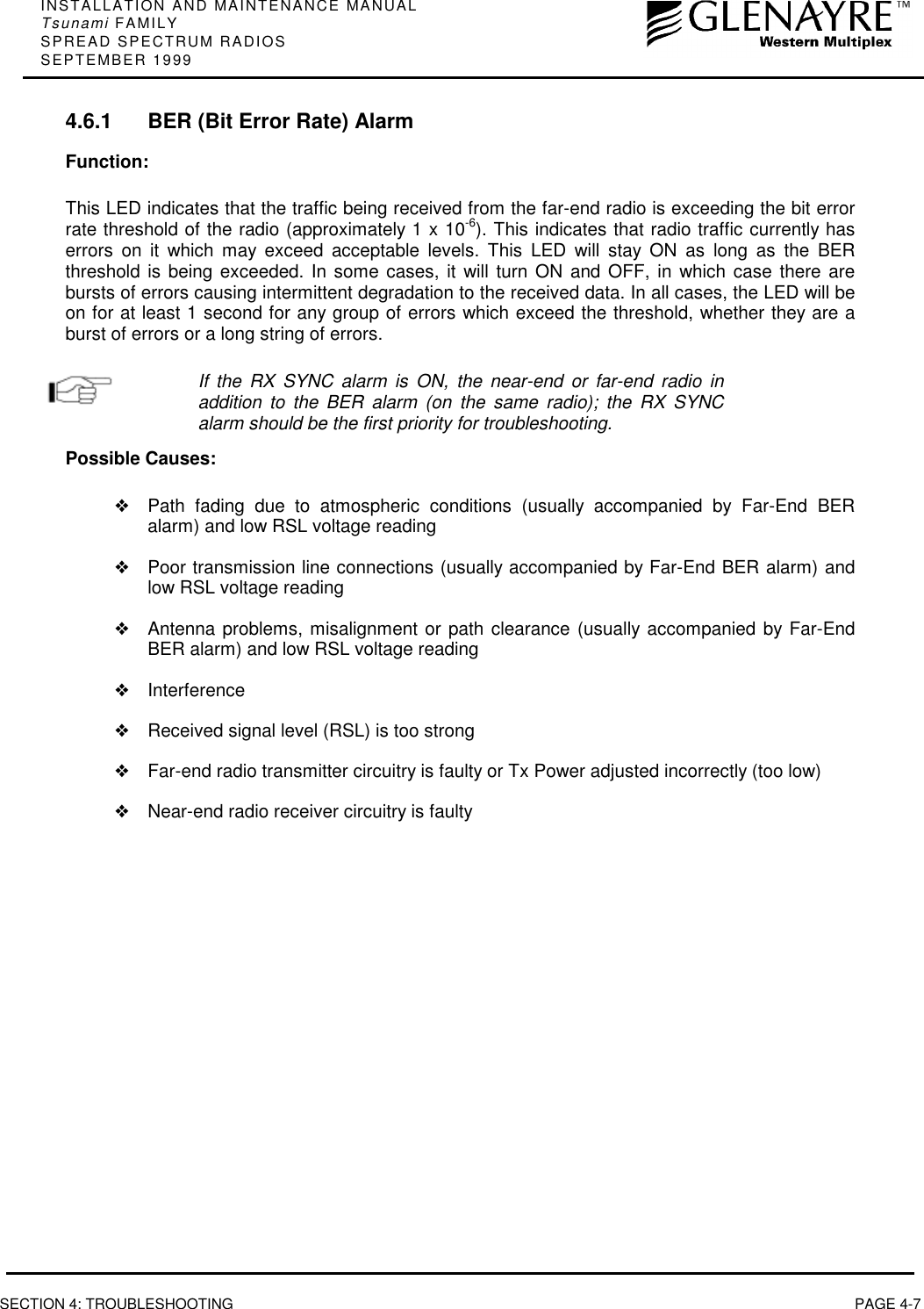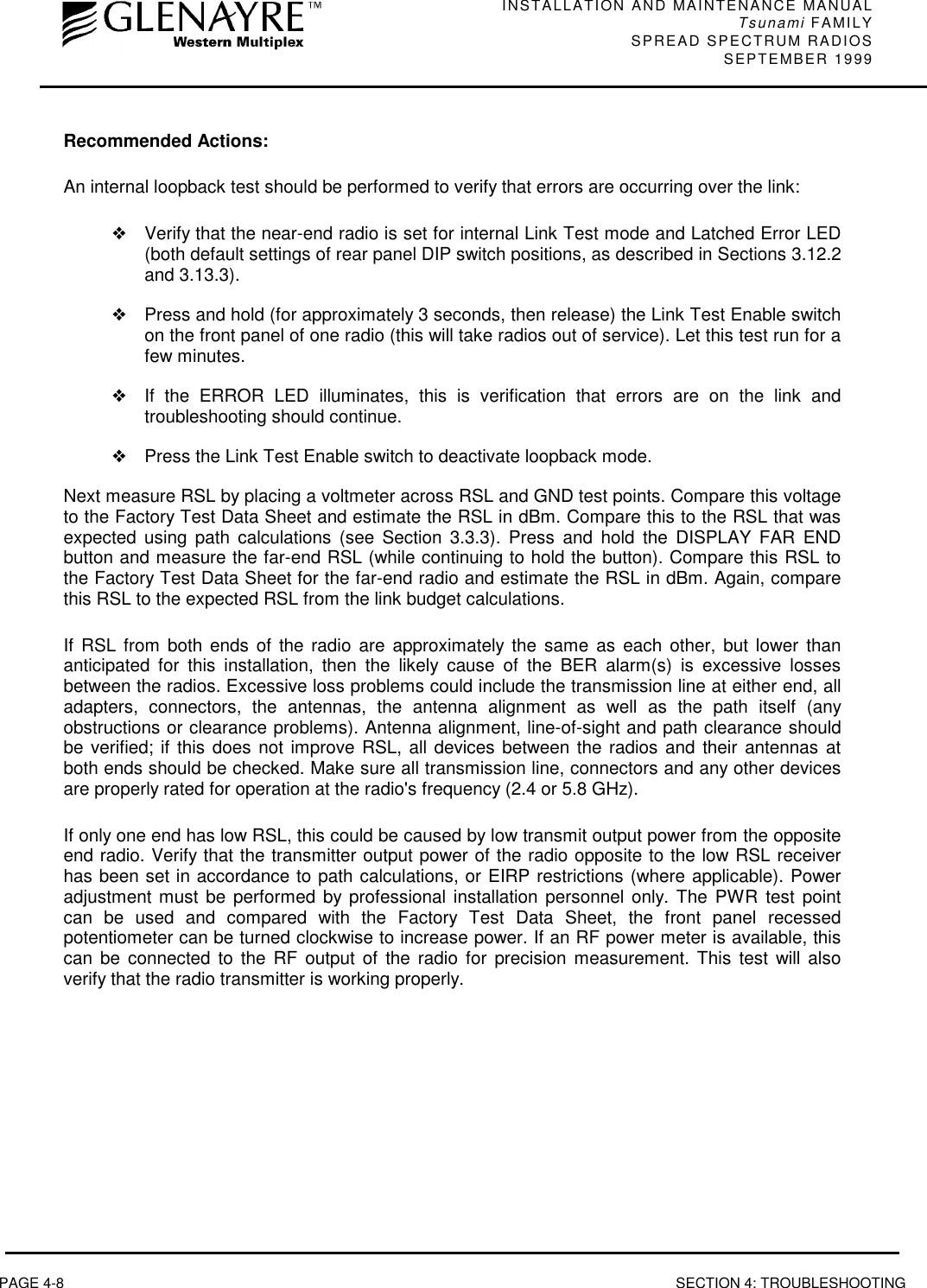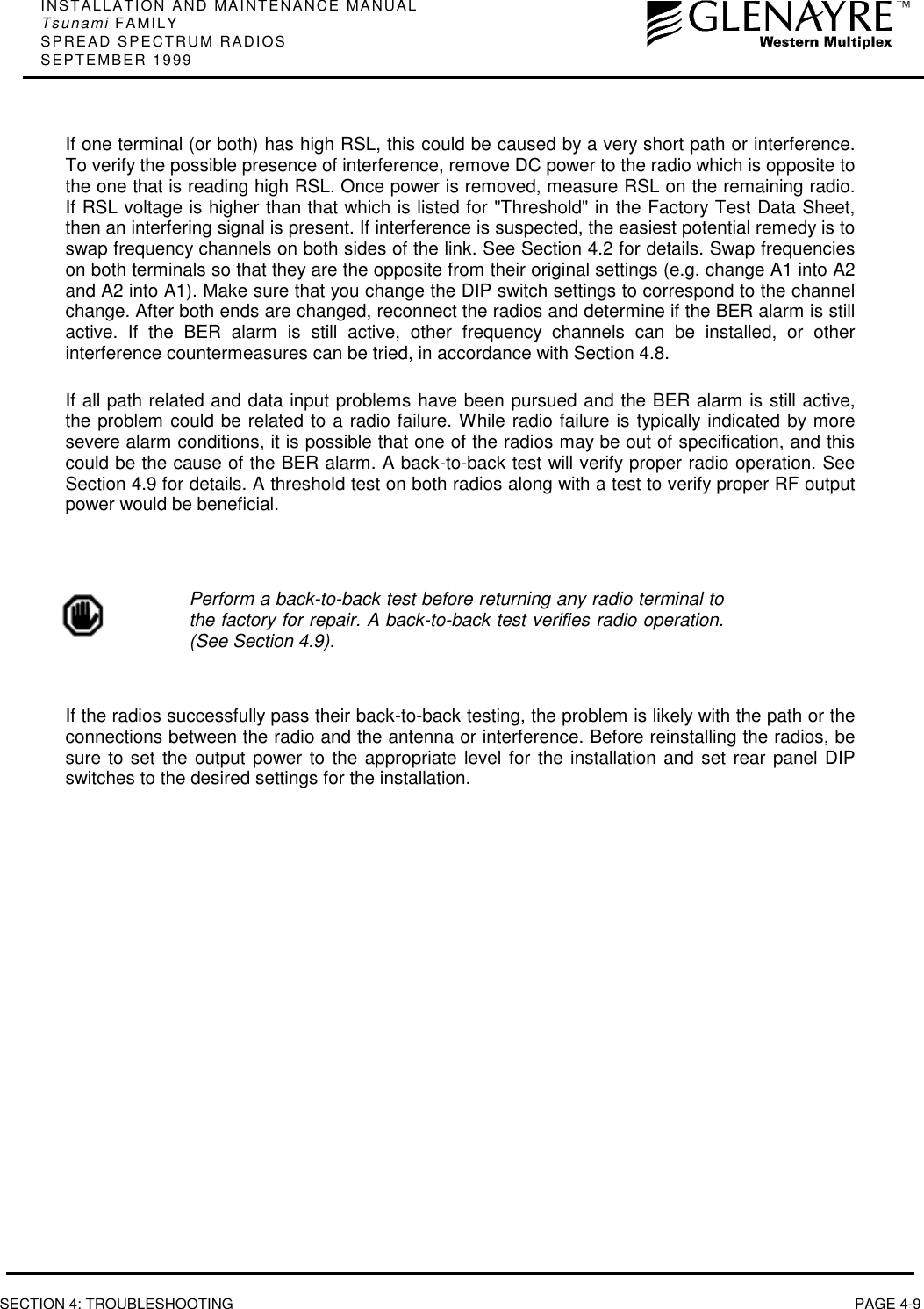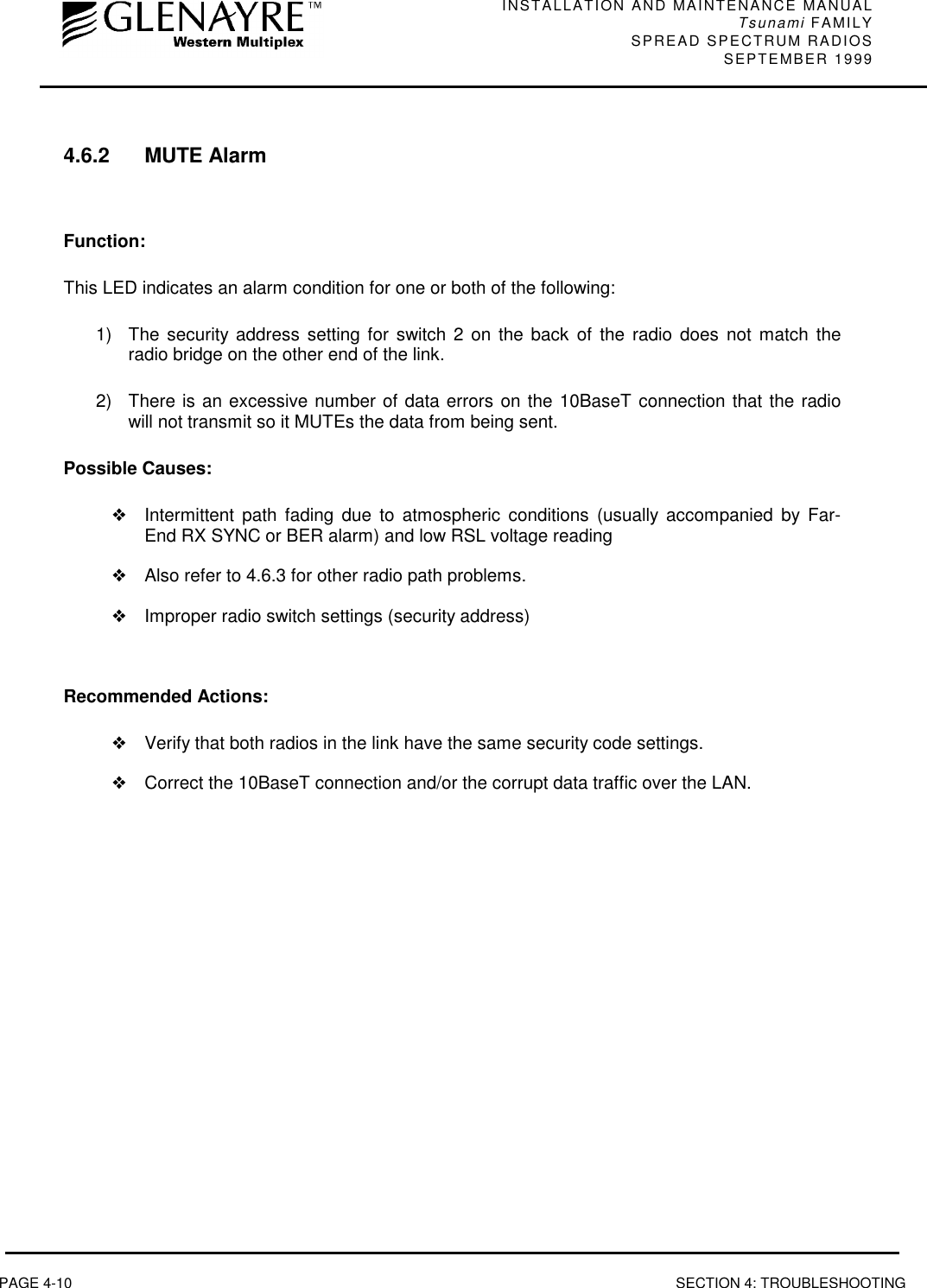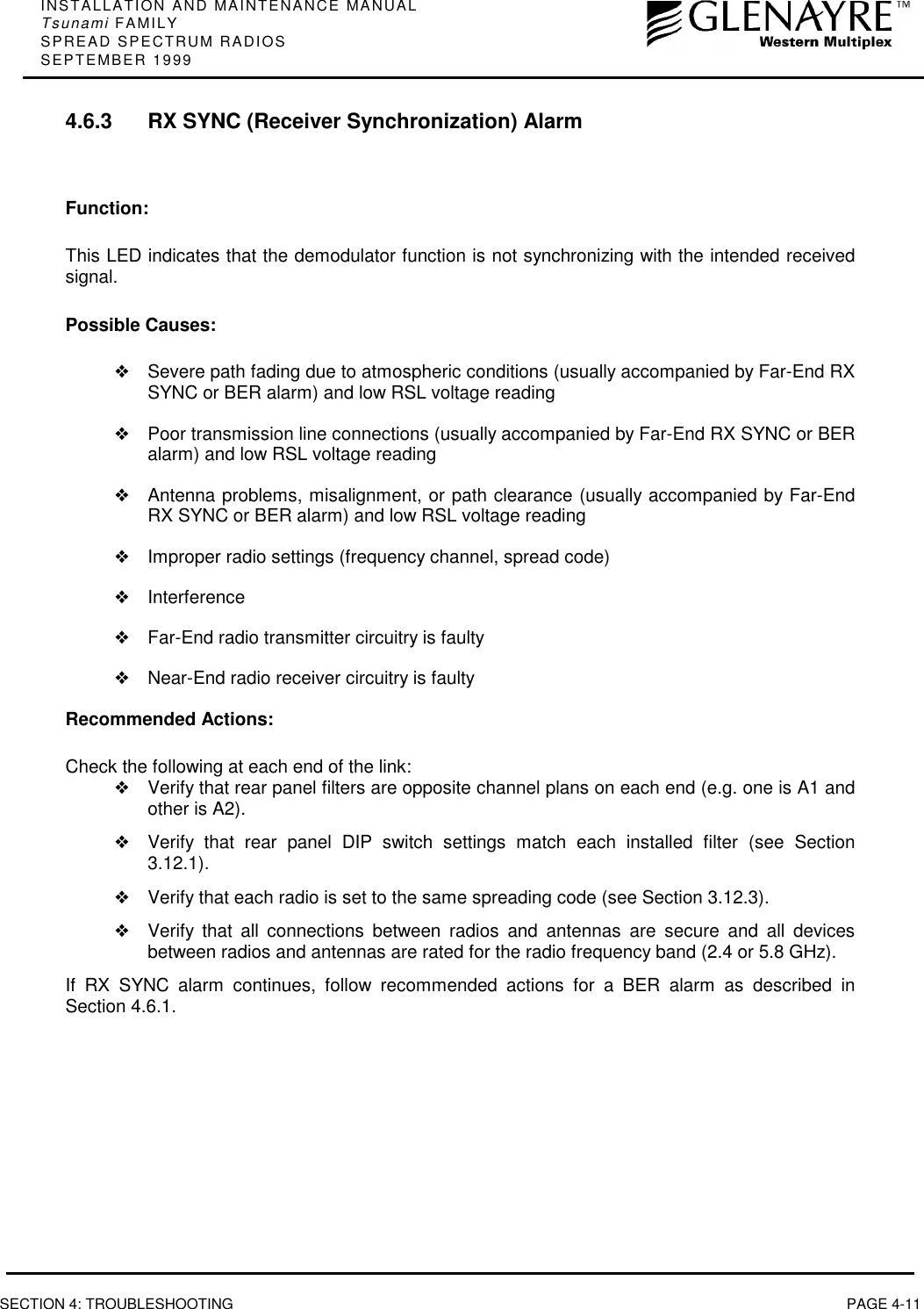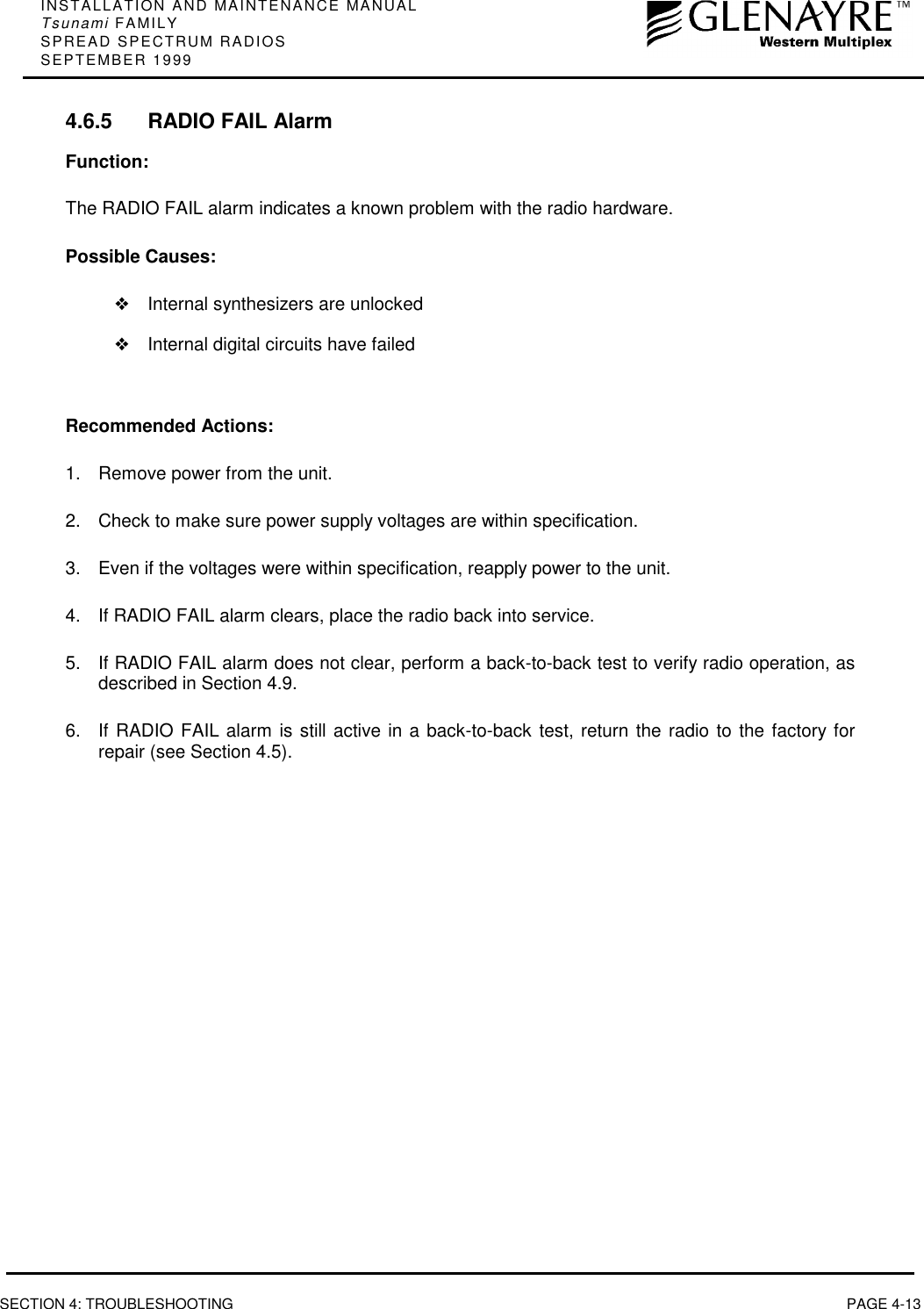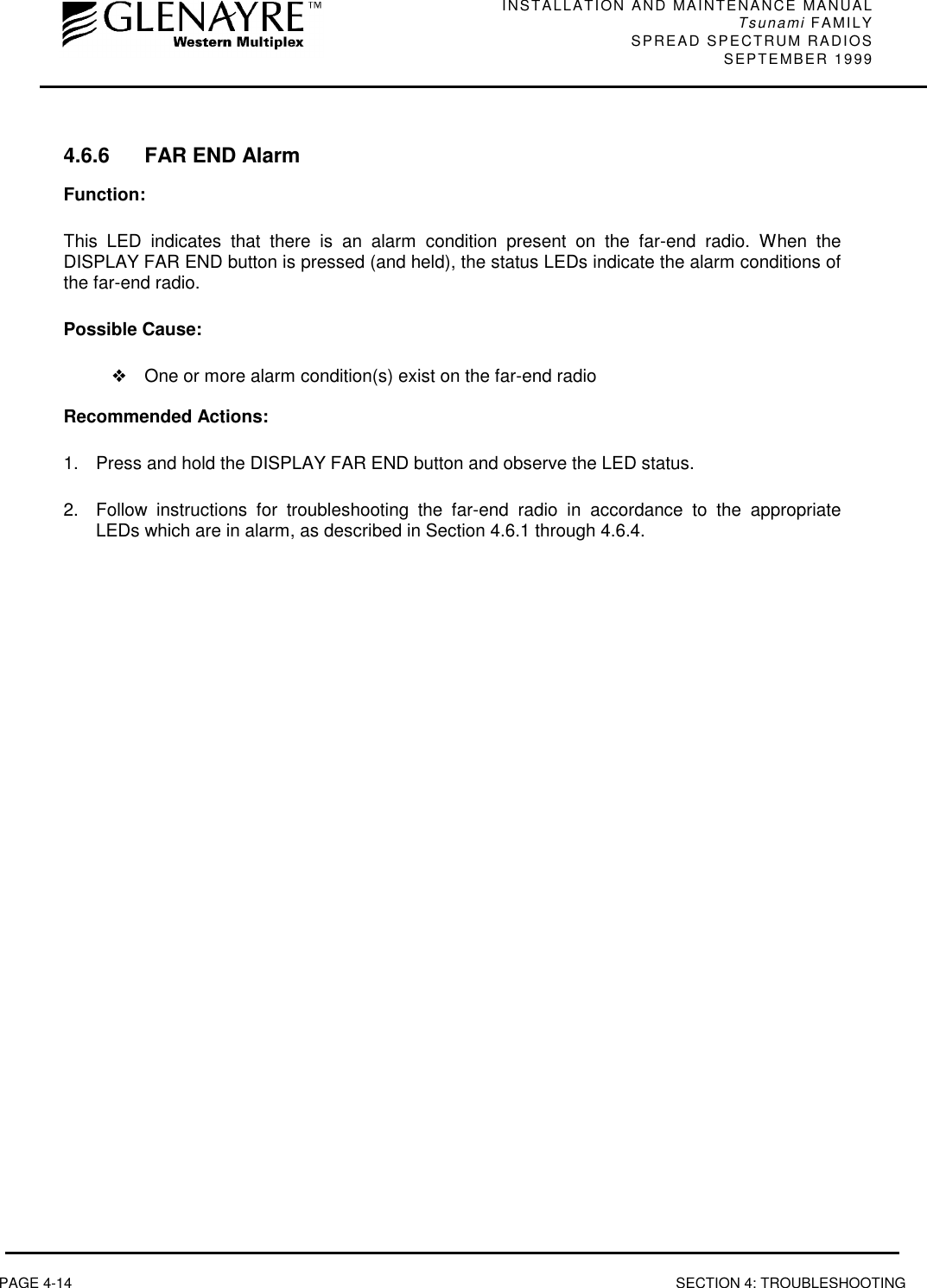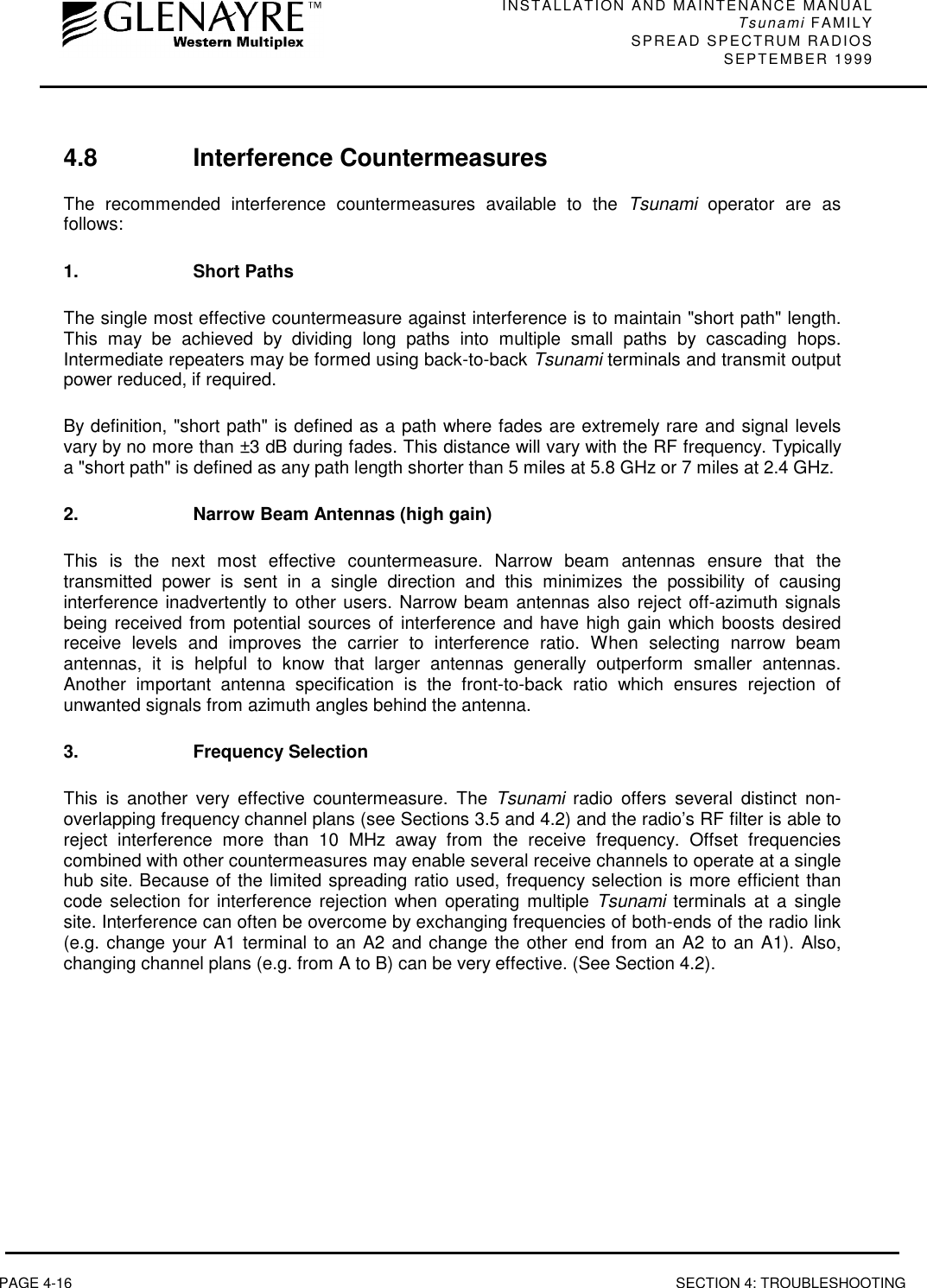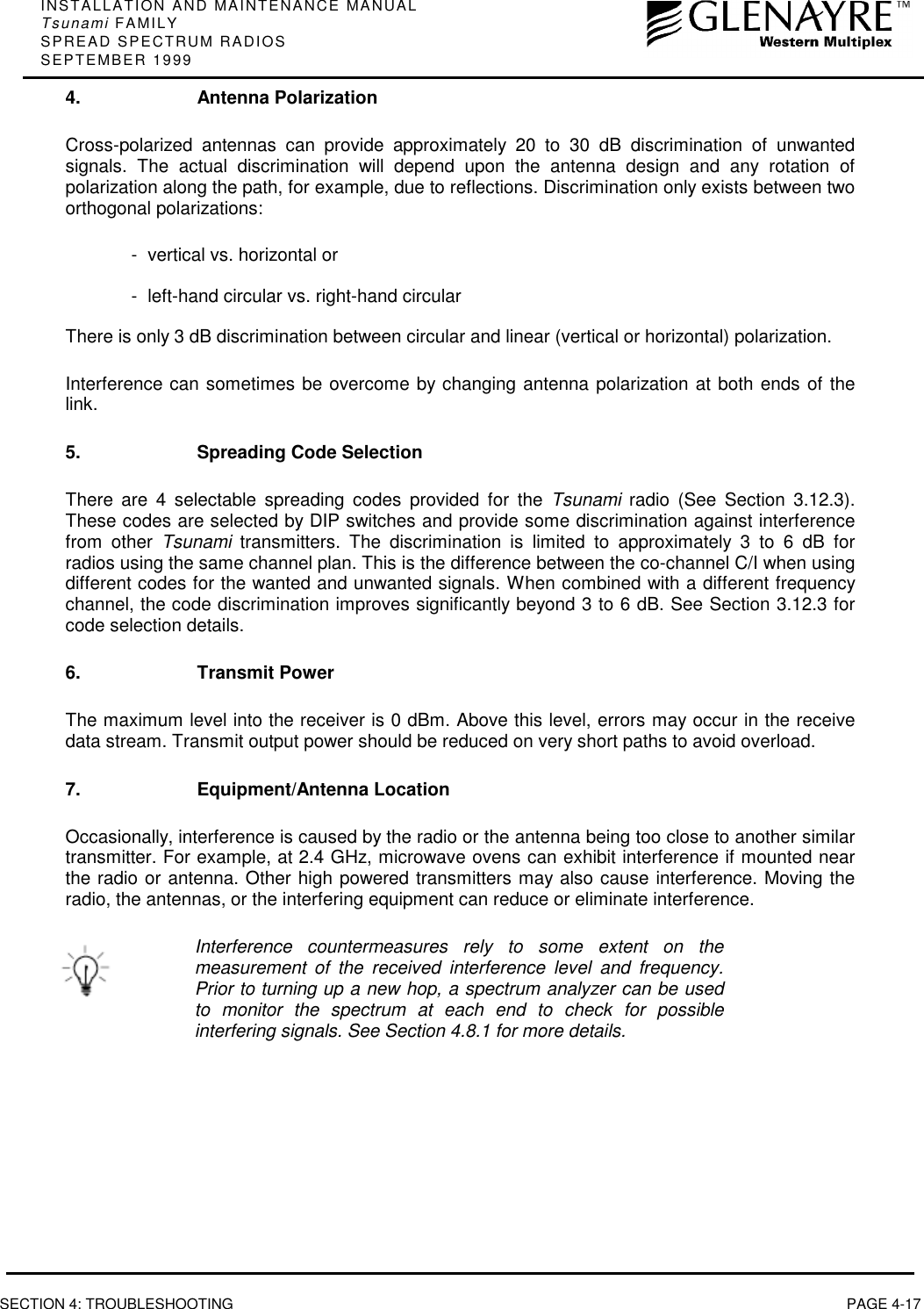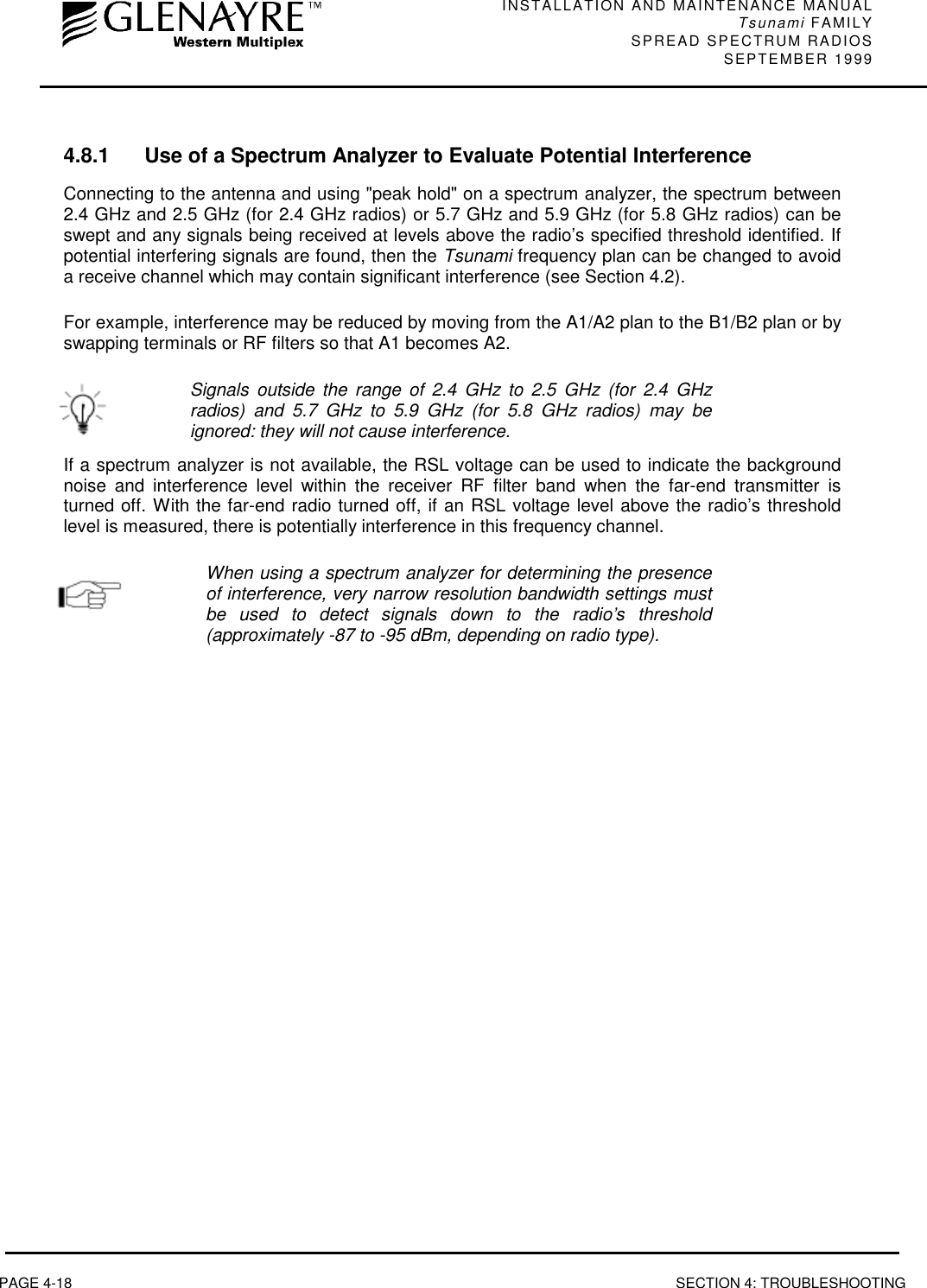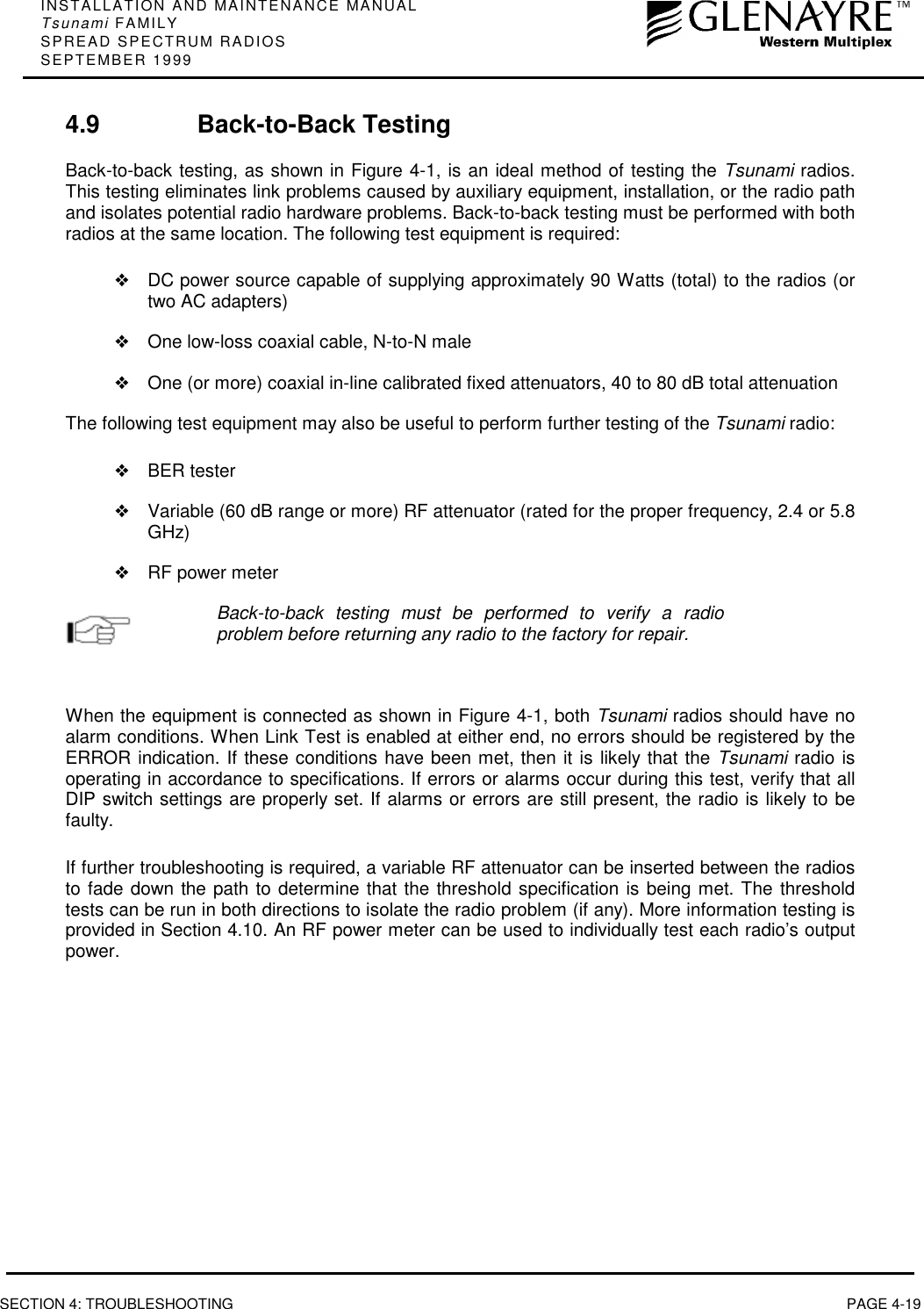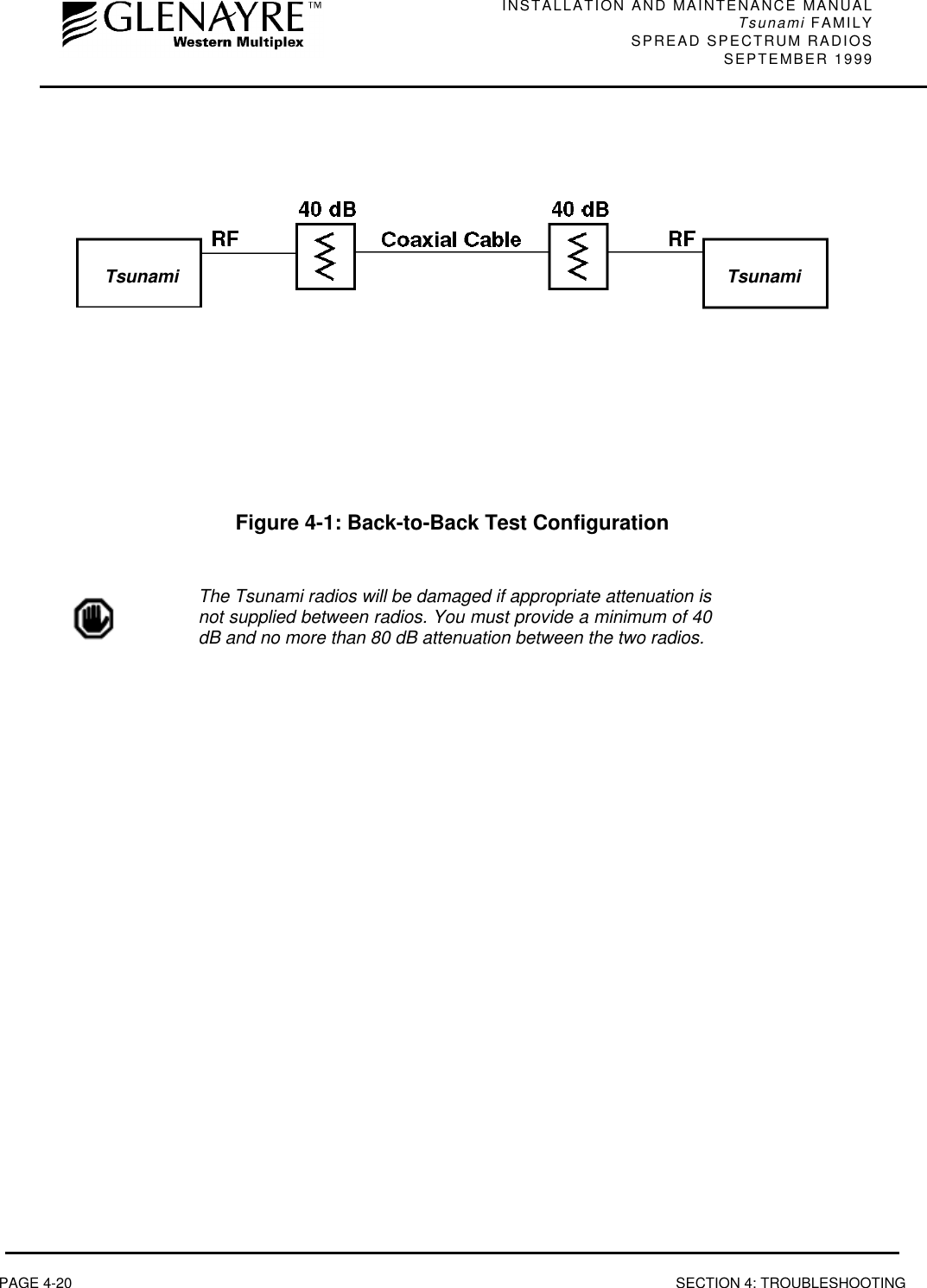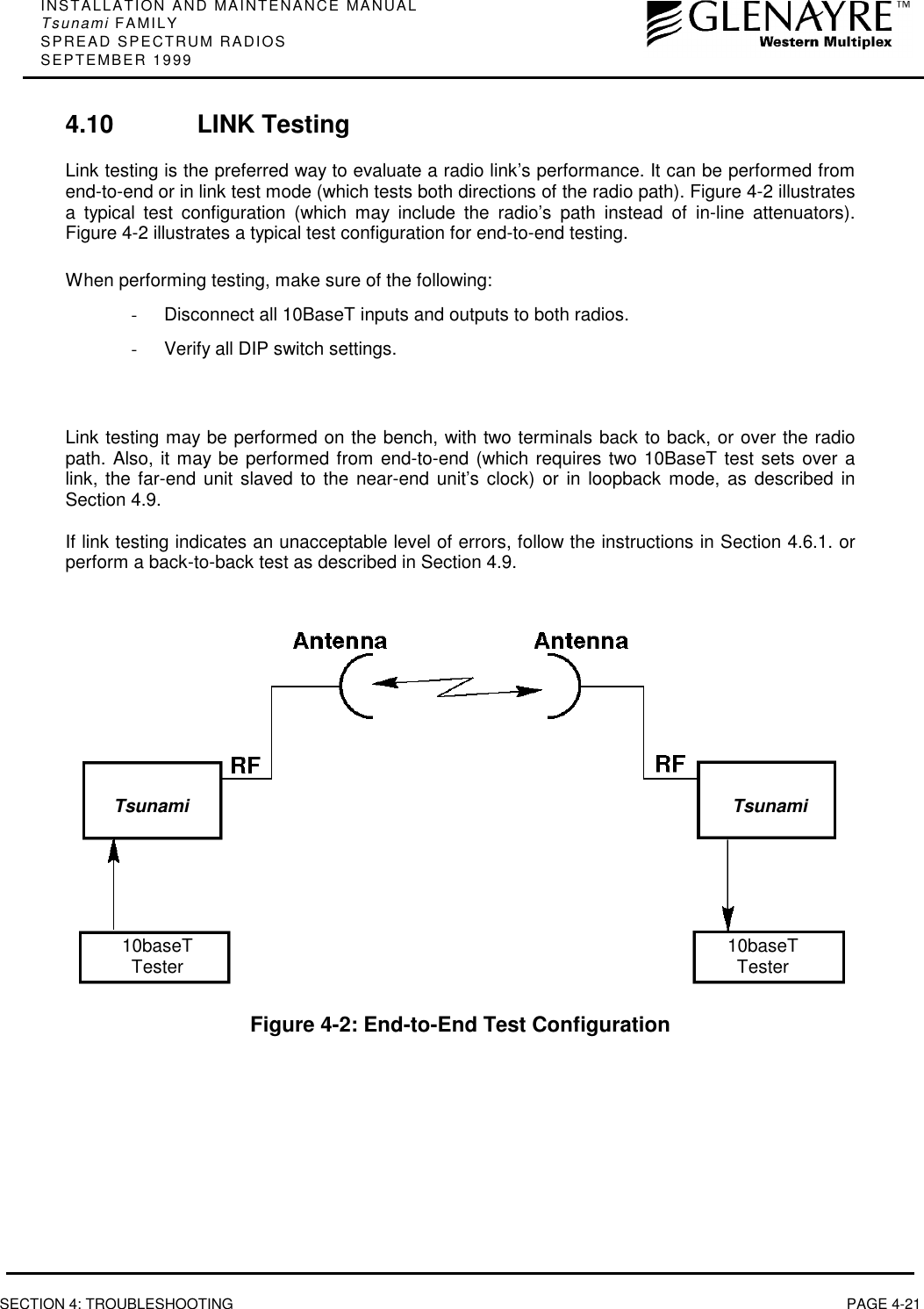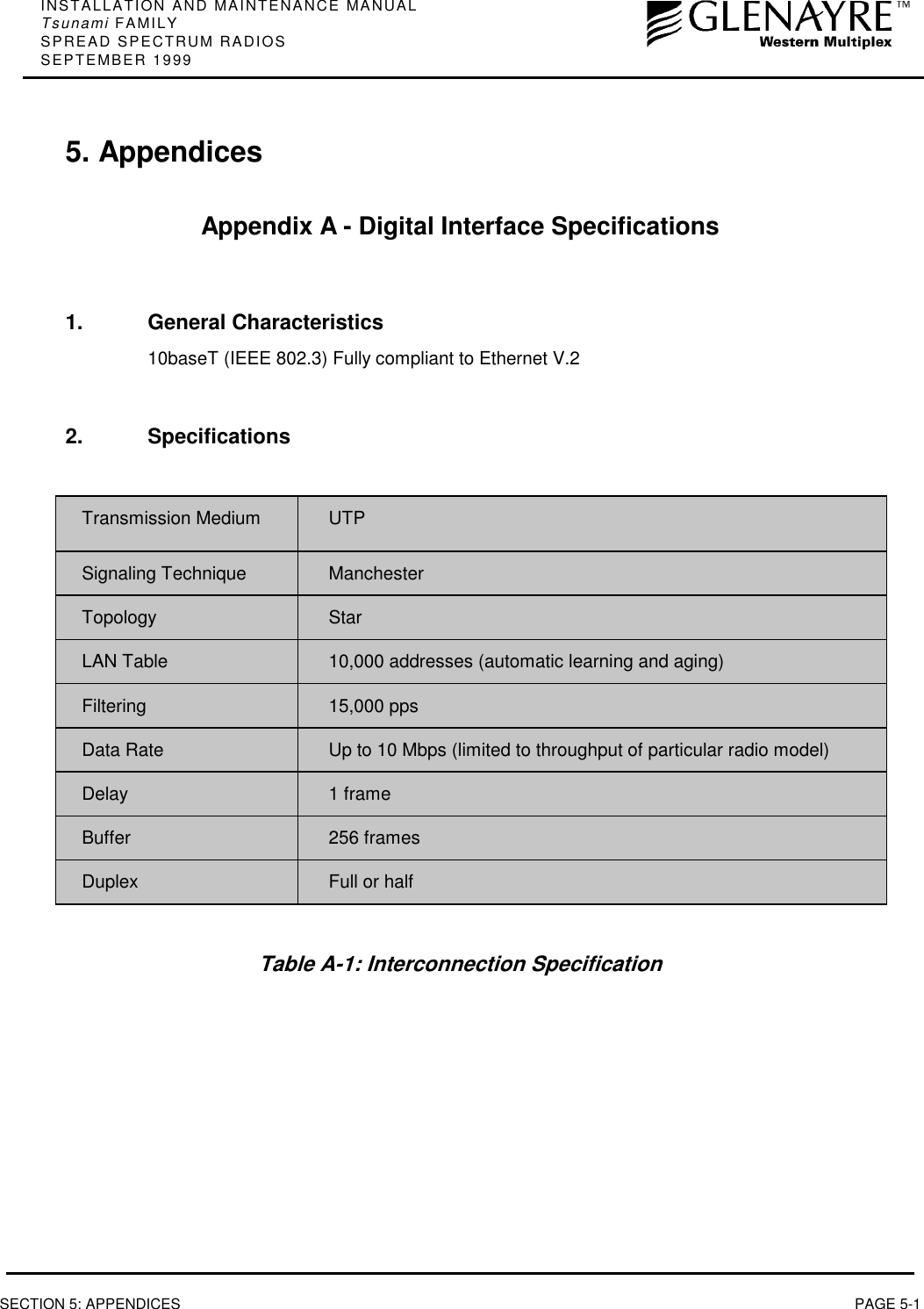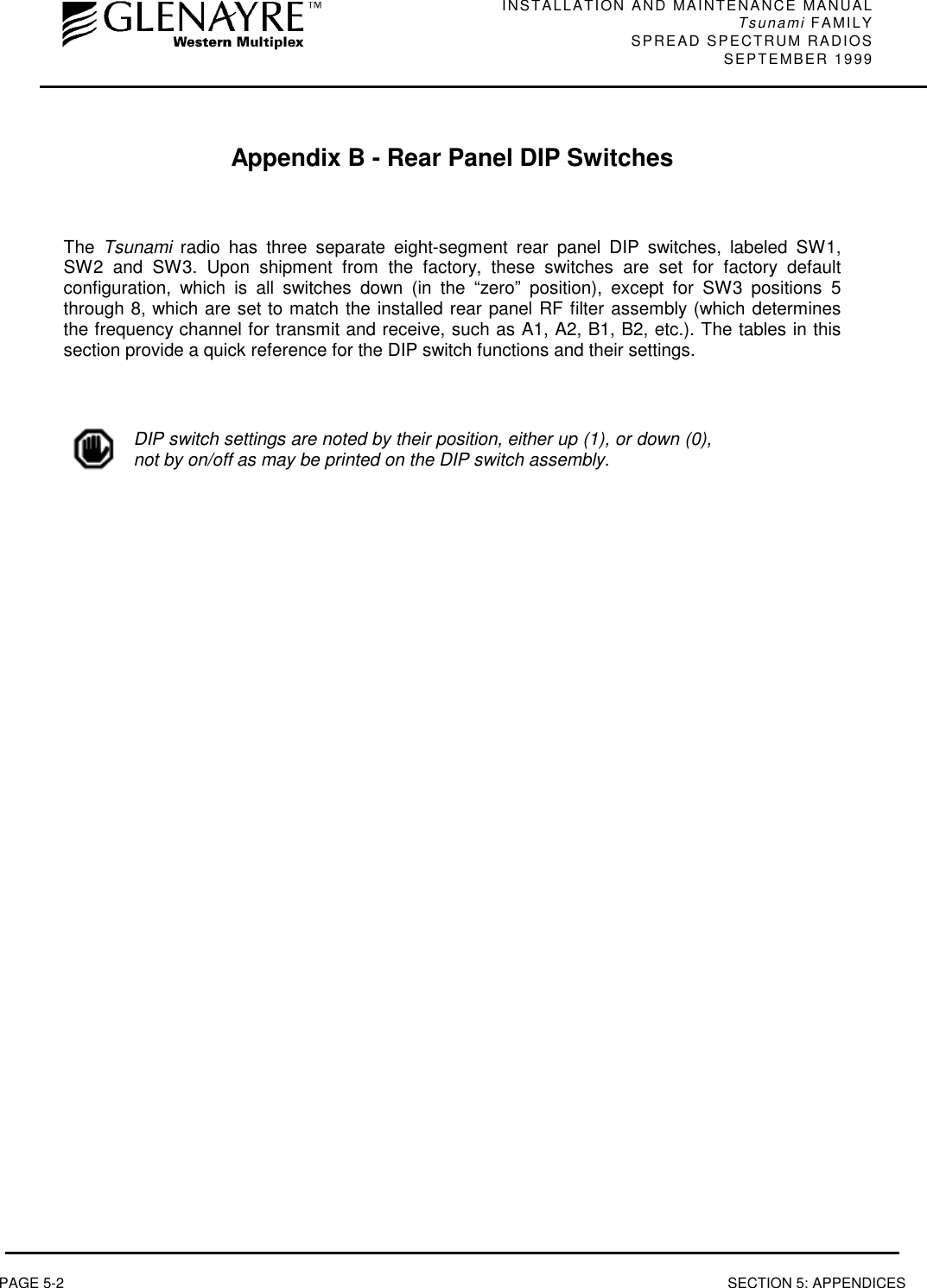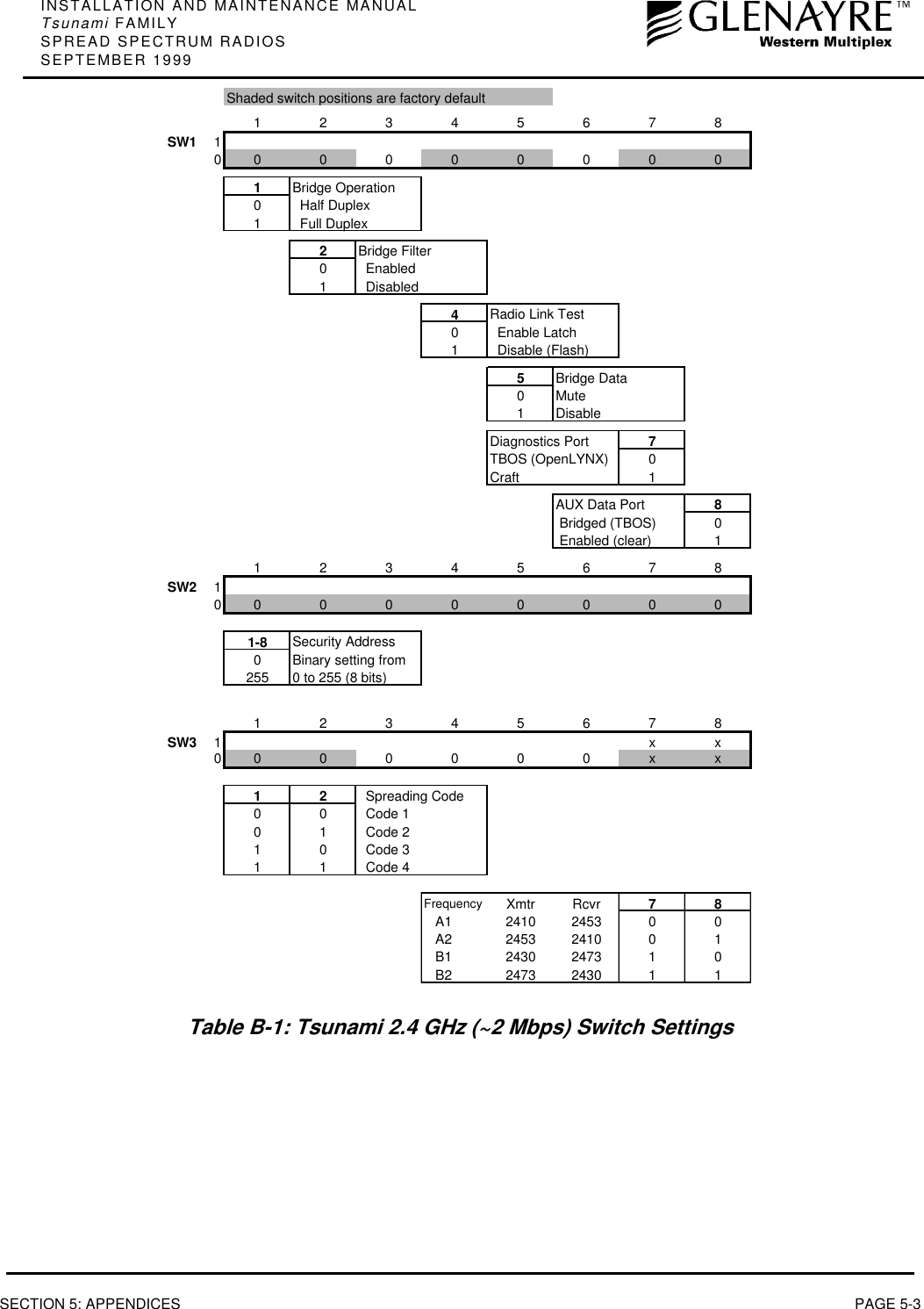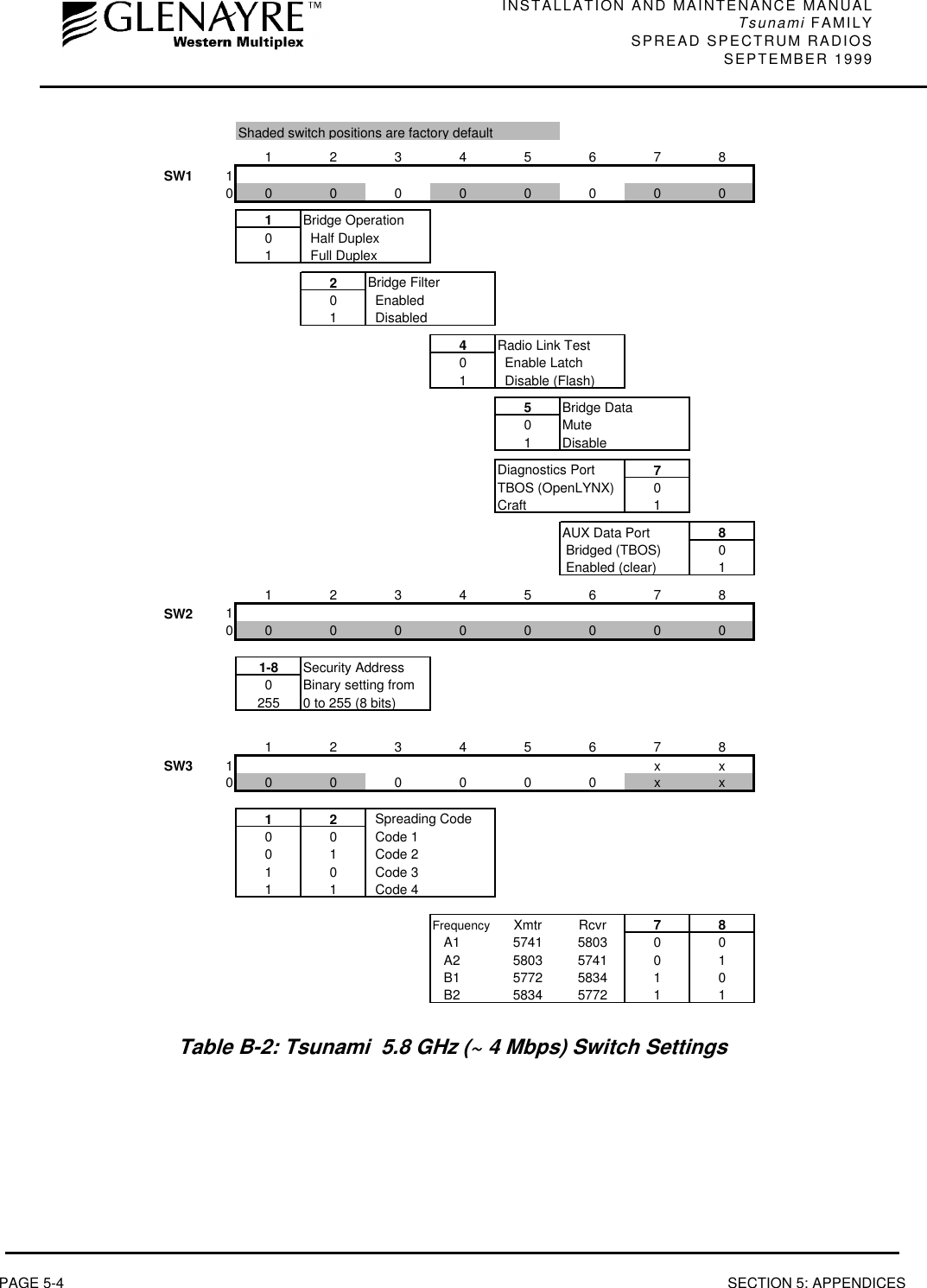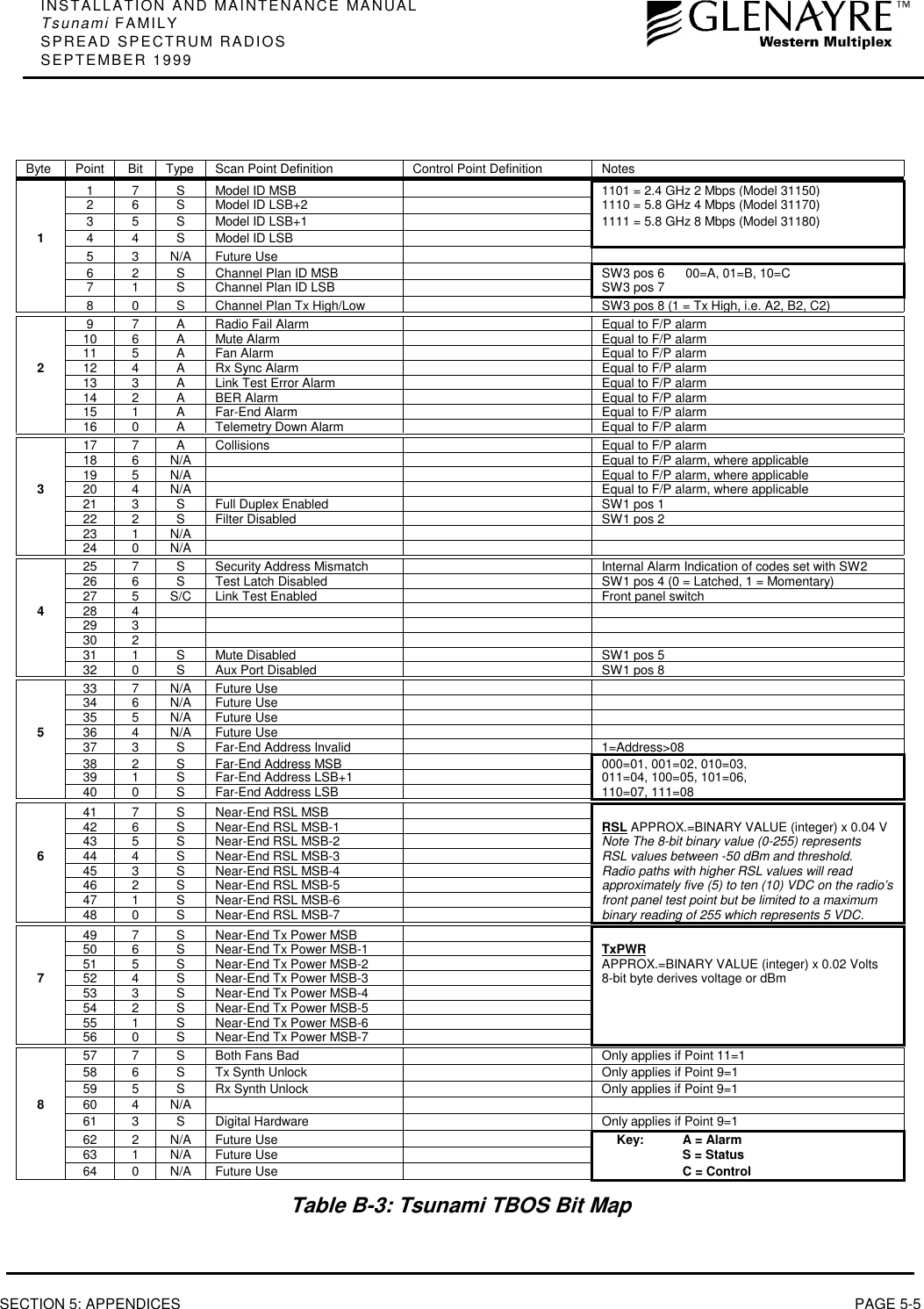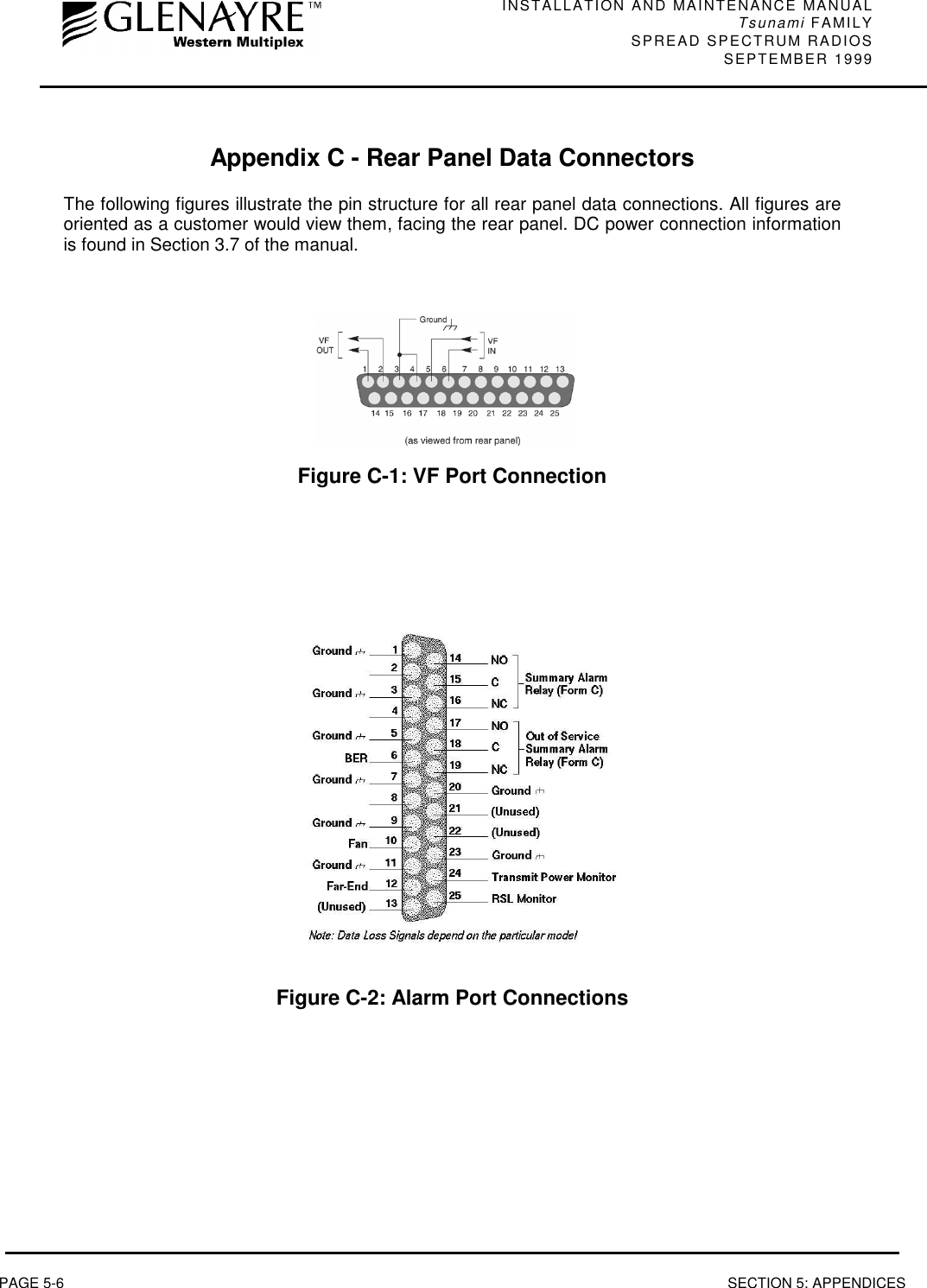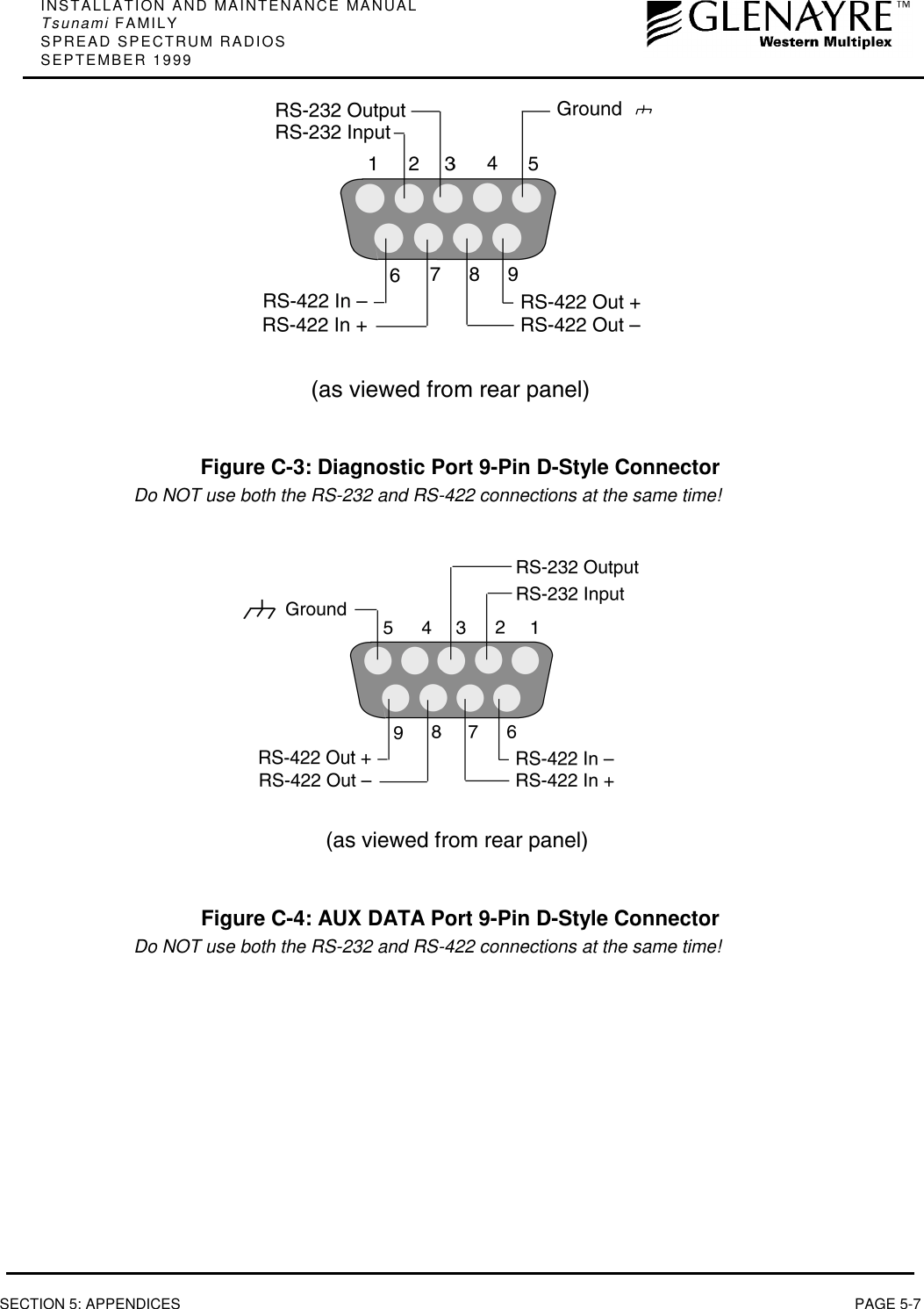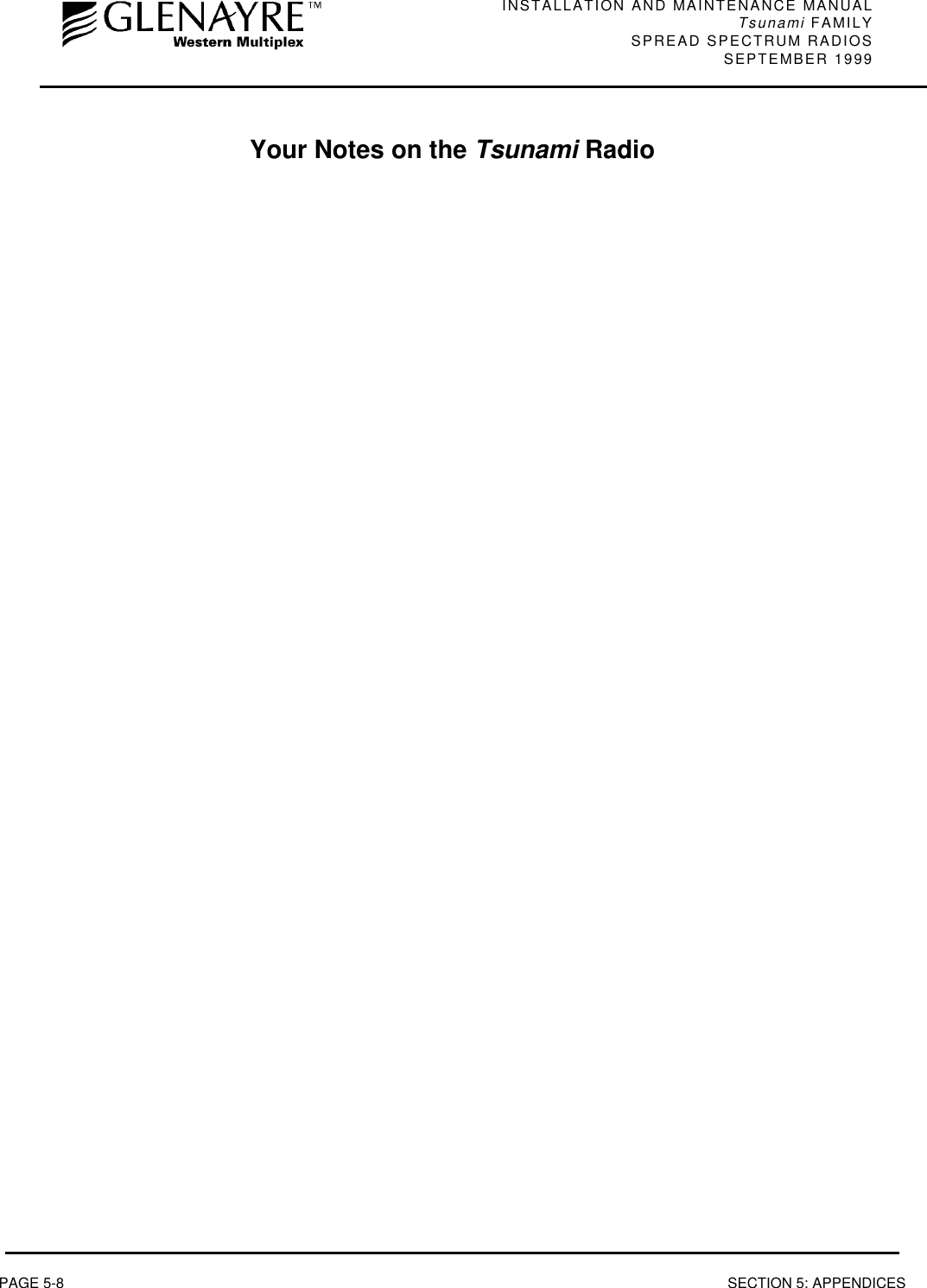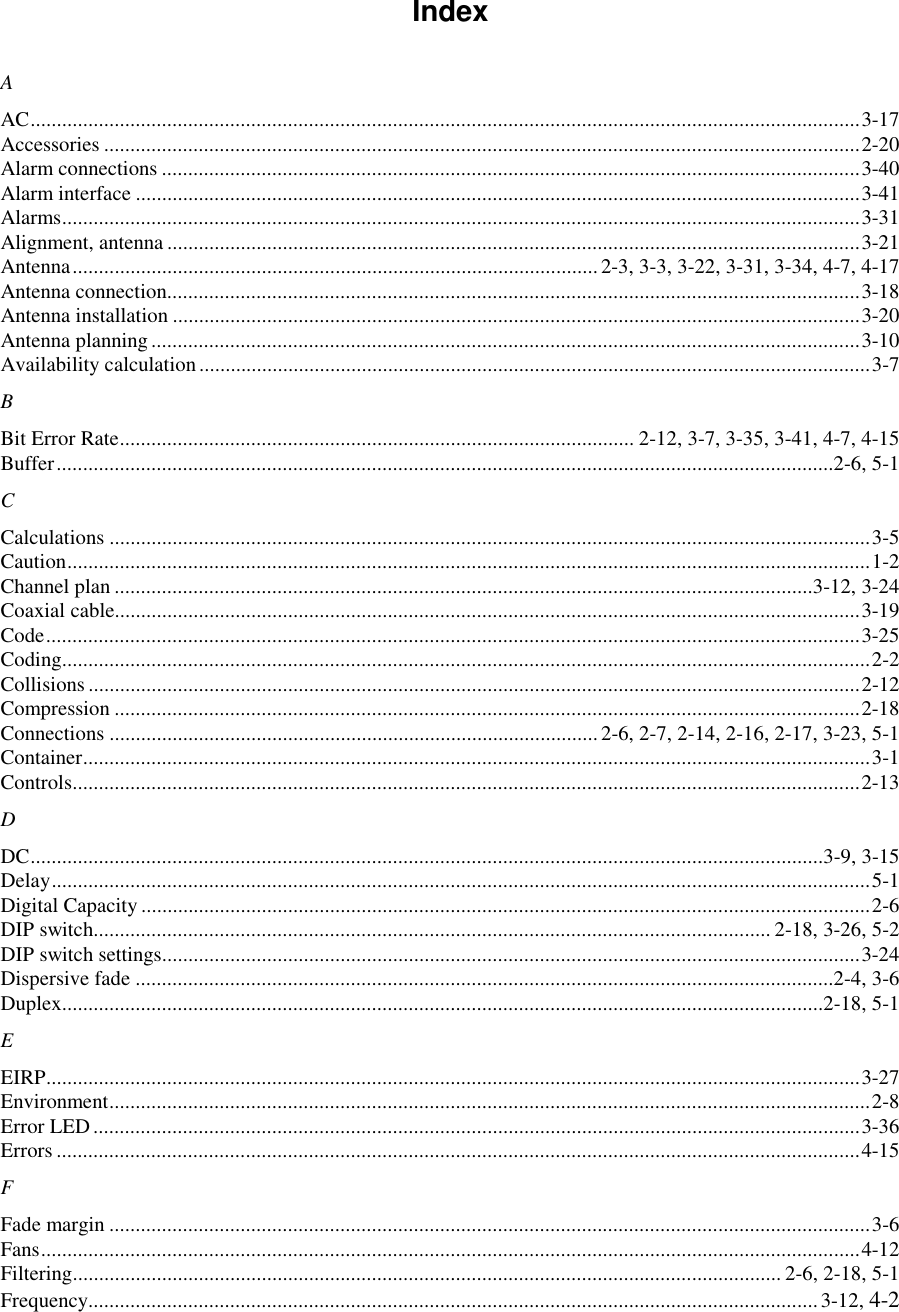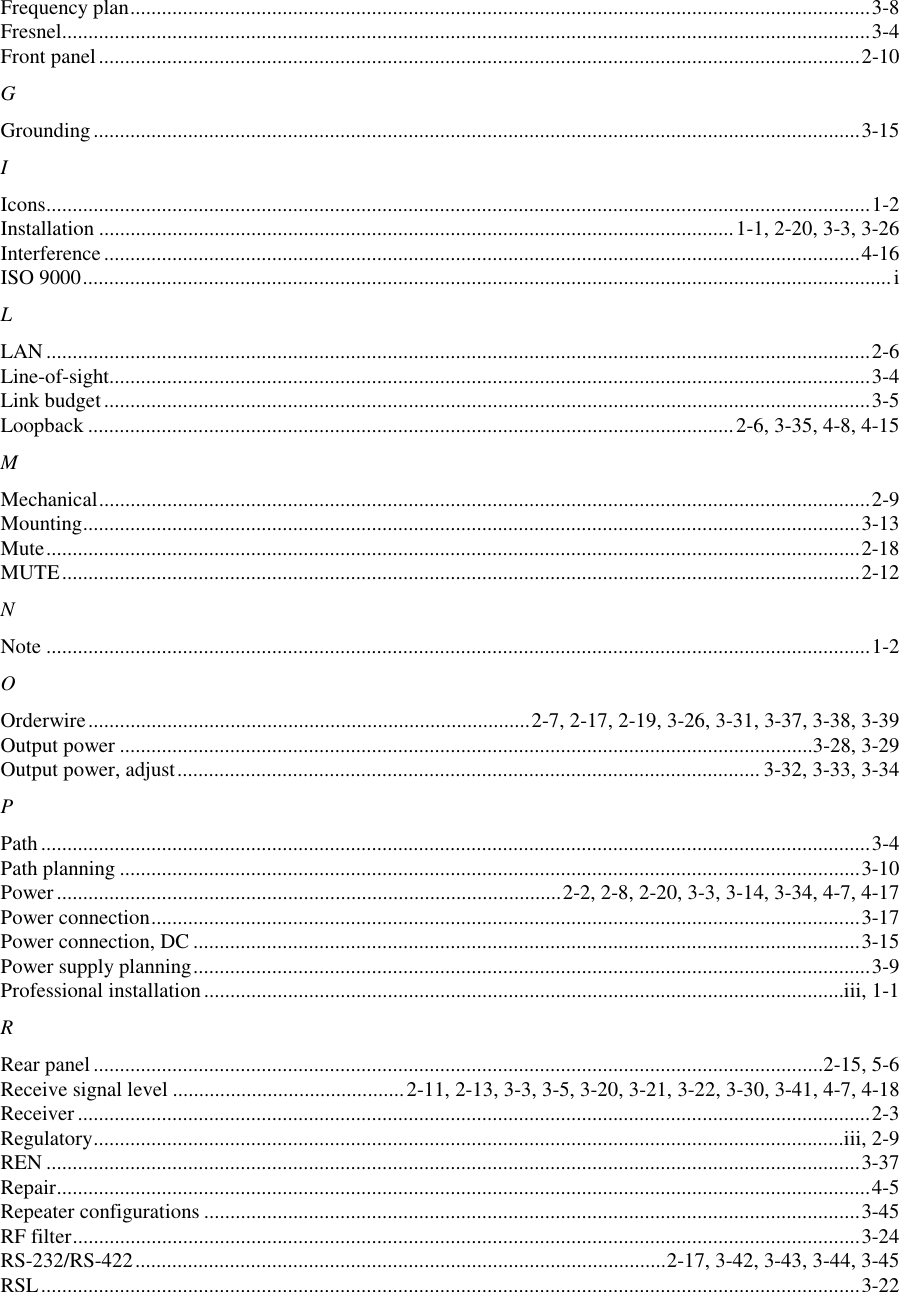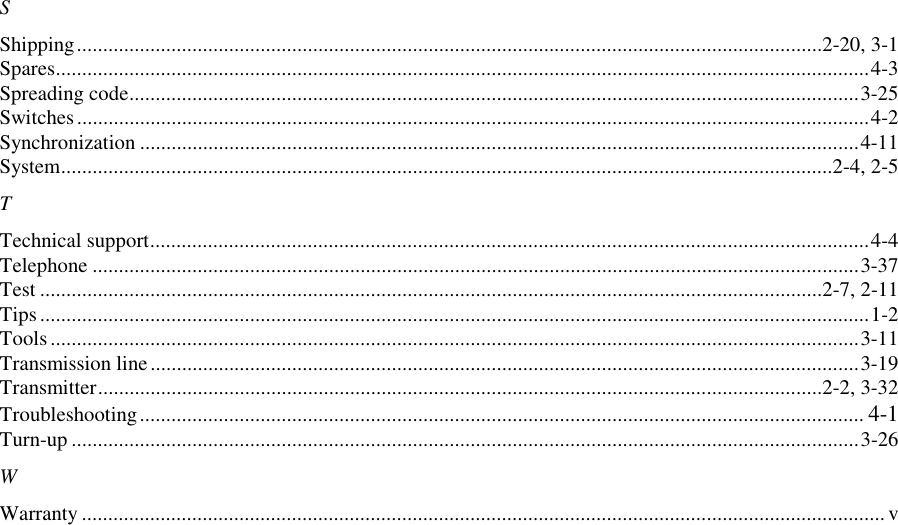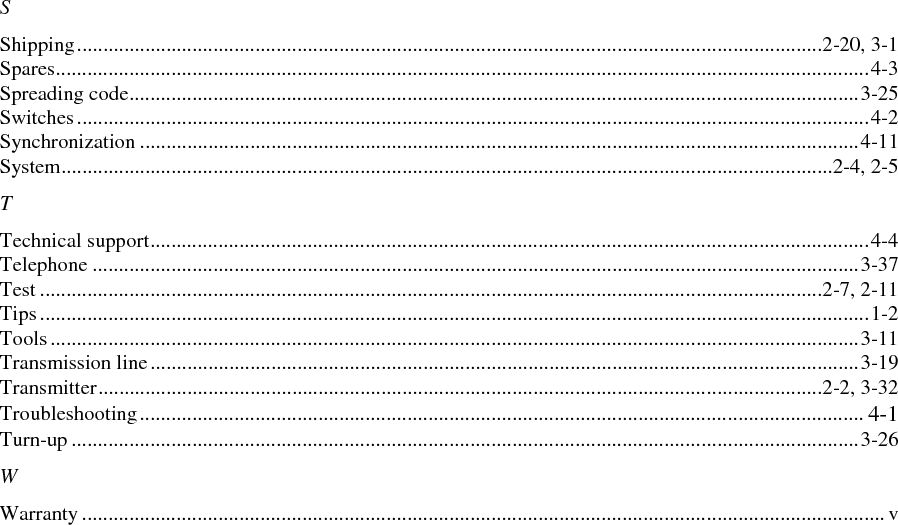Proxim Wireless S58-12 User Manual Reply to request 10789 Attachment 4
Proxim Wireless Corporation Reply to request 10789 Attachment 4
Contents
- 1. user manual
- 2. Reply to request 10789 Attachment 4
- 3. Updated Manual Page
Reply to request 10789 Attachment 4
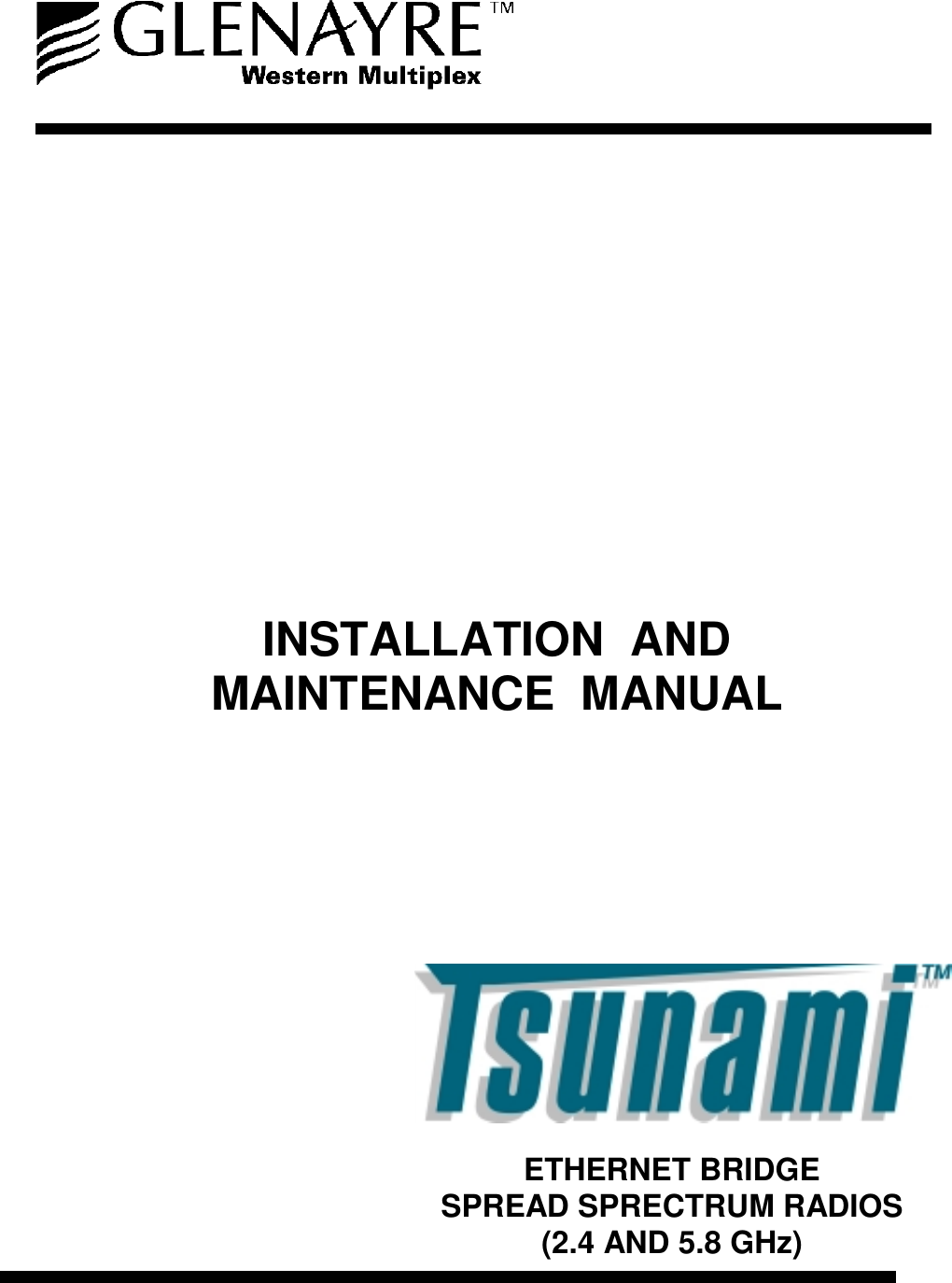
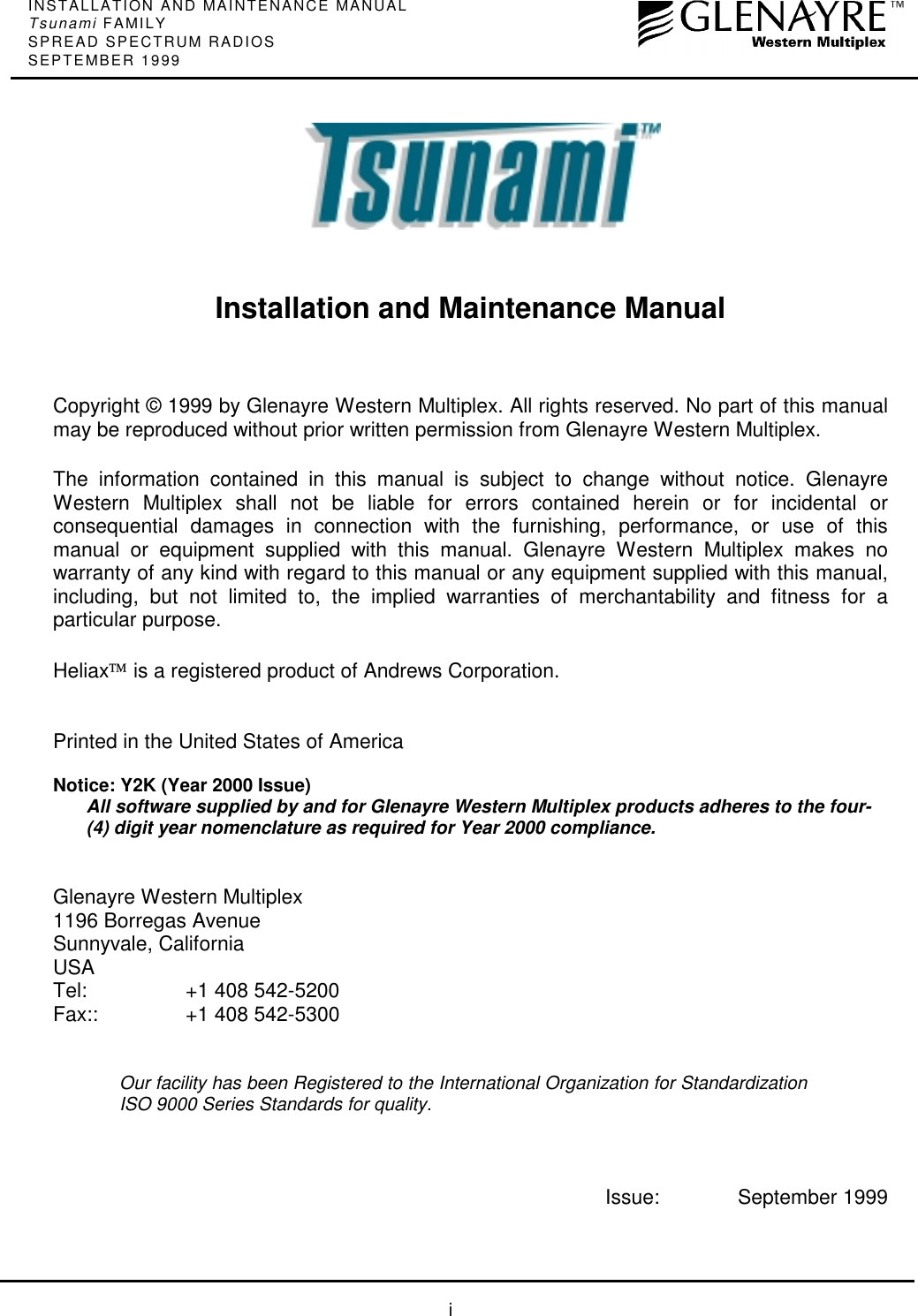
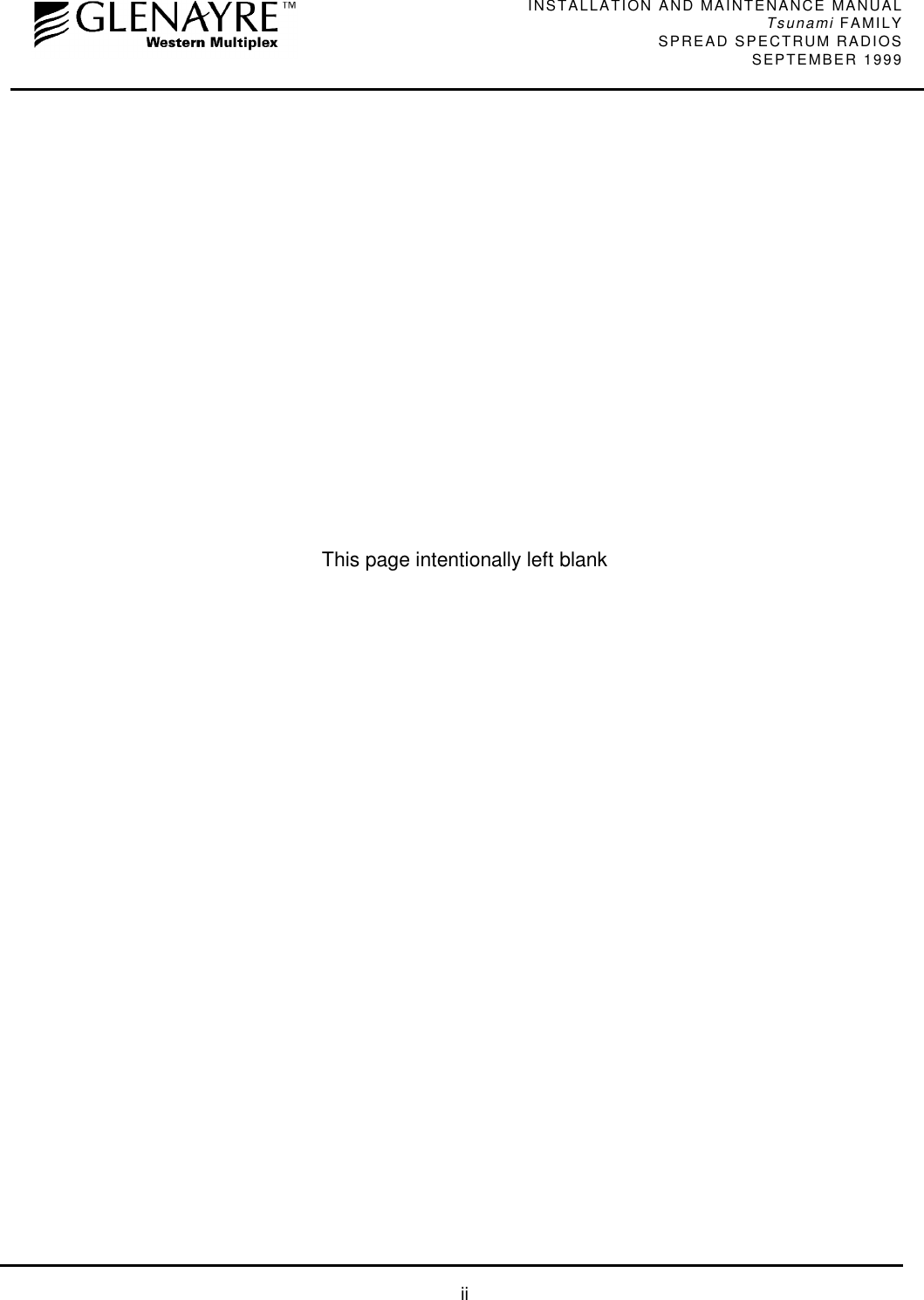
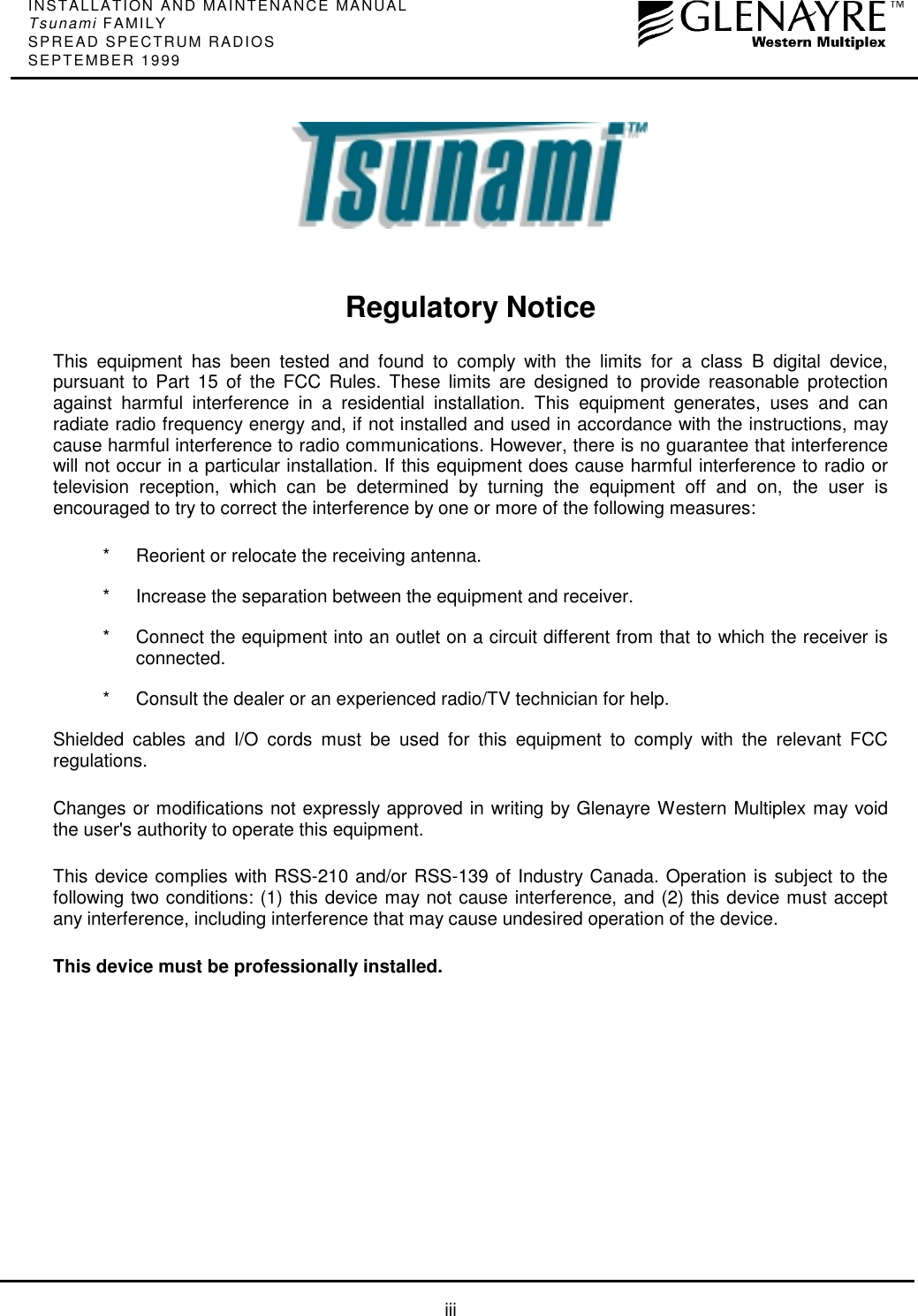
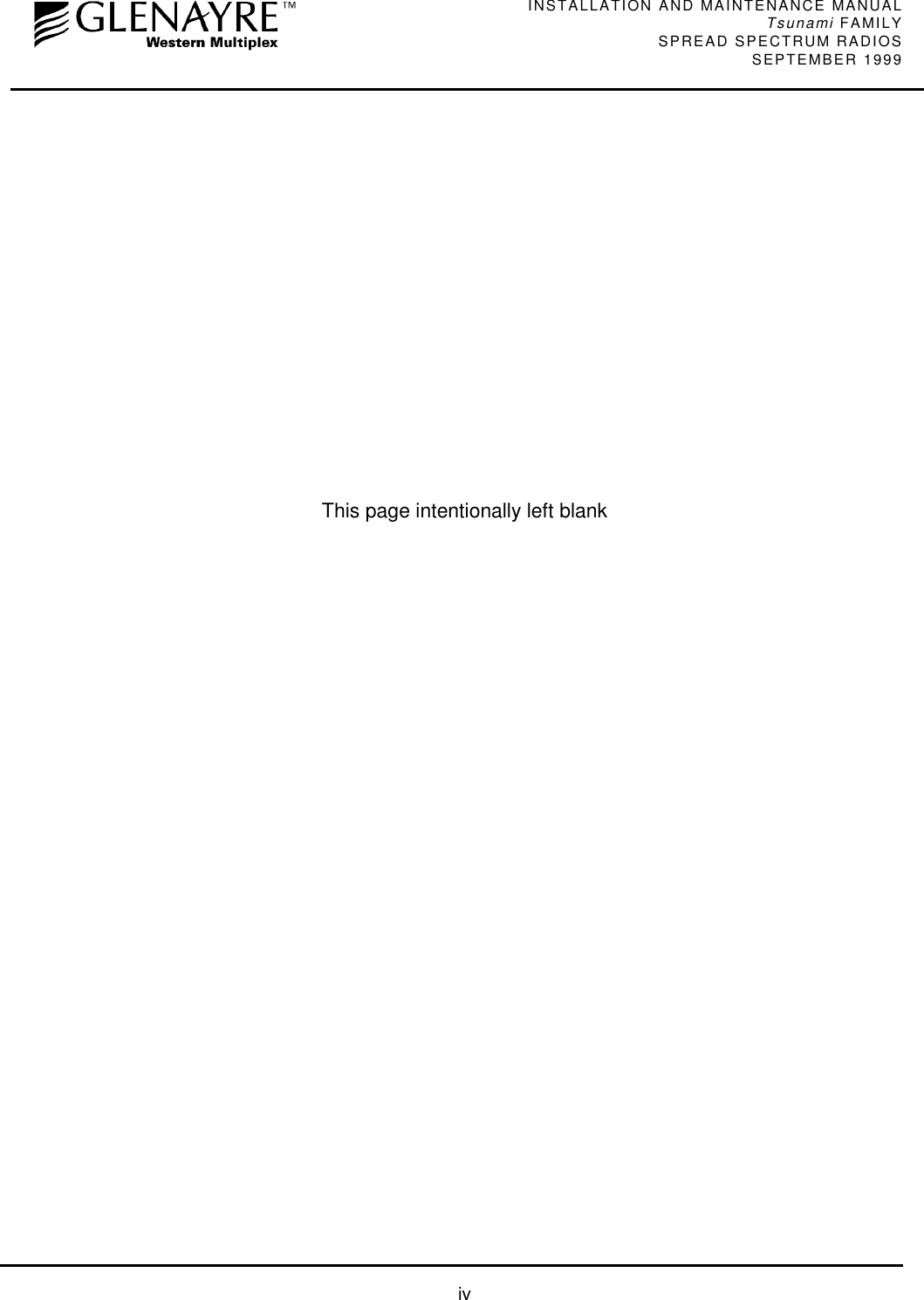
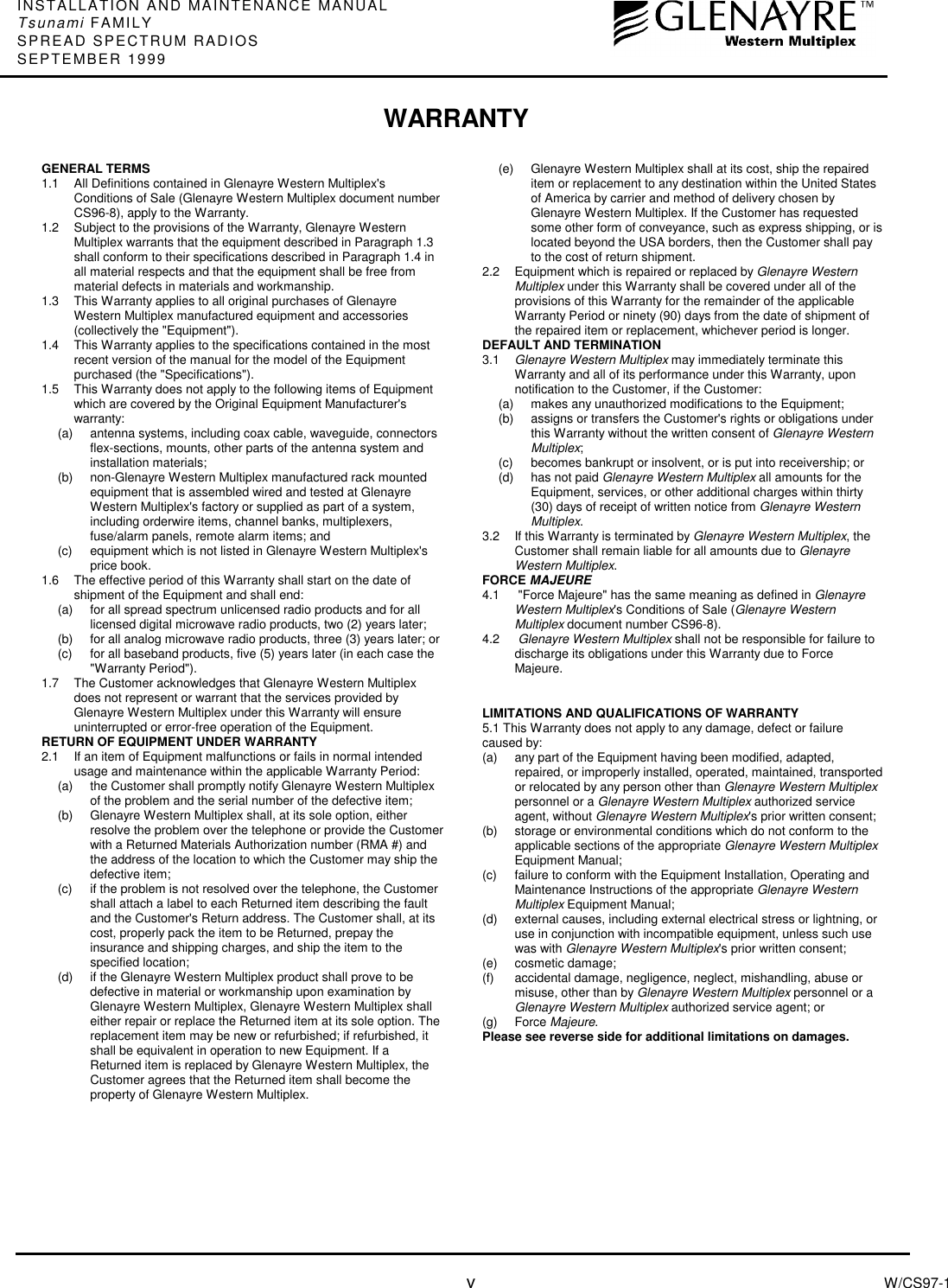
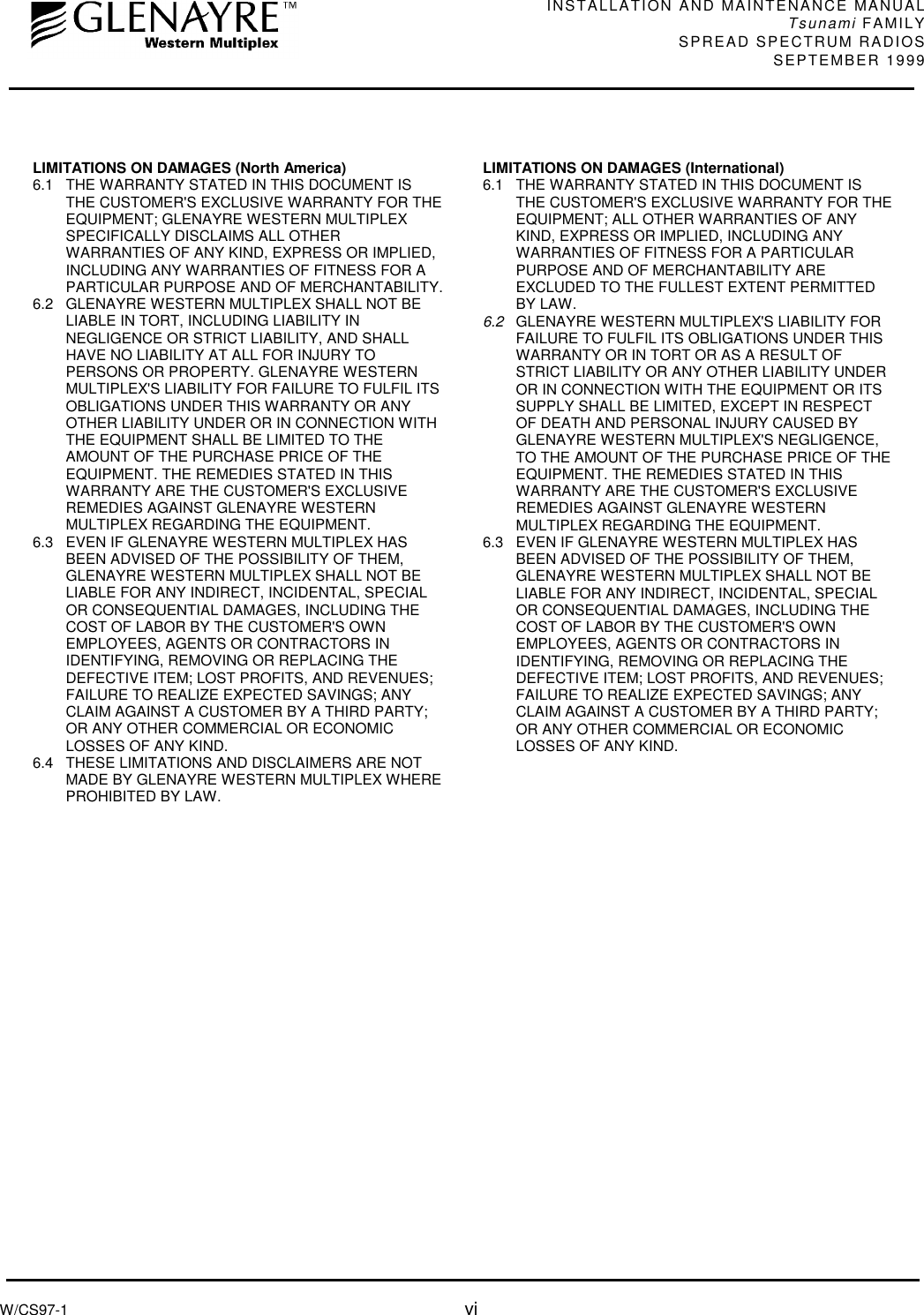
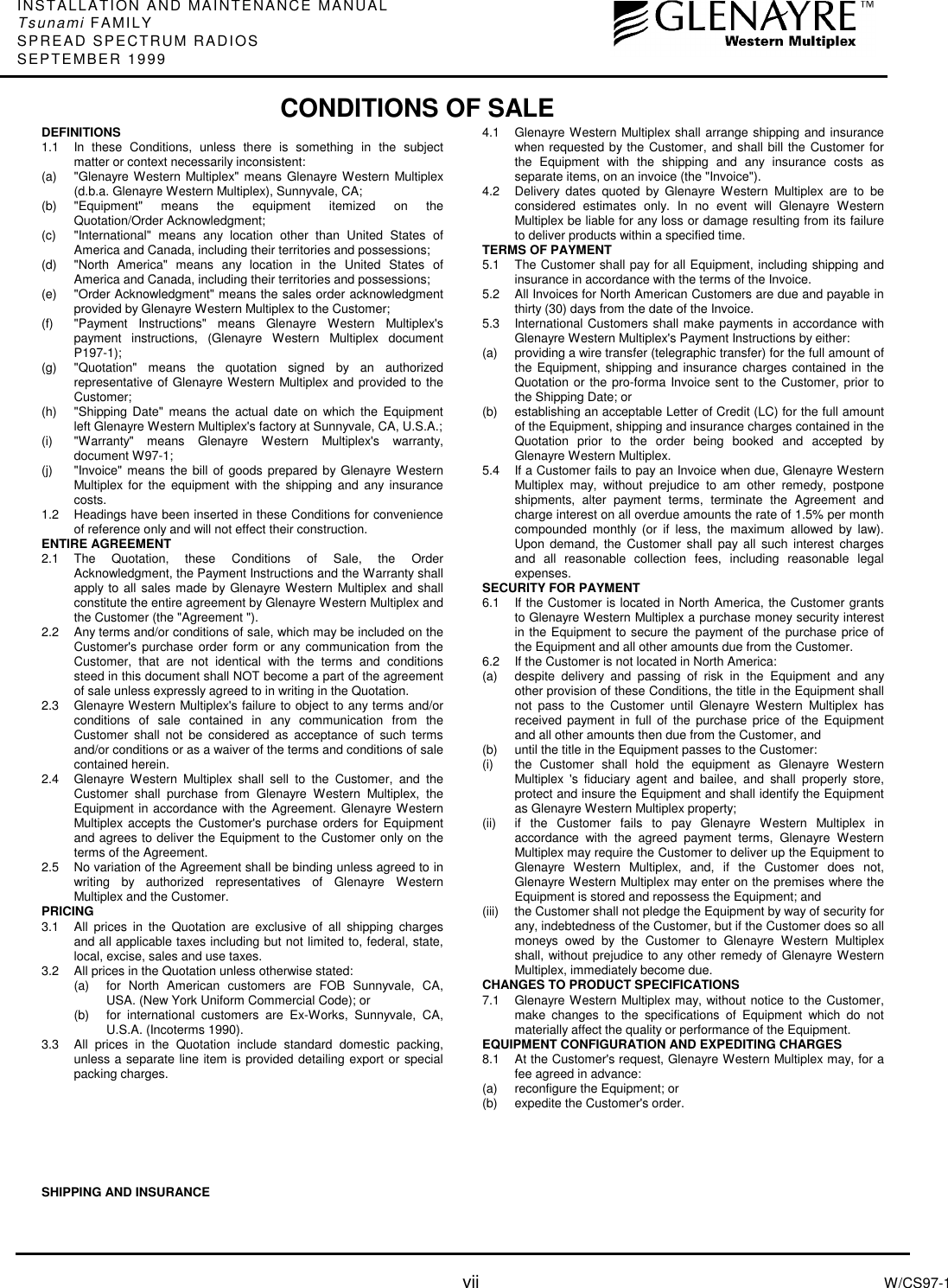
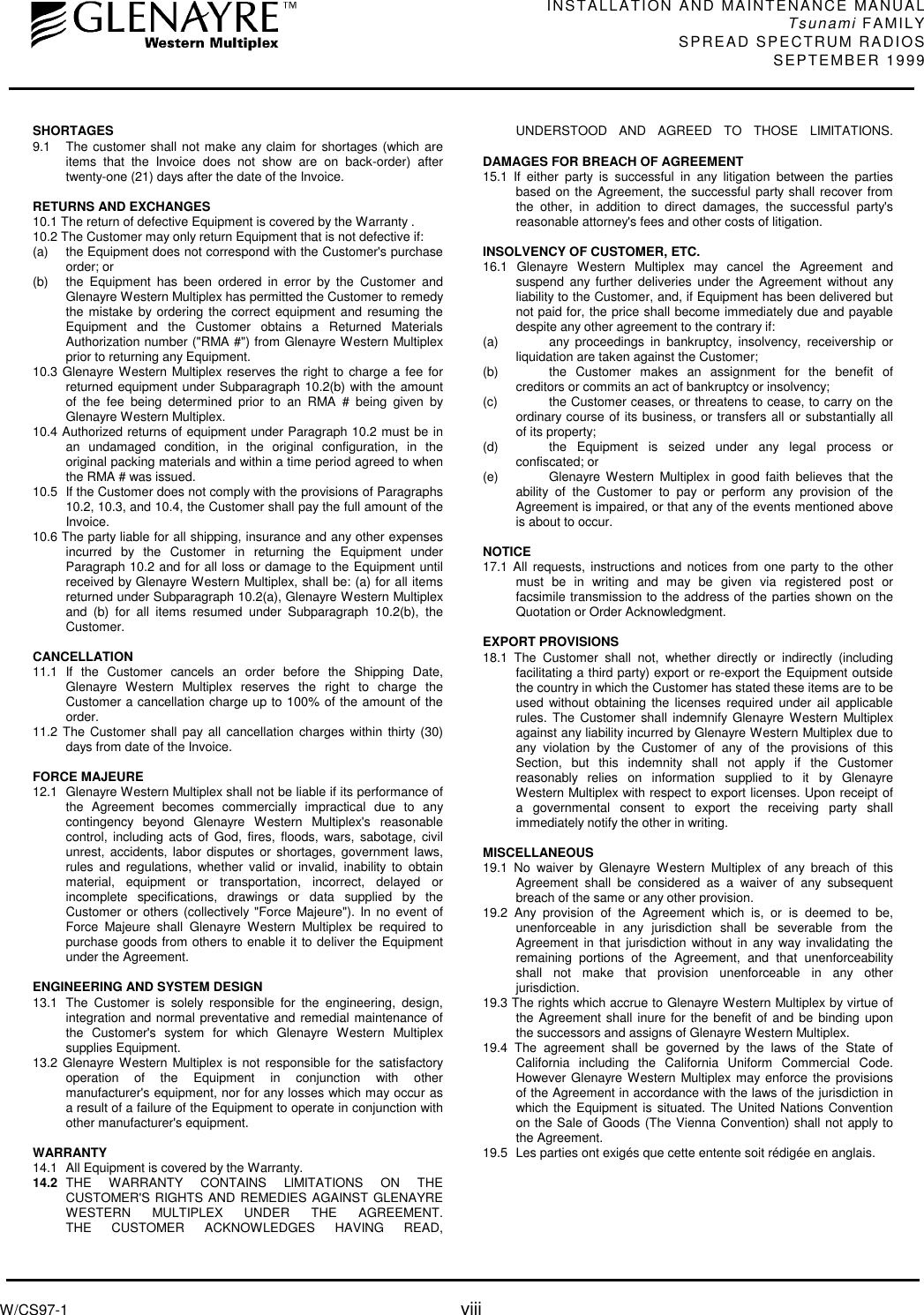
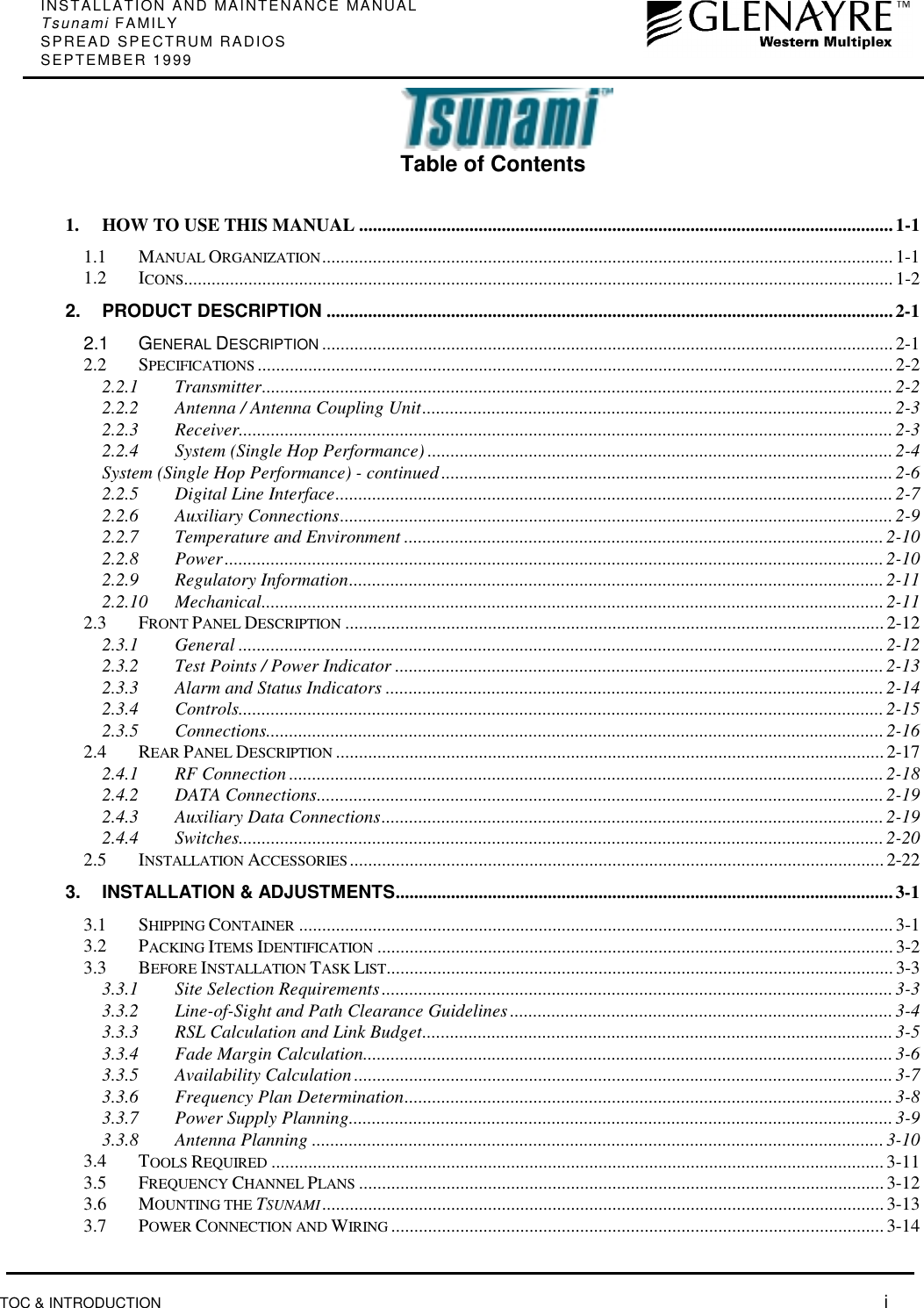
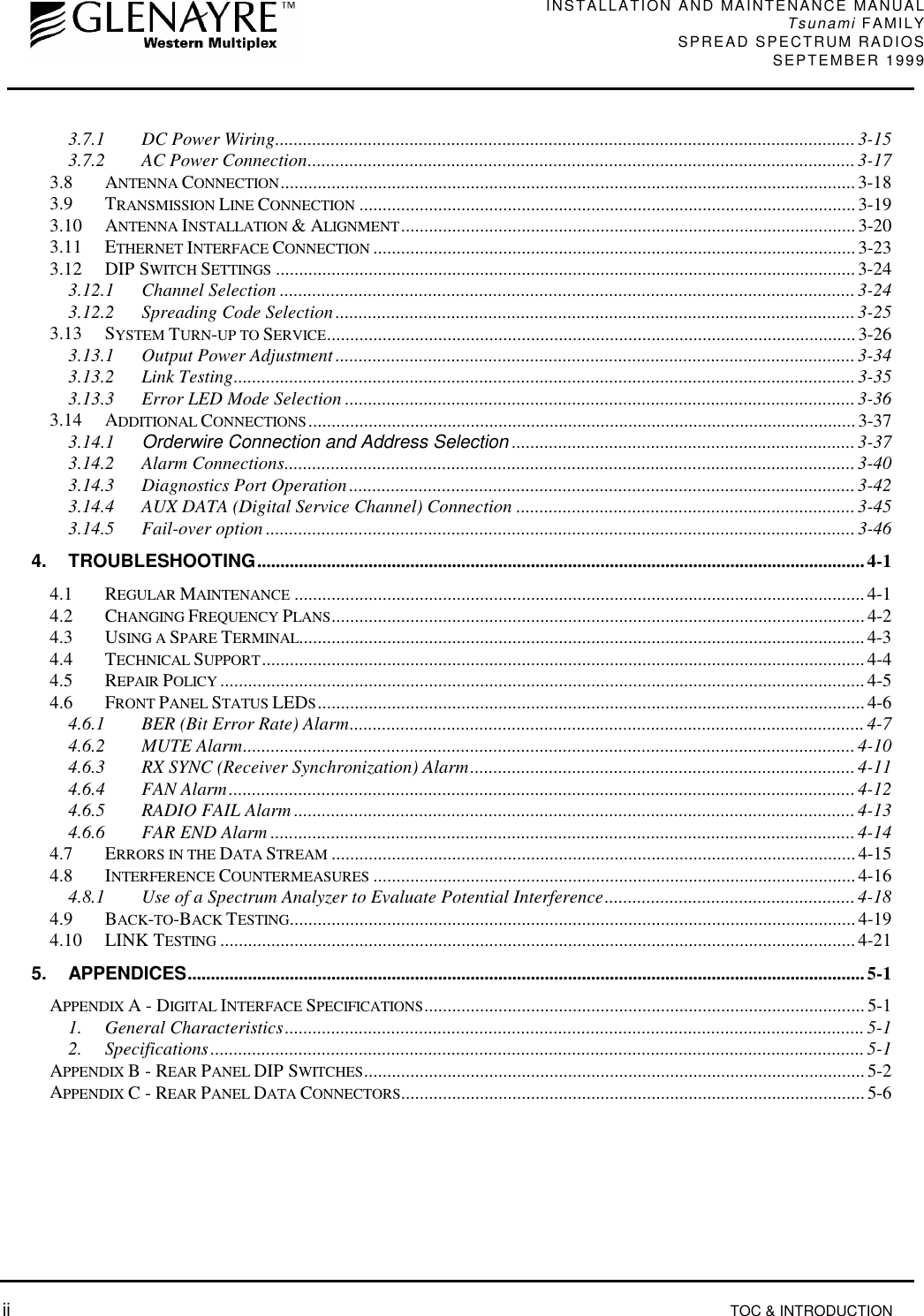
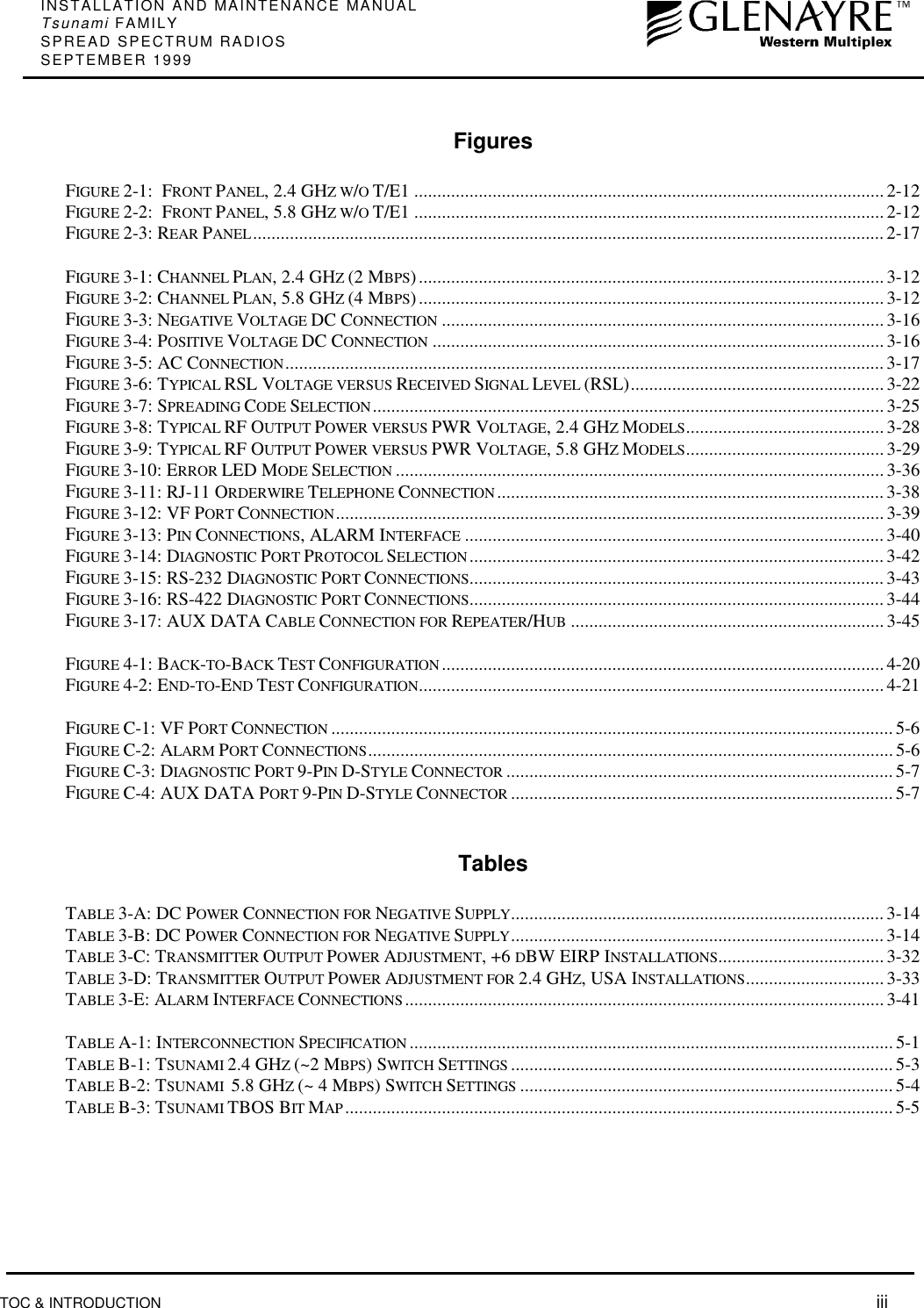

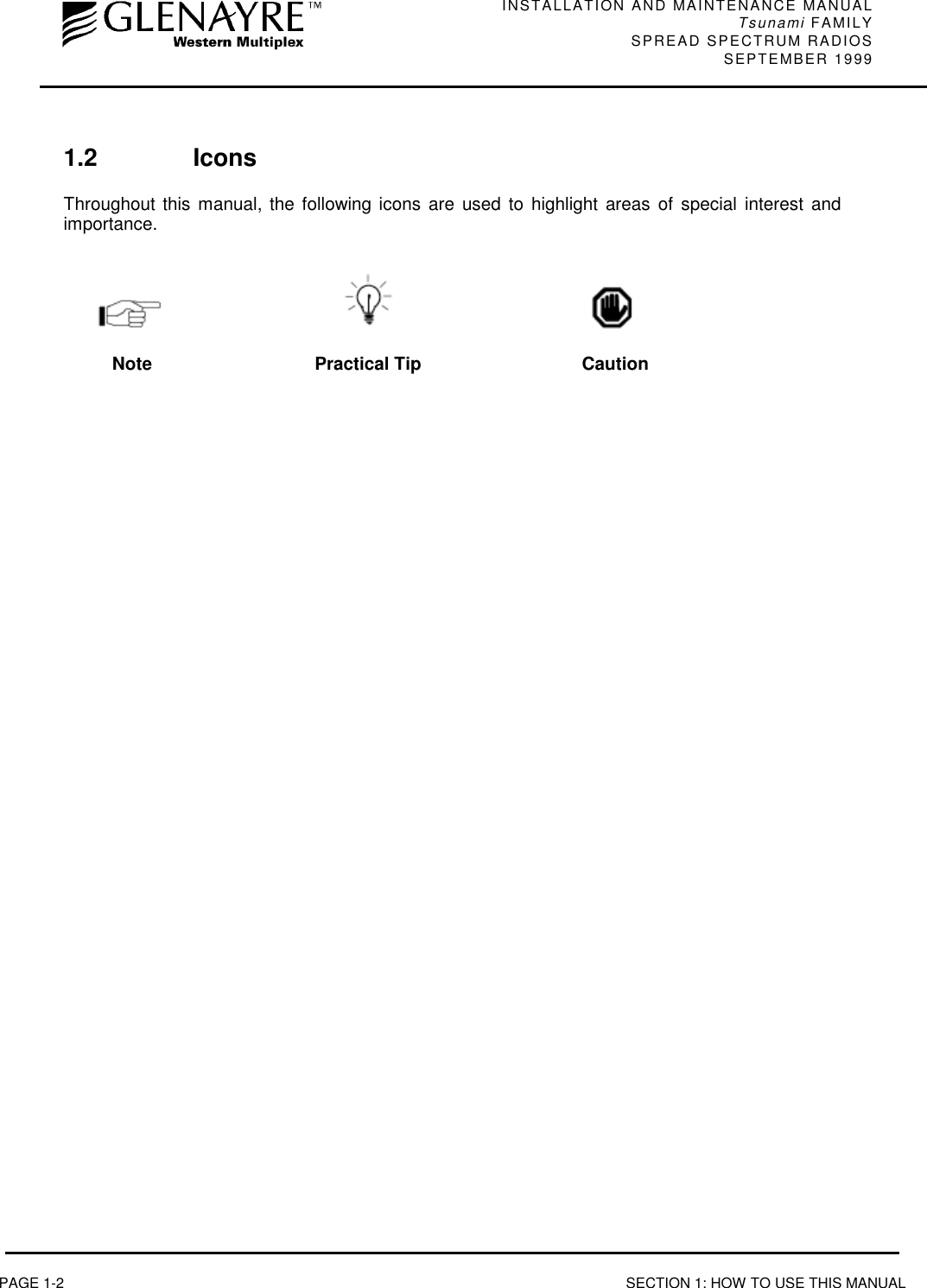
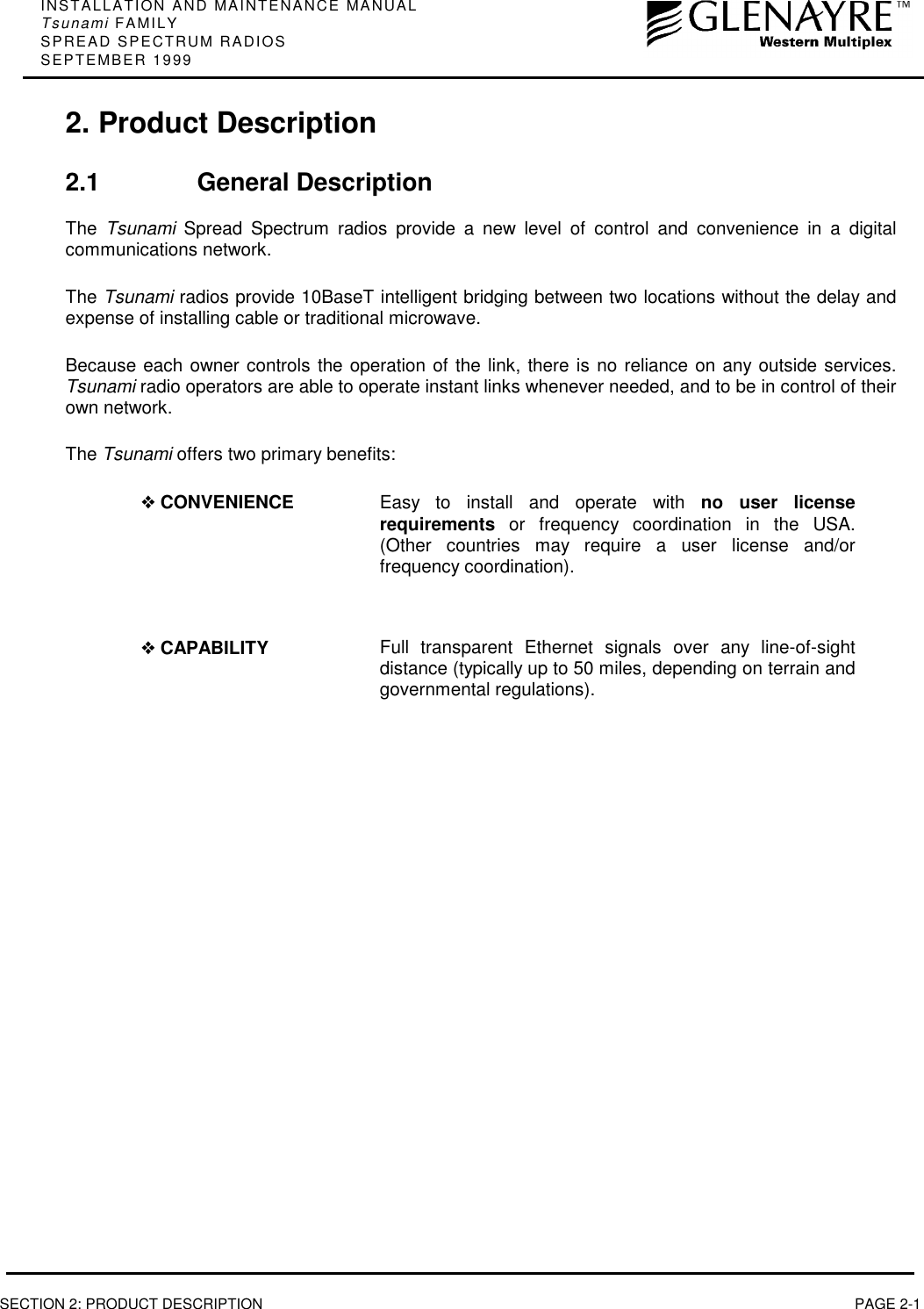
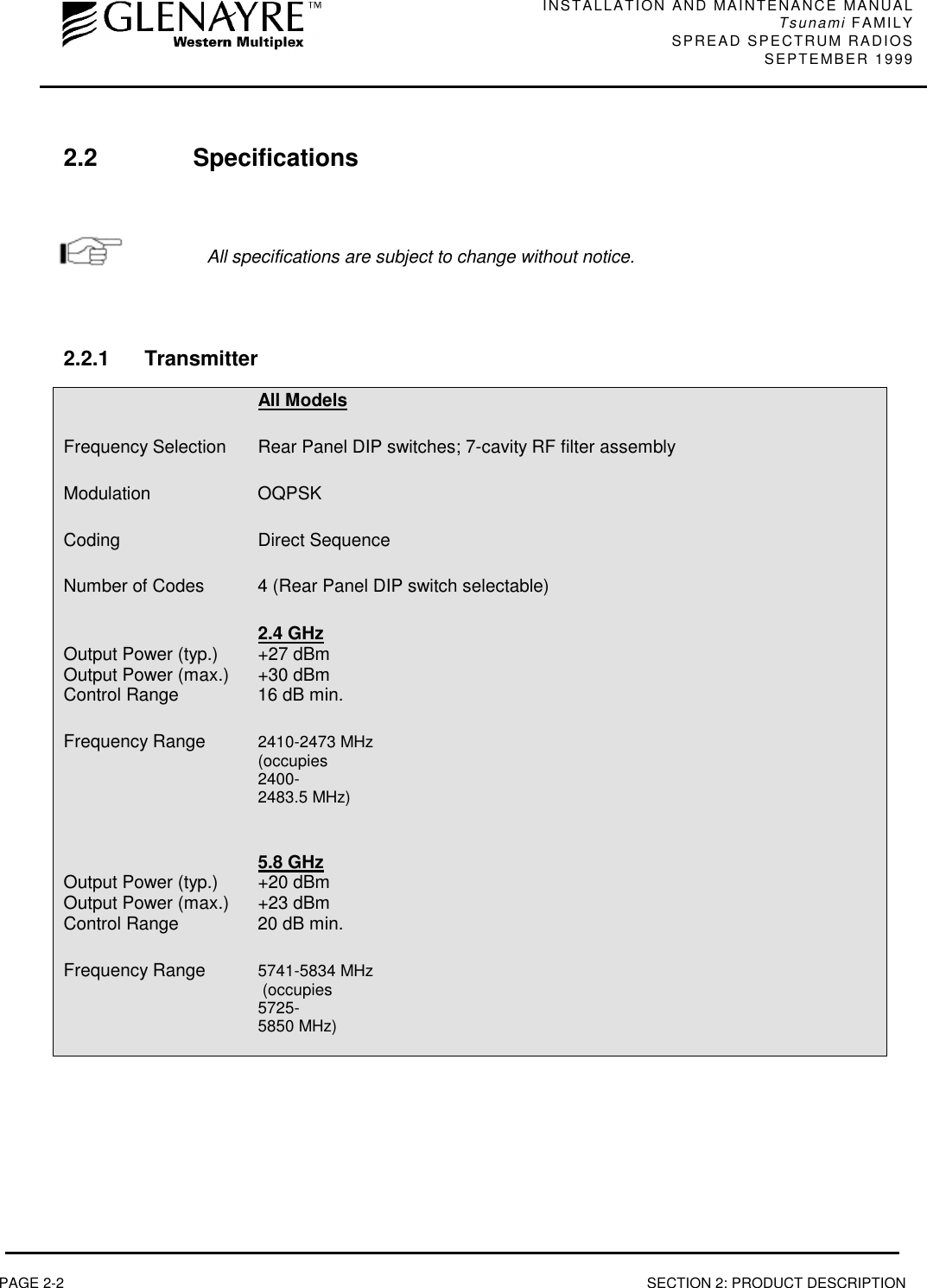
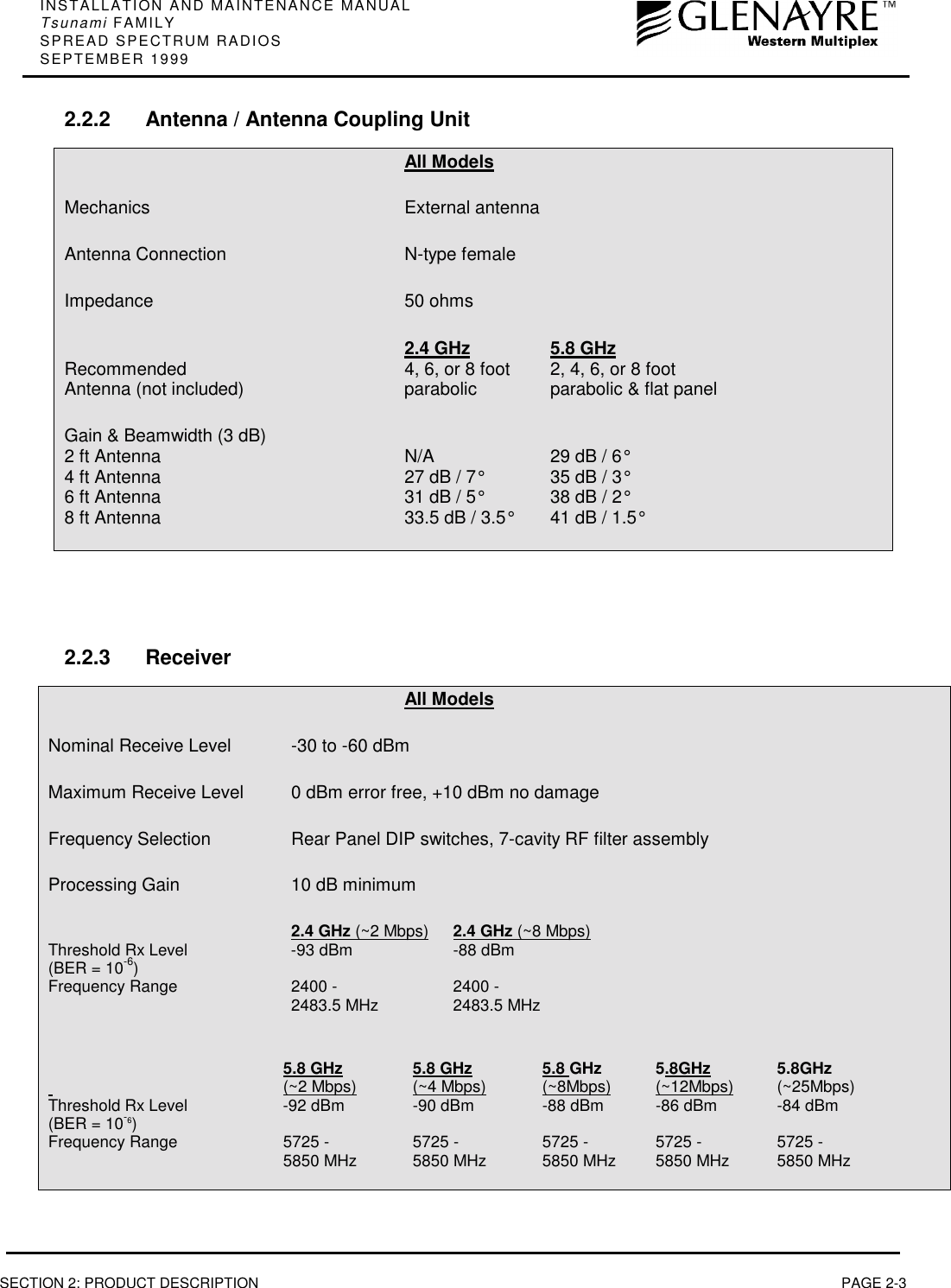
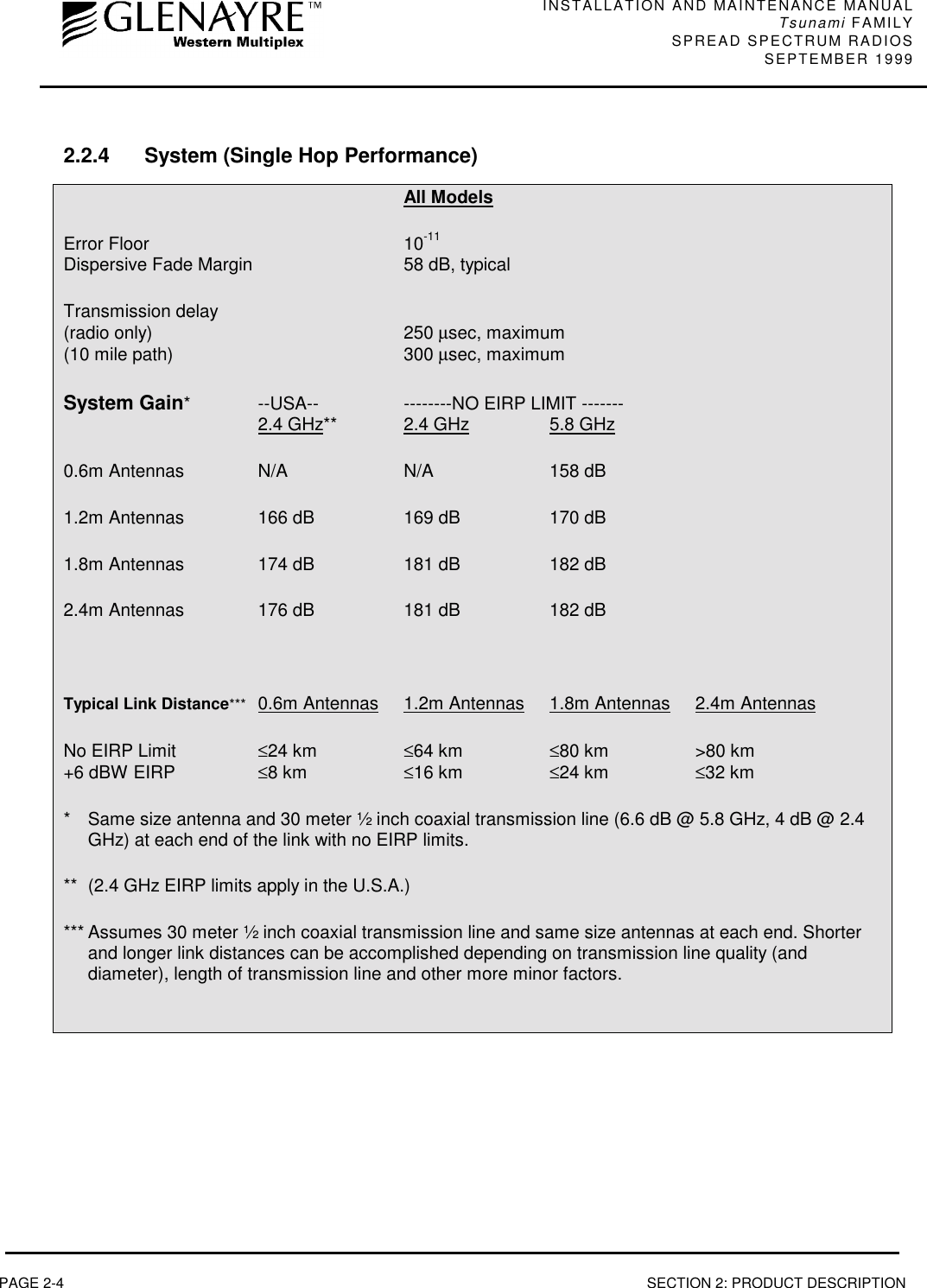


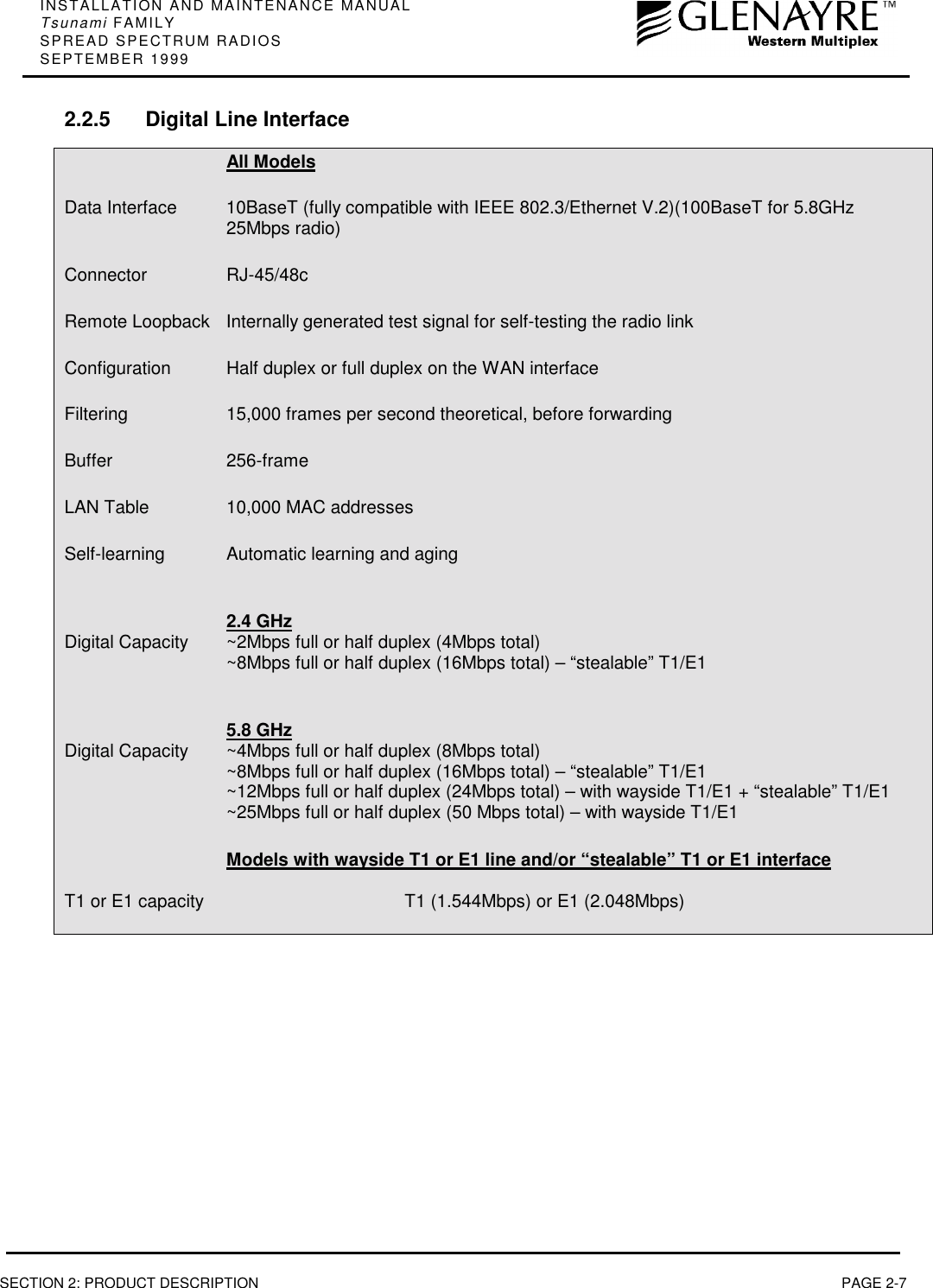
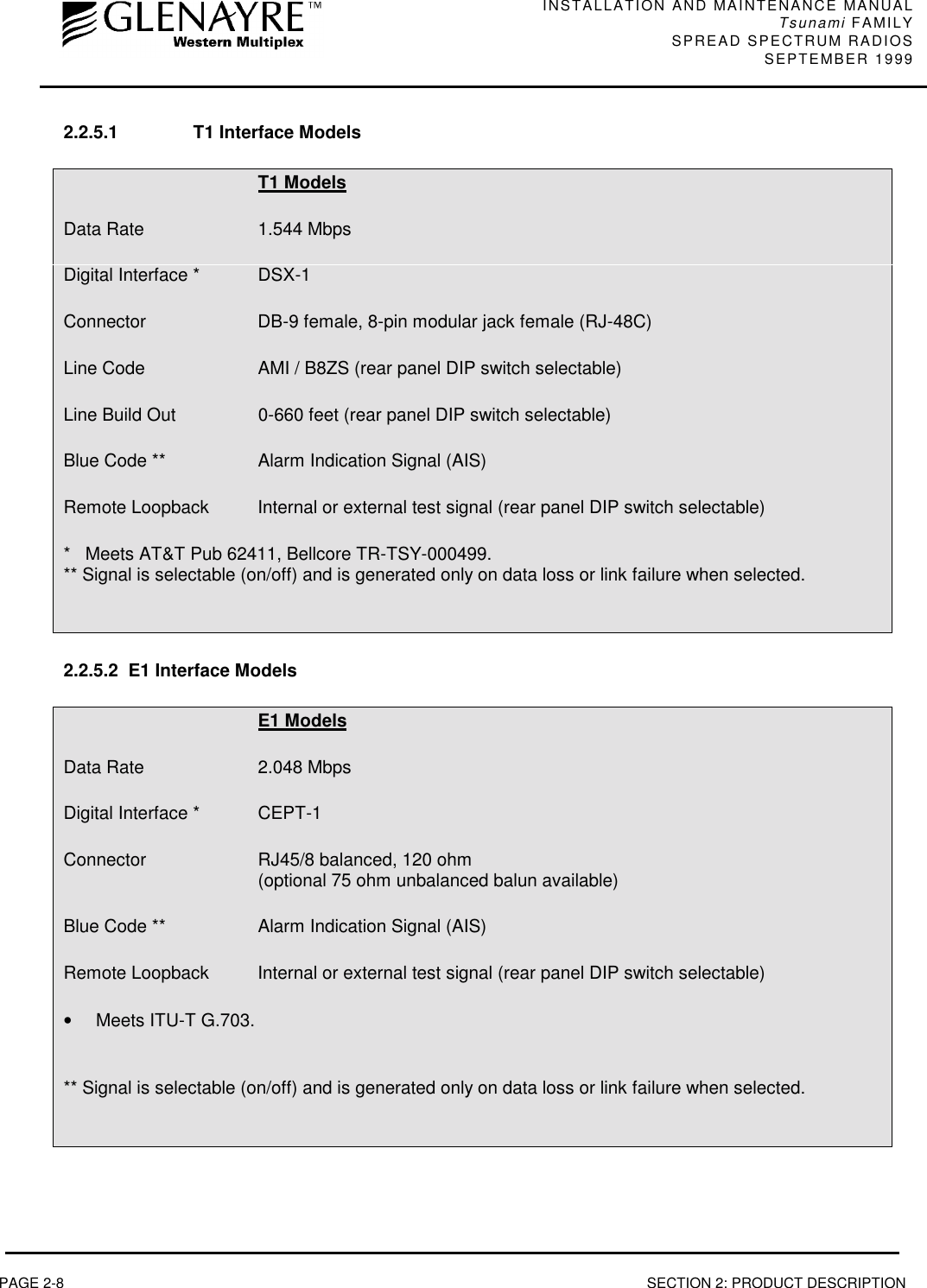
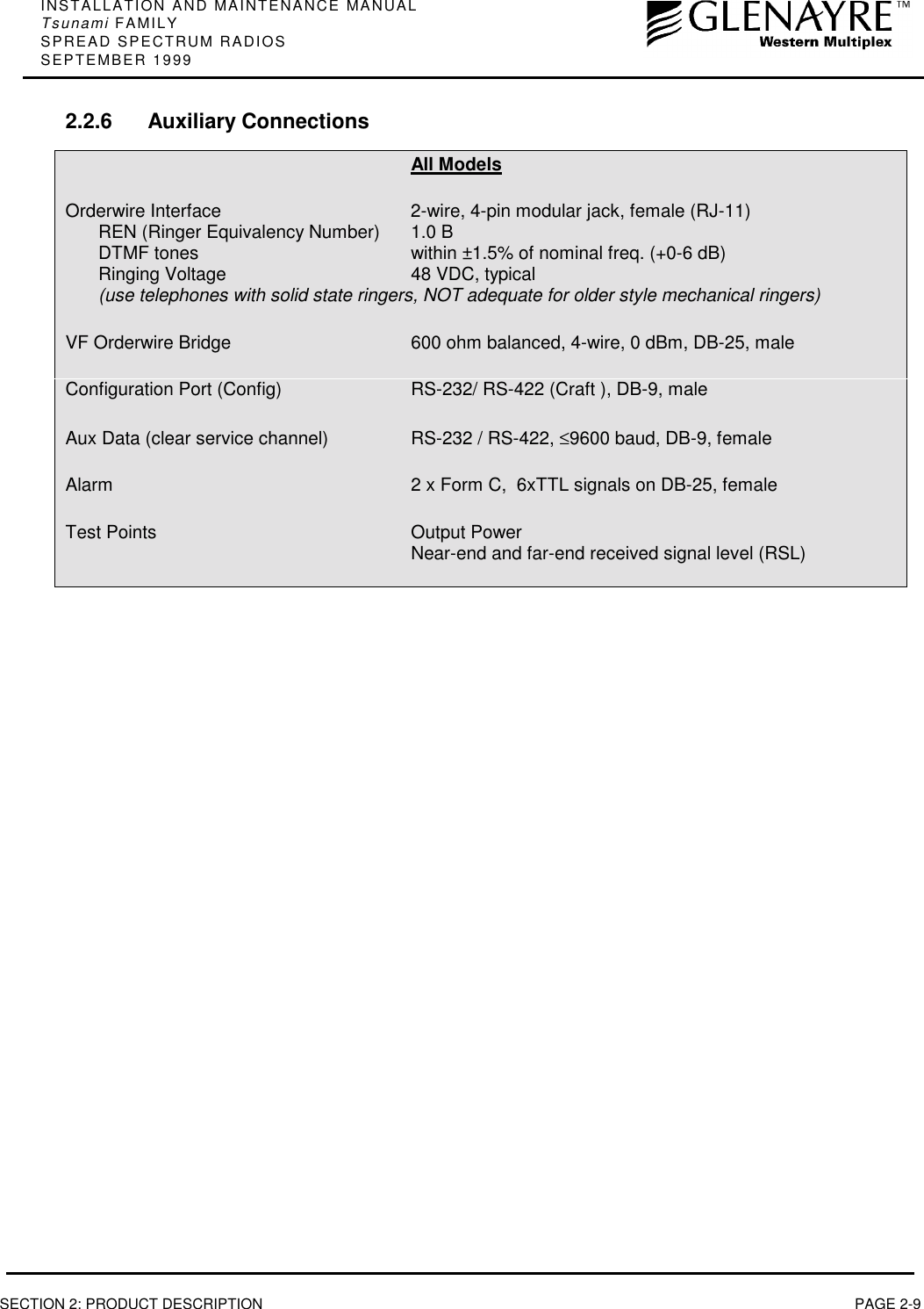
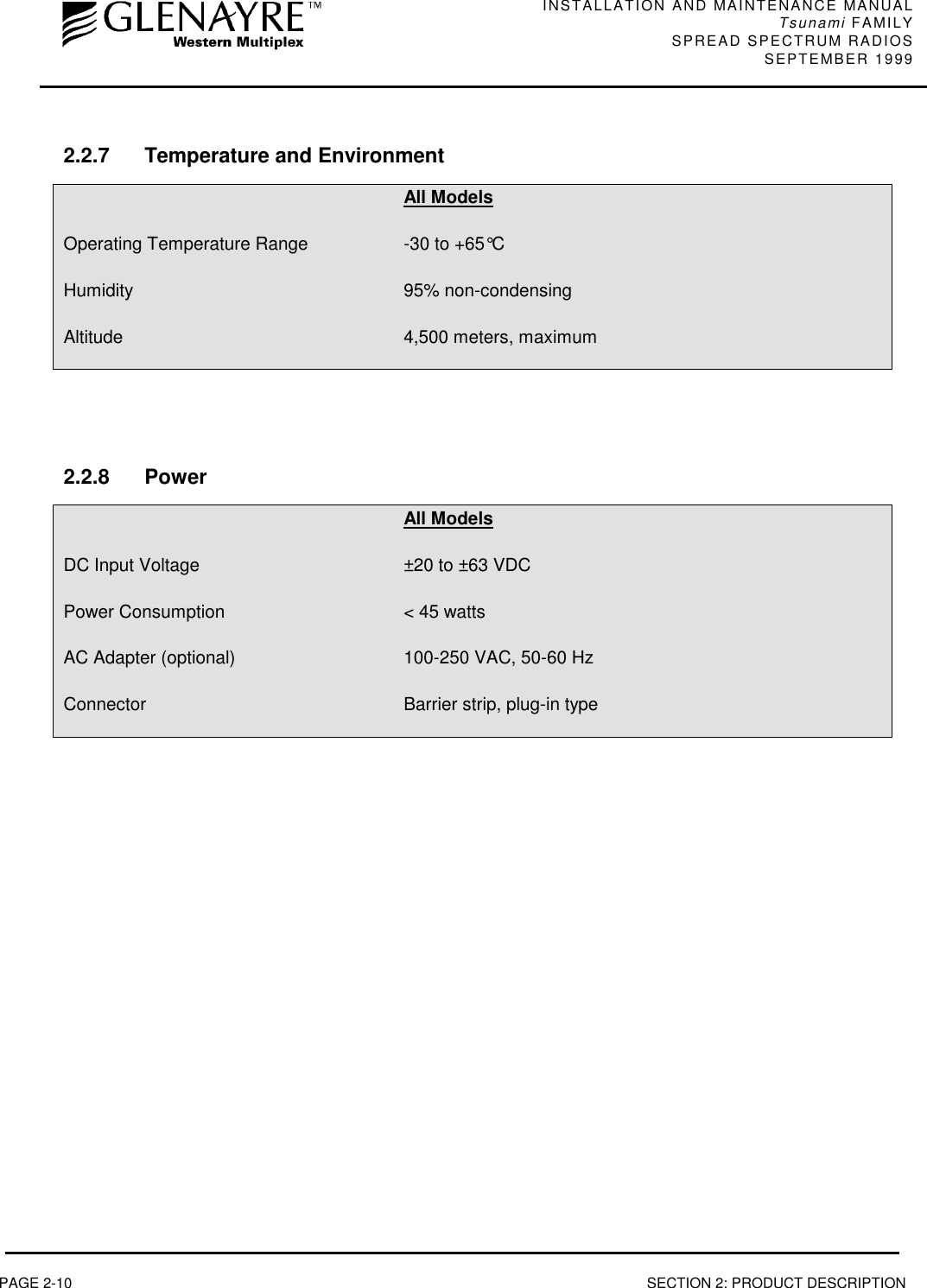
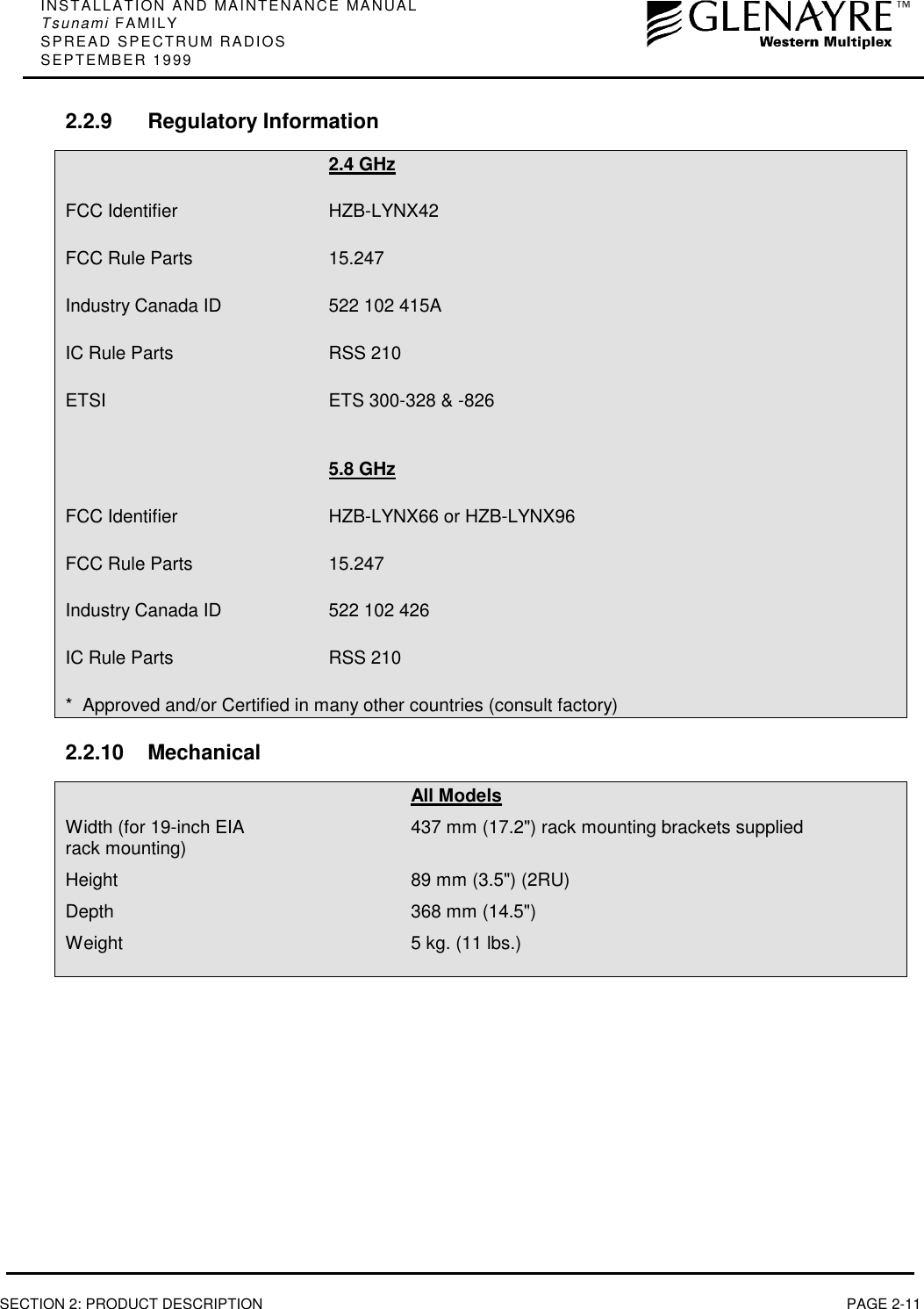
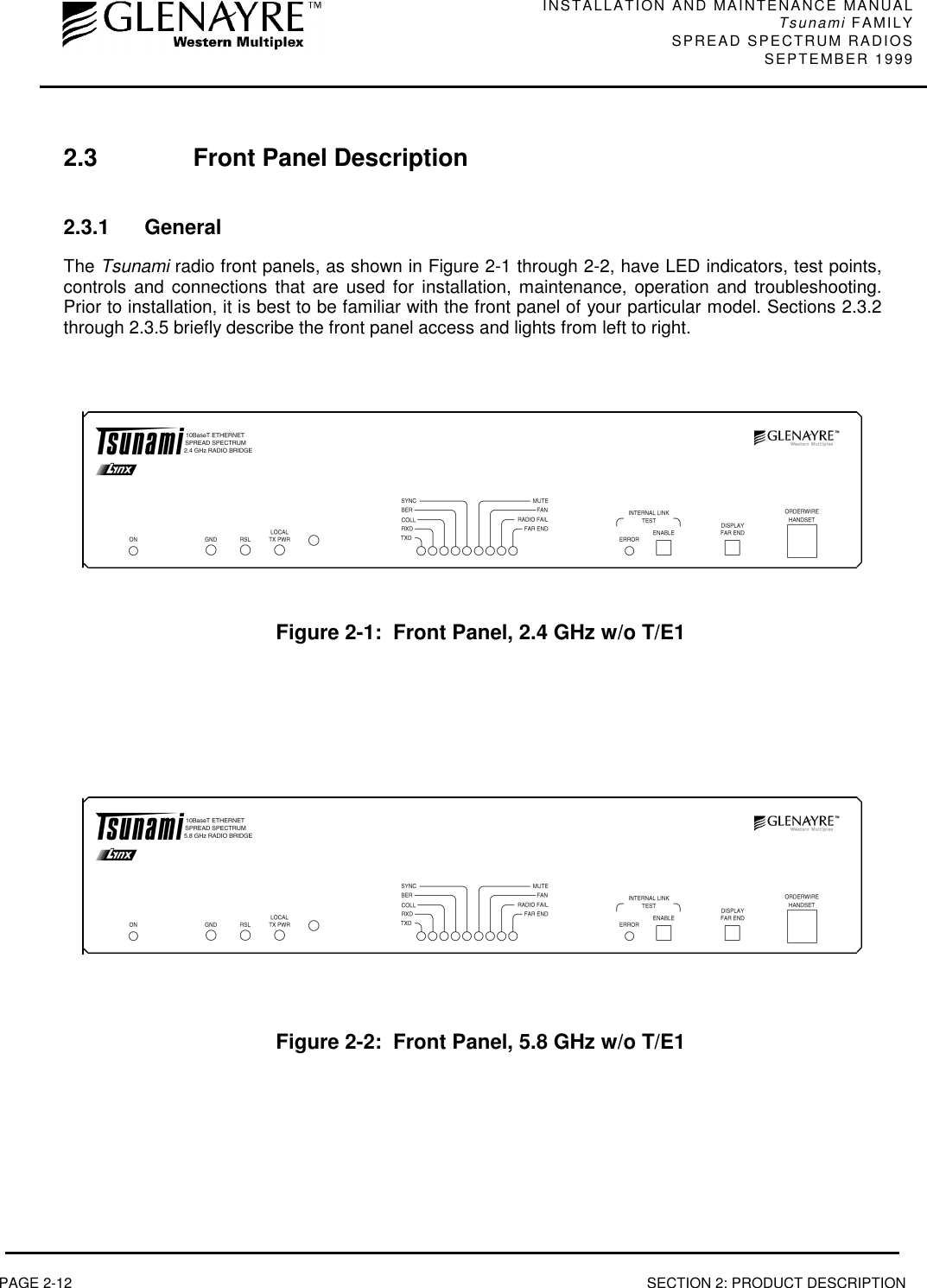

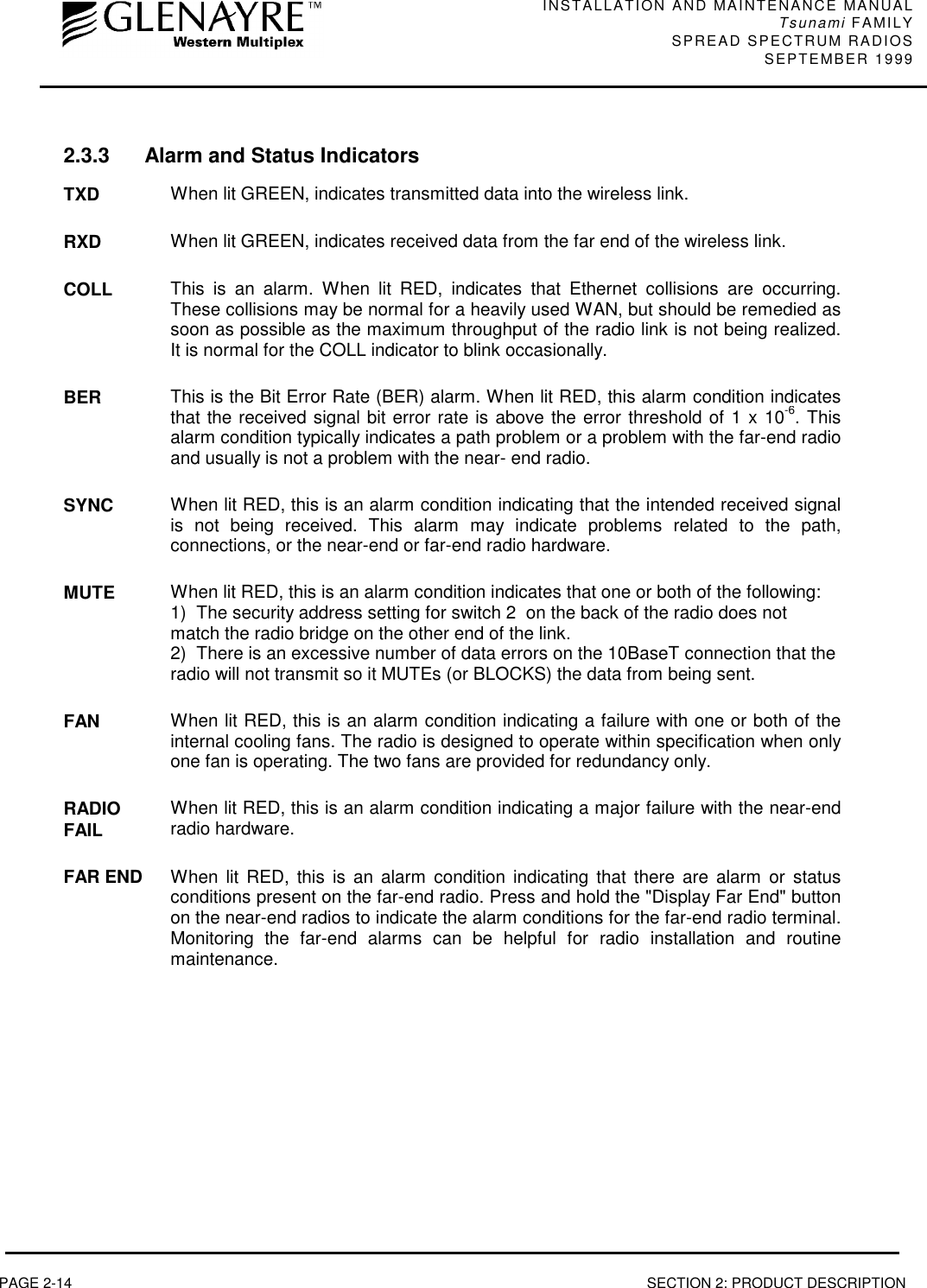
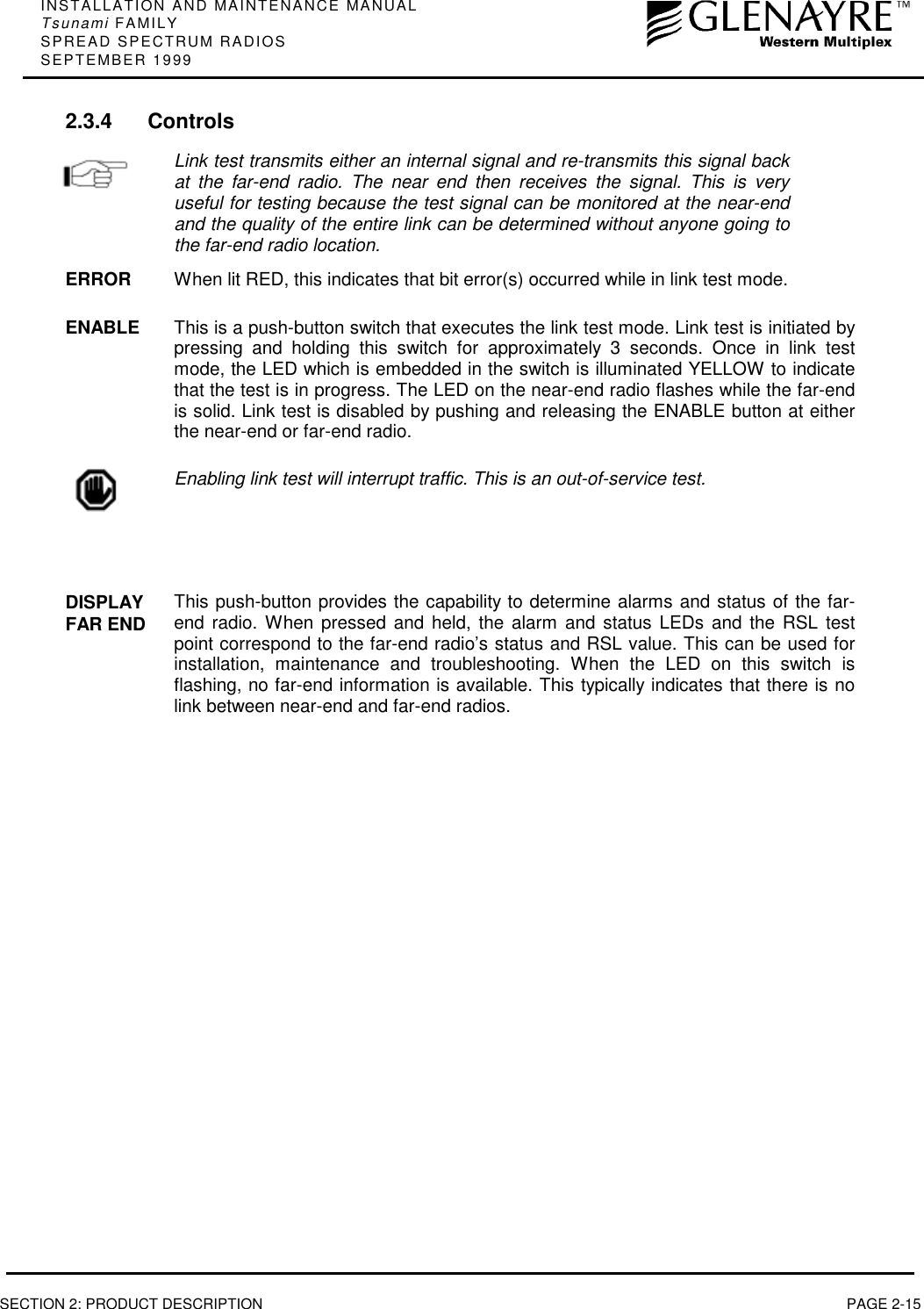
![INSTALLATION AND MAINTENANCE MANUALTsunami FAMILYSPREAD SPECTRUM RADIOS SEPTEMBER 1999PAGE 2-16 SECTION 2: PRODUCT DESCRIPTION2.3.5 ConnectionsORDERWIREThis connection is used to access the orderwire function. This is a facility for "telephone" style servicefrom one radio to another. A standard electronic telephone [one with a handset and DTMF (push-button tone) dialing] plugs into this connector. The user can dial the orderwire address of the far-endradio (or any radio in the Tsunami network) to establish telephone communication between sites. Thiscommunication does not interrupt or interfere with the other radio communications. The radio link mustbe operational to use this facility. The orderwire feature can be very useful for installation, maintenanceand troubleshooting.- Touch-tone Telephone* (for communication with far-end)*Telephone connection specifications:REN (Ringer Equivalency Number) 1.0 BDTMF toneswithin ±1.5% of nominal freq.Ringing Voltage 48 VDC, typical(Ringing voltage is adequate for modern solid state ringers,NOT for the older mechanical type ringers)](https://usermanual.wiki/Proxim-Wireless/S58-12.Reply-to-request-10789-Attachment-4/User-Guide-75597-Page-32.png)
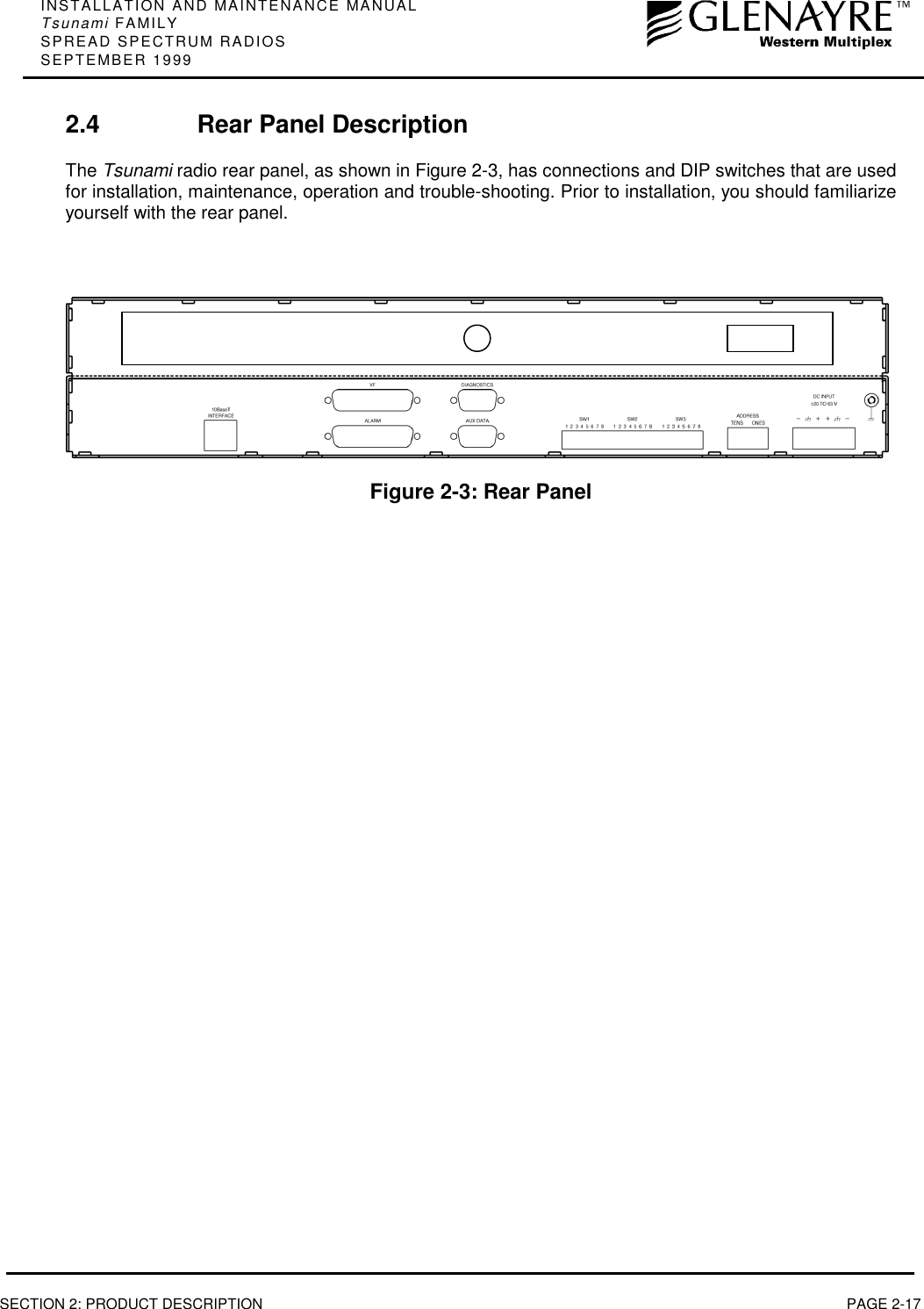

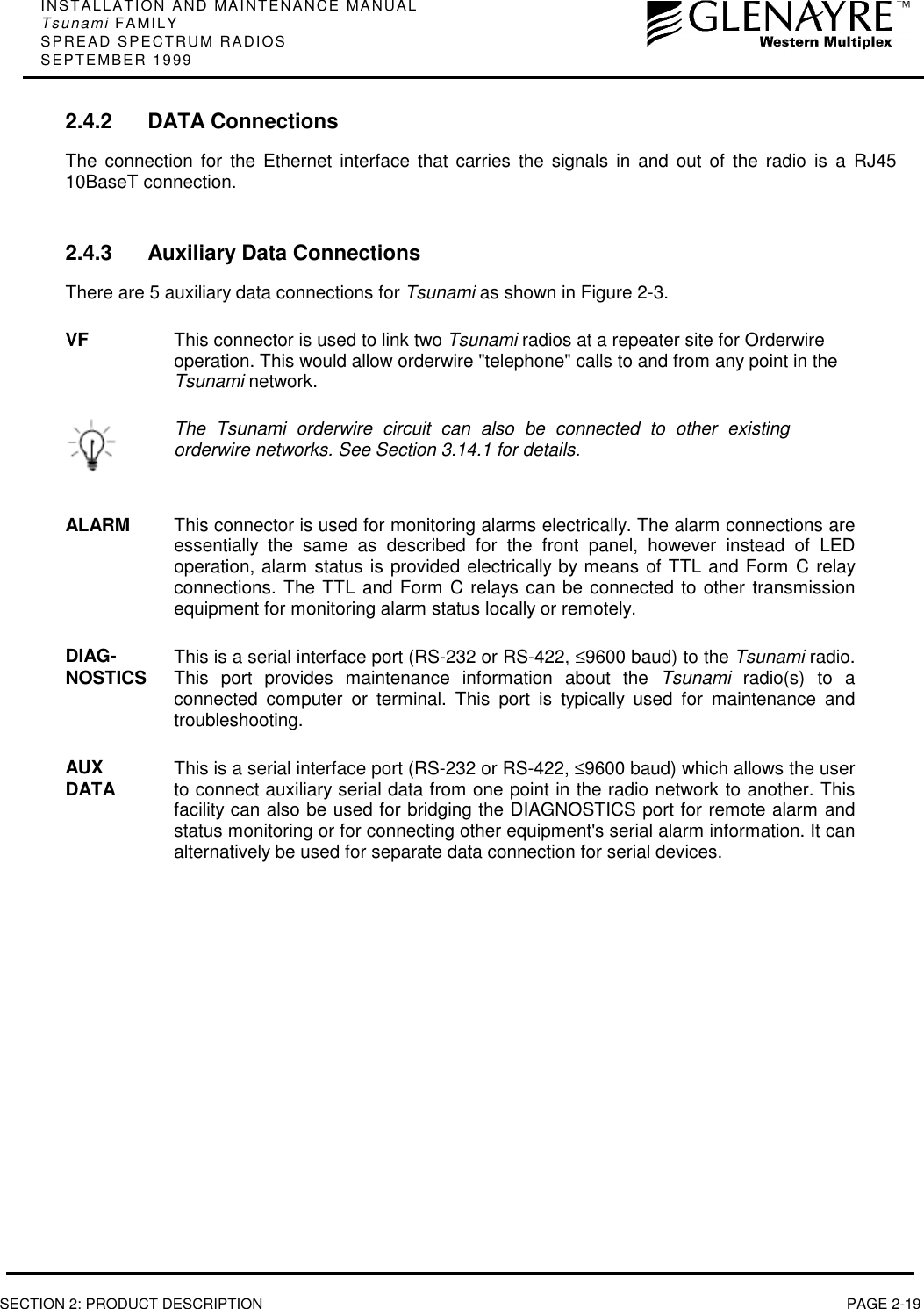

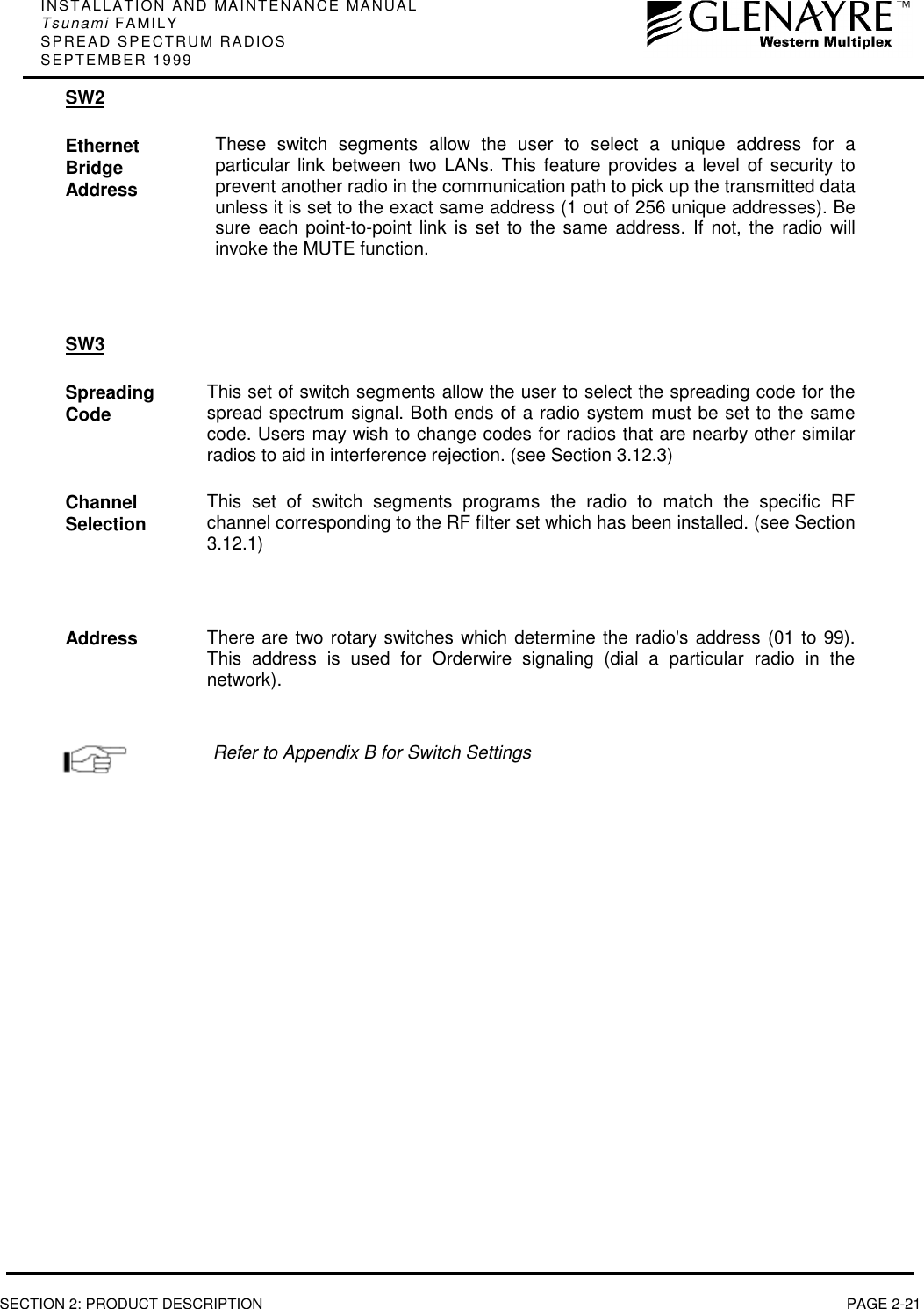

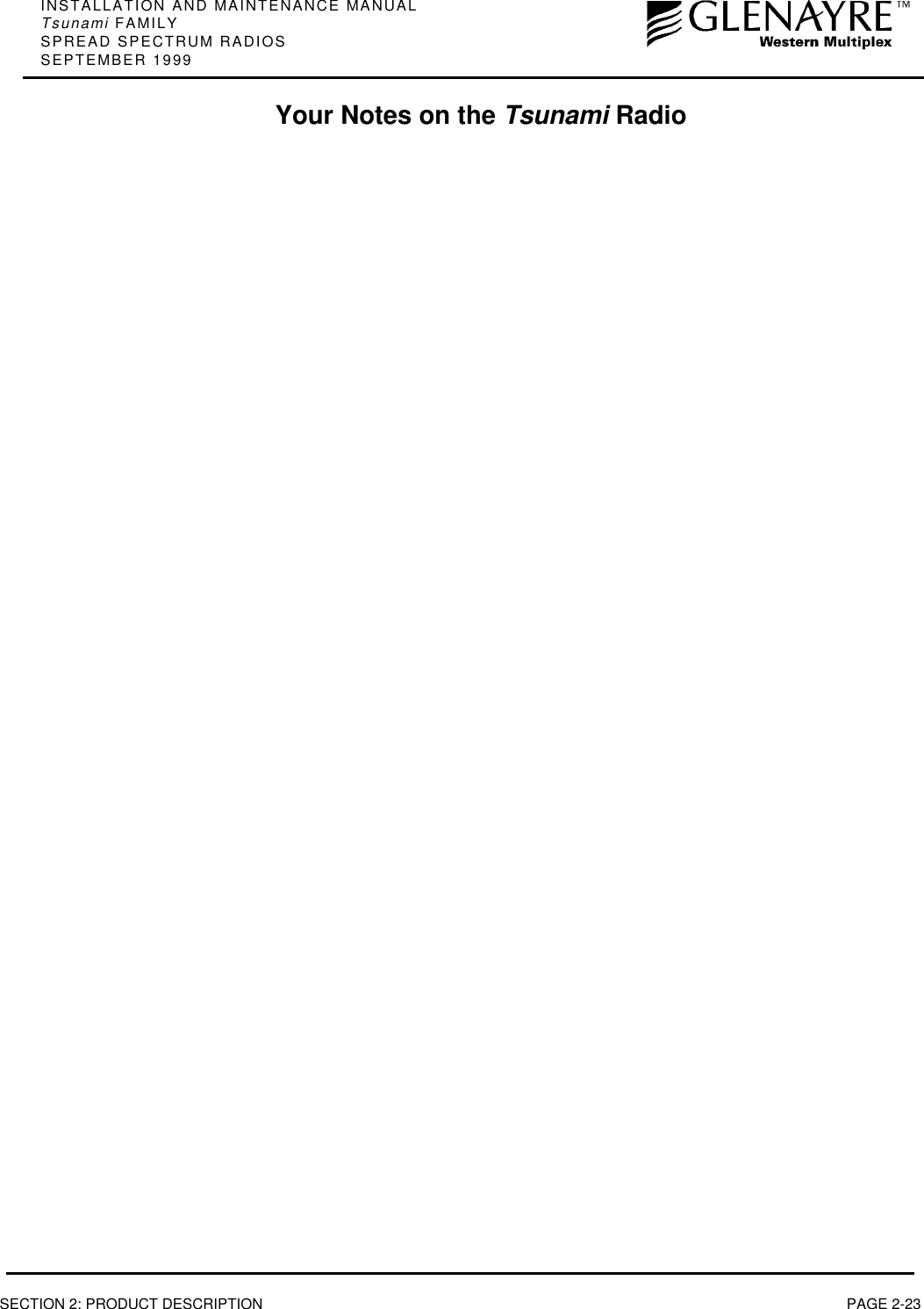
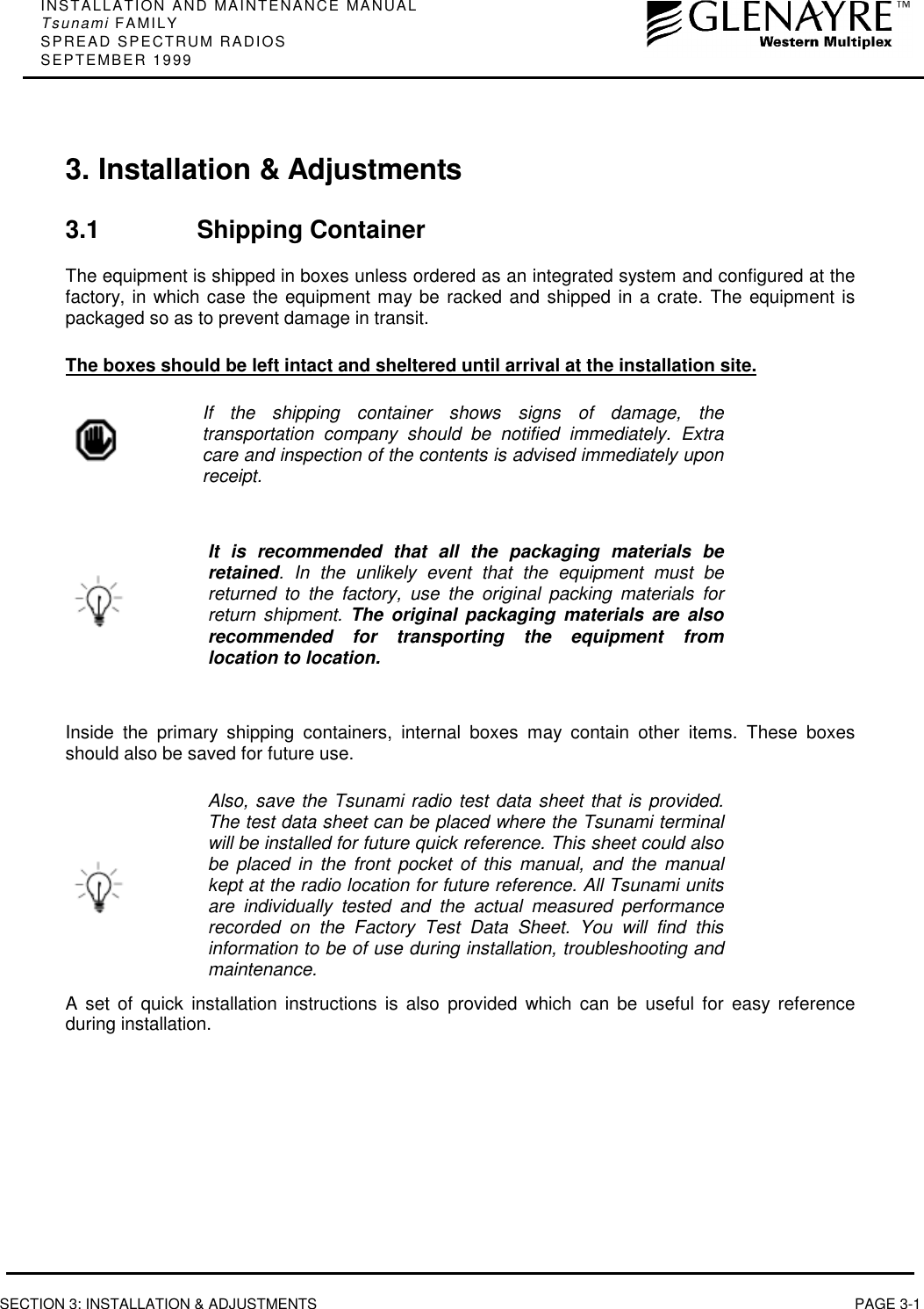
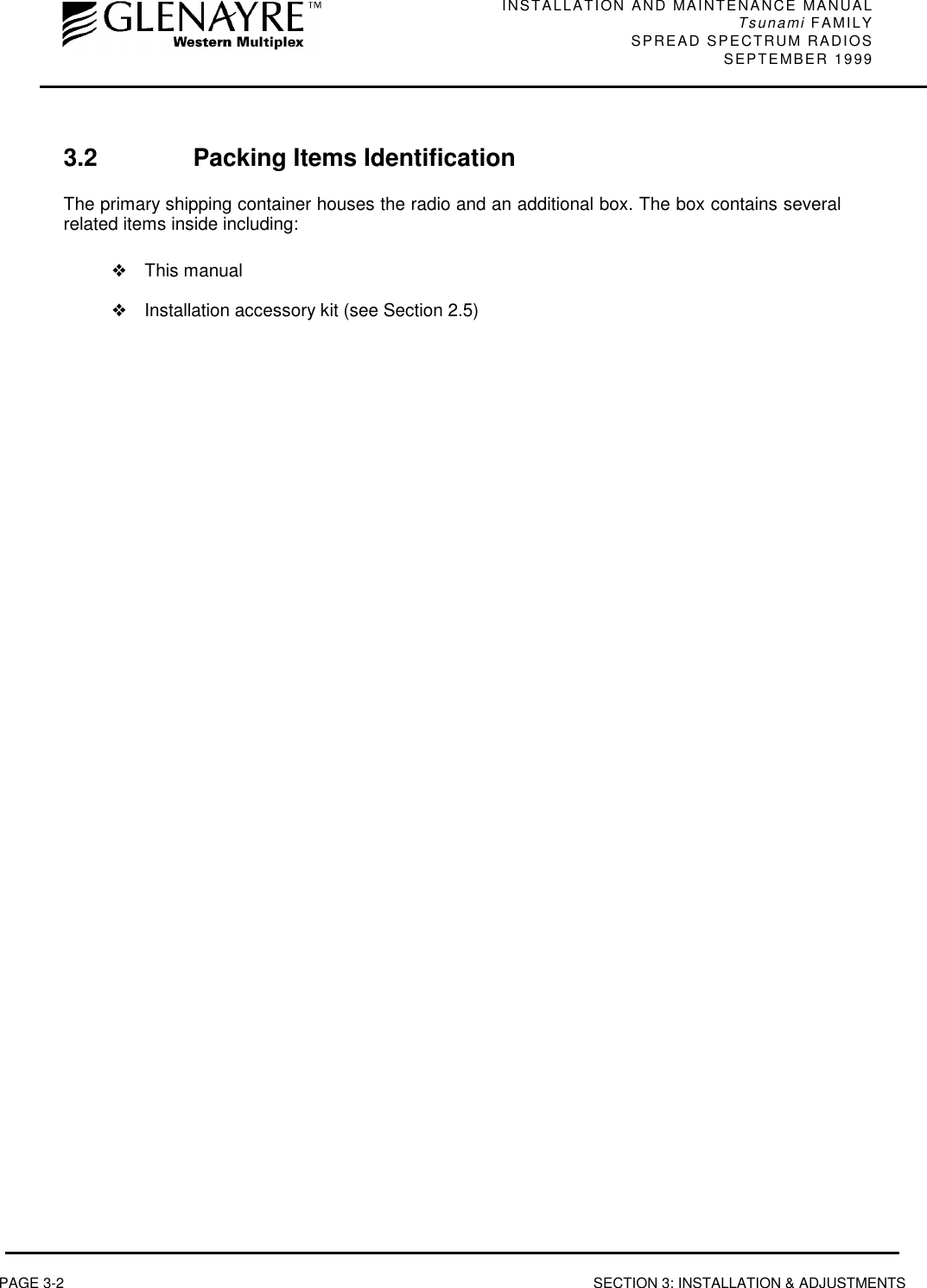

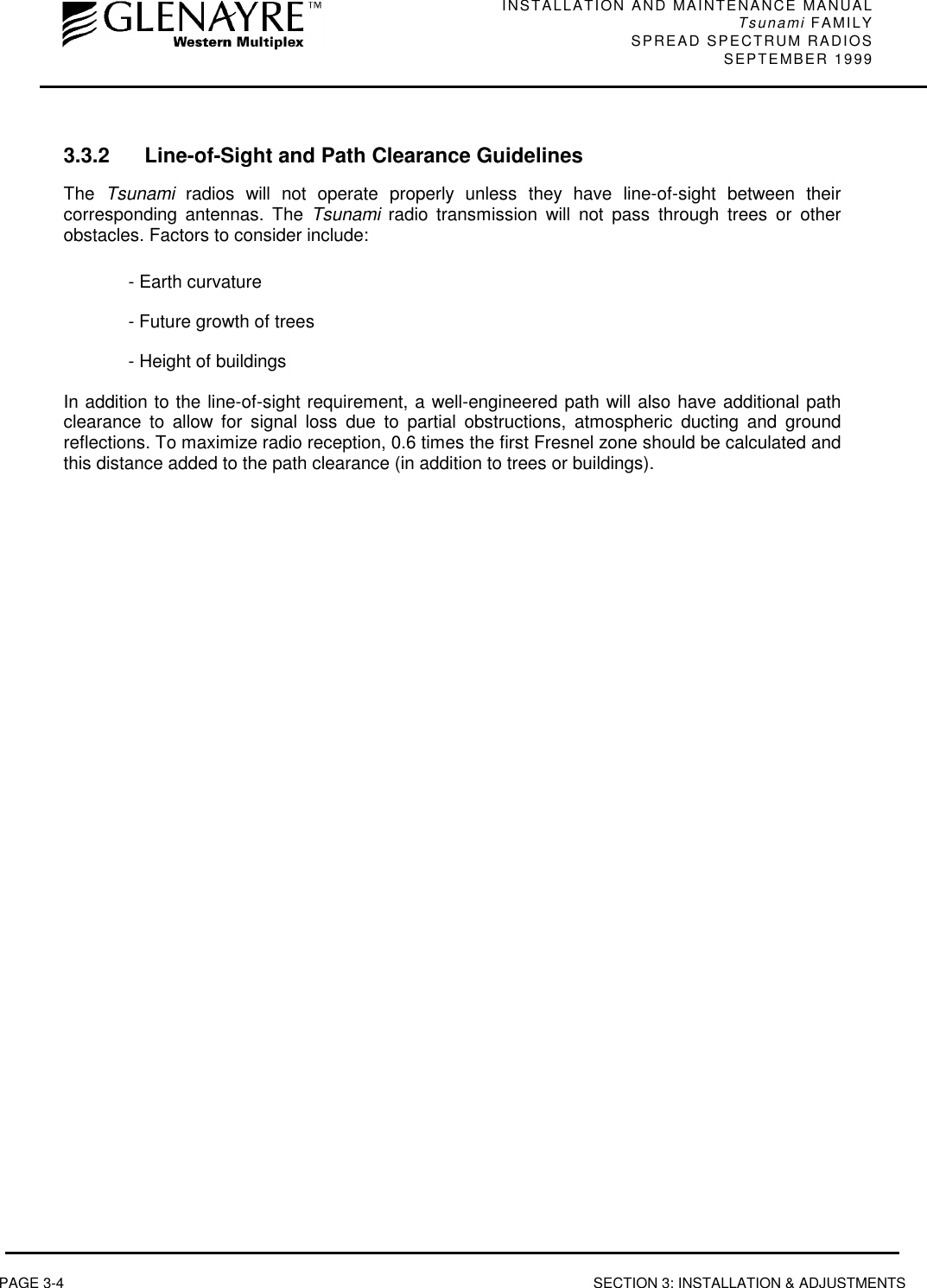
![INSTALLATION AND MAINTENANCE MANUALTsunami FAMILYSPREAD SPECTRUM RADIOSSEPTEMBER 1999SECTION 3: INSTALLATION & ADJUSTMENTS PAGE 3-53.3.3 RSL Calculation and Link BudgetThe received signal level (RSL) can be estimated using the following formula:RSL (dBm) = Pout - FL1+ G1 + G2 - FL2 - Lpwhere: Pout is the transmitter output power (in dBm)FL1 is the feeder loss of the transmit side (in dB)G1 is the gain of the transmit antenna (in dB)G2 is the gain of the receive antenna (in dB)FL2 is the feeder loss of the receive side (in dB)Lp is the Path loss, defined by:Lp (dB) = 96.6 + 20 log10F + 20 log10Dwhere: F = Frequency in GHz (2.4 or 5.8)D = Distance of path in milesThis link budget is very important for determining any potential problems during installation. If youhave calculated the expected RSL, you can see if it has been achieved during installation, andtroubleshoot if necessary.In the USA, 5.8 GHz models of the Tsunami may be installedwith any size directional antennas and operated at full power.The 2.4 GHz model may require power reduction where: Pout -FL1+ G1 is replaced by 30 - [(G1 - 6)/ 3] + FL1In some countries effective isotropic radiated power (EIRP)limits apply, such as +6 dBW (+36 dBm) in Canada. Outputpower may need to be reduced, and the above path planningequation changed such that: EIRP (dBm) = Pout + G1 - FL1](https://usermanual.wiki/Proxim-Wireless/S58-12.Reply-to-request-10789-Attachment-4/User-Guide-75597-Page-45.png)
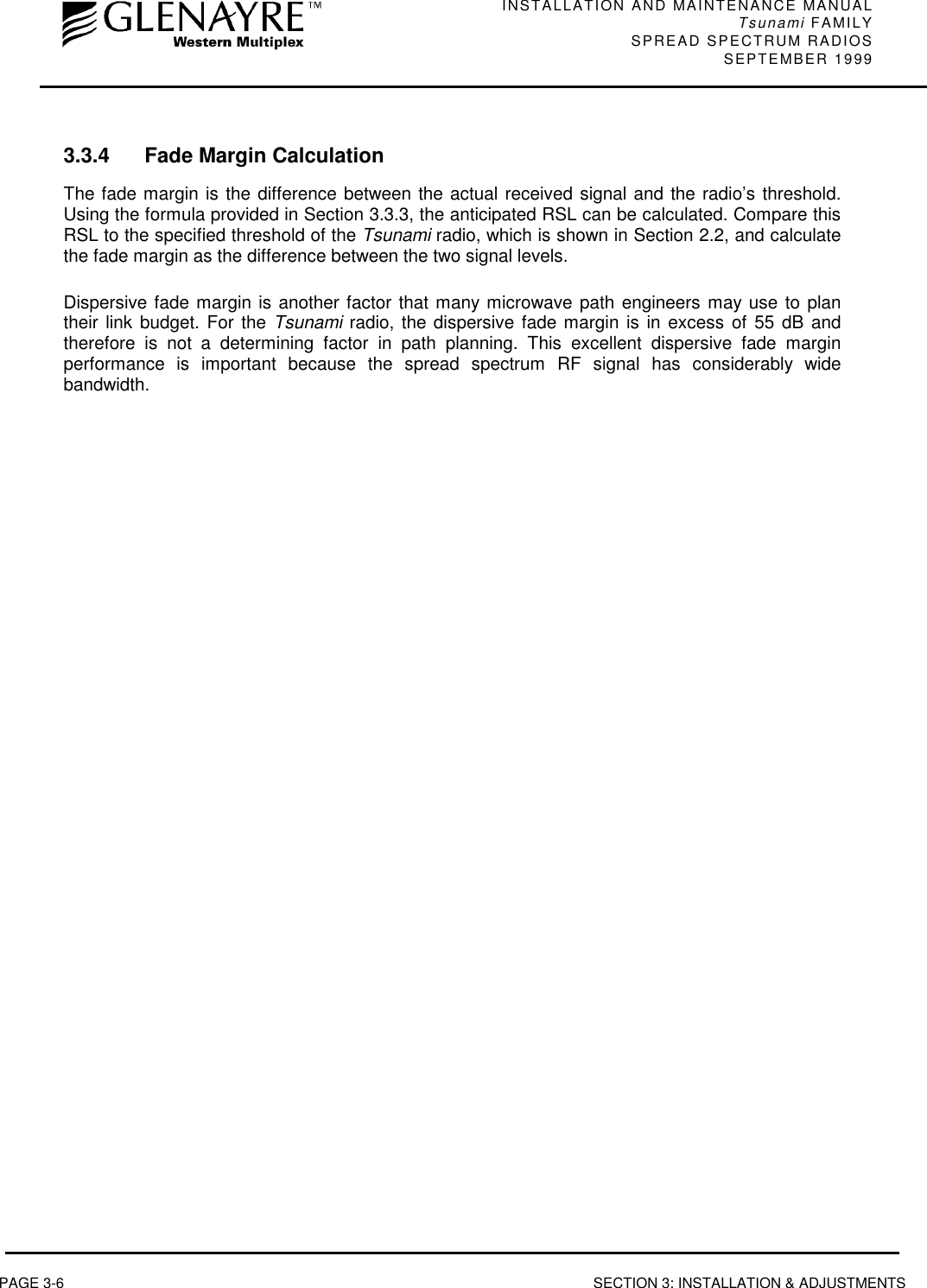
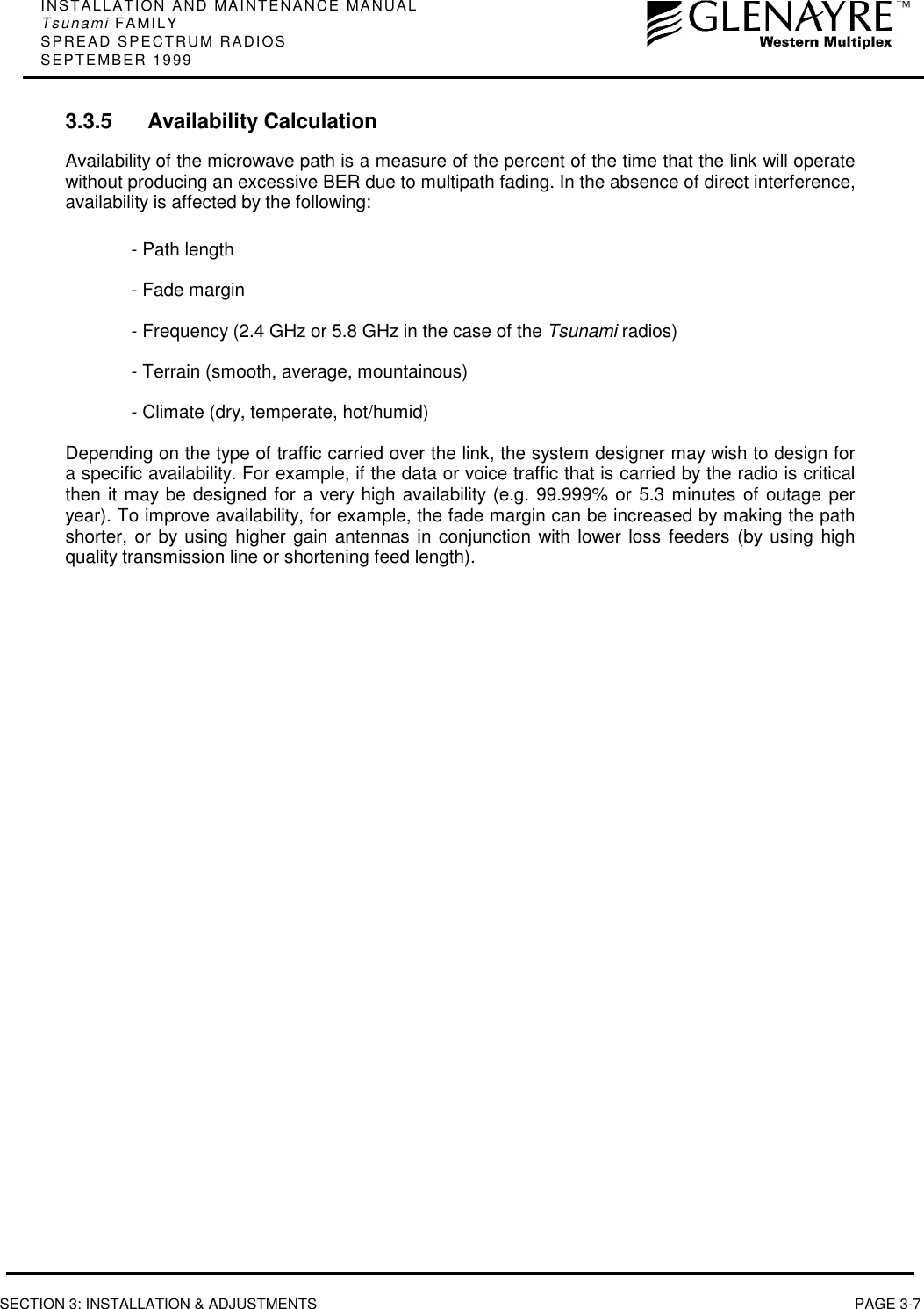
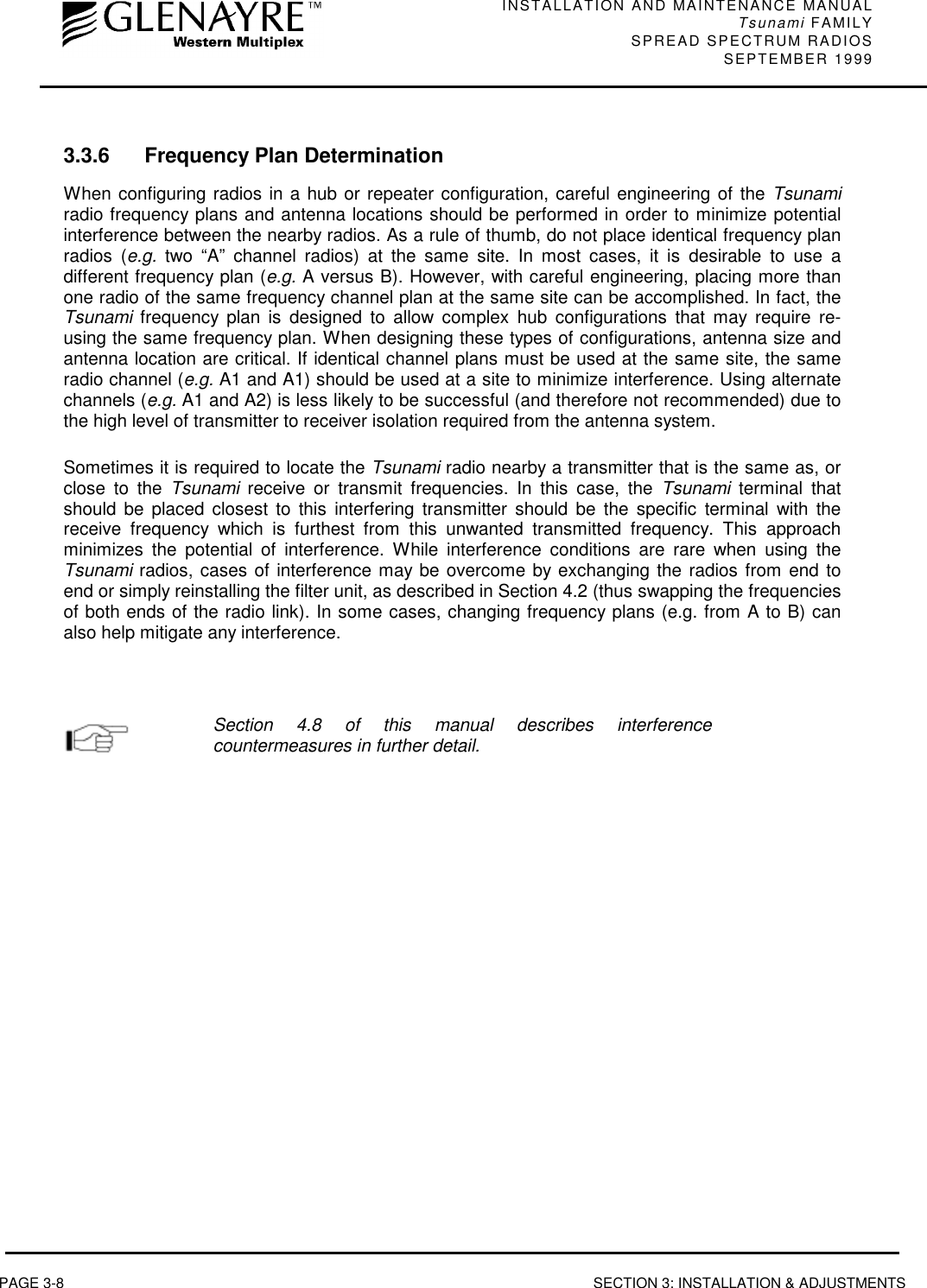


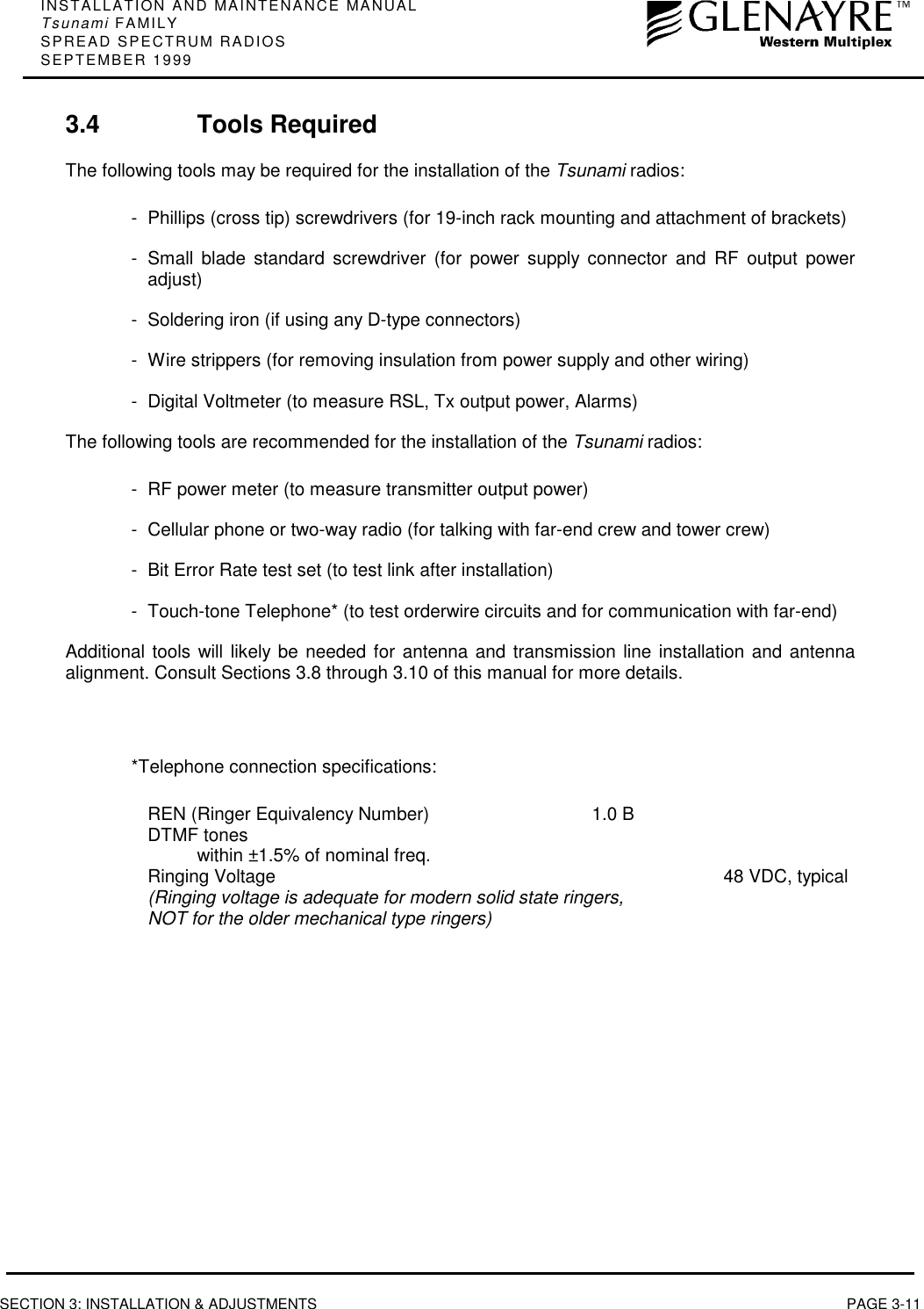
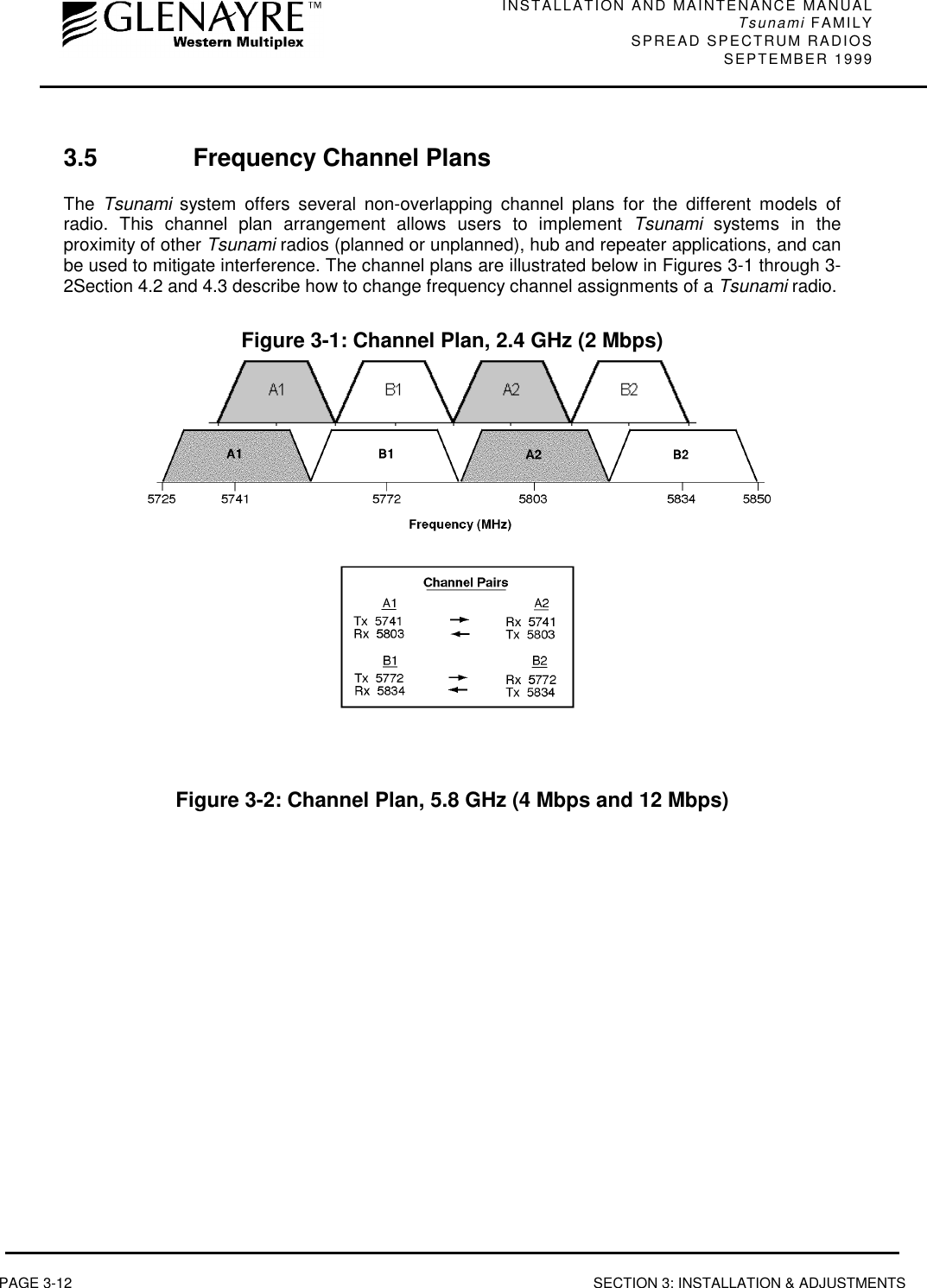
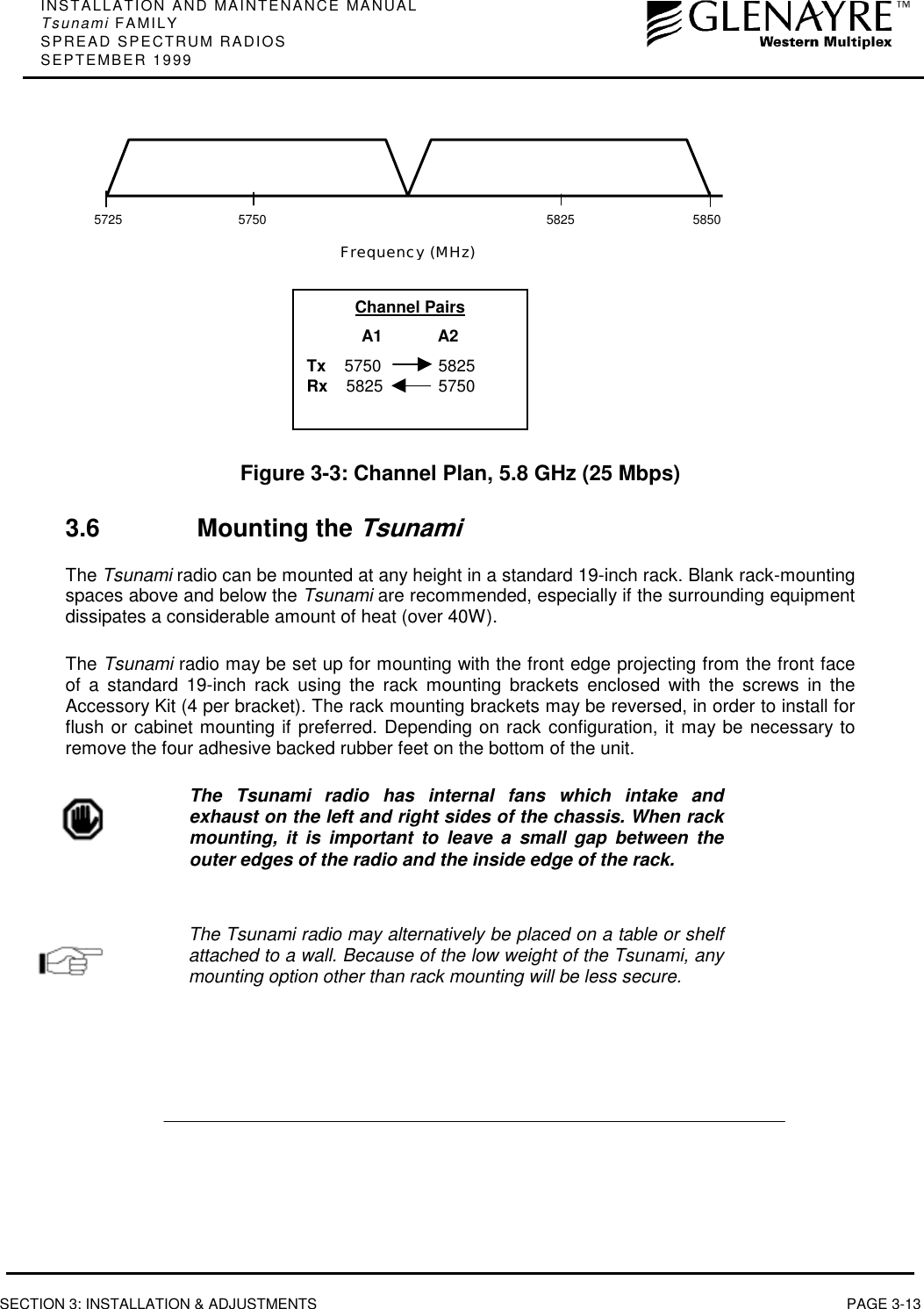
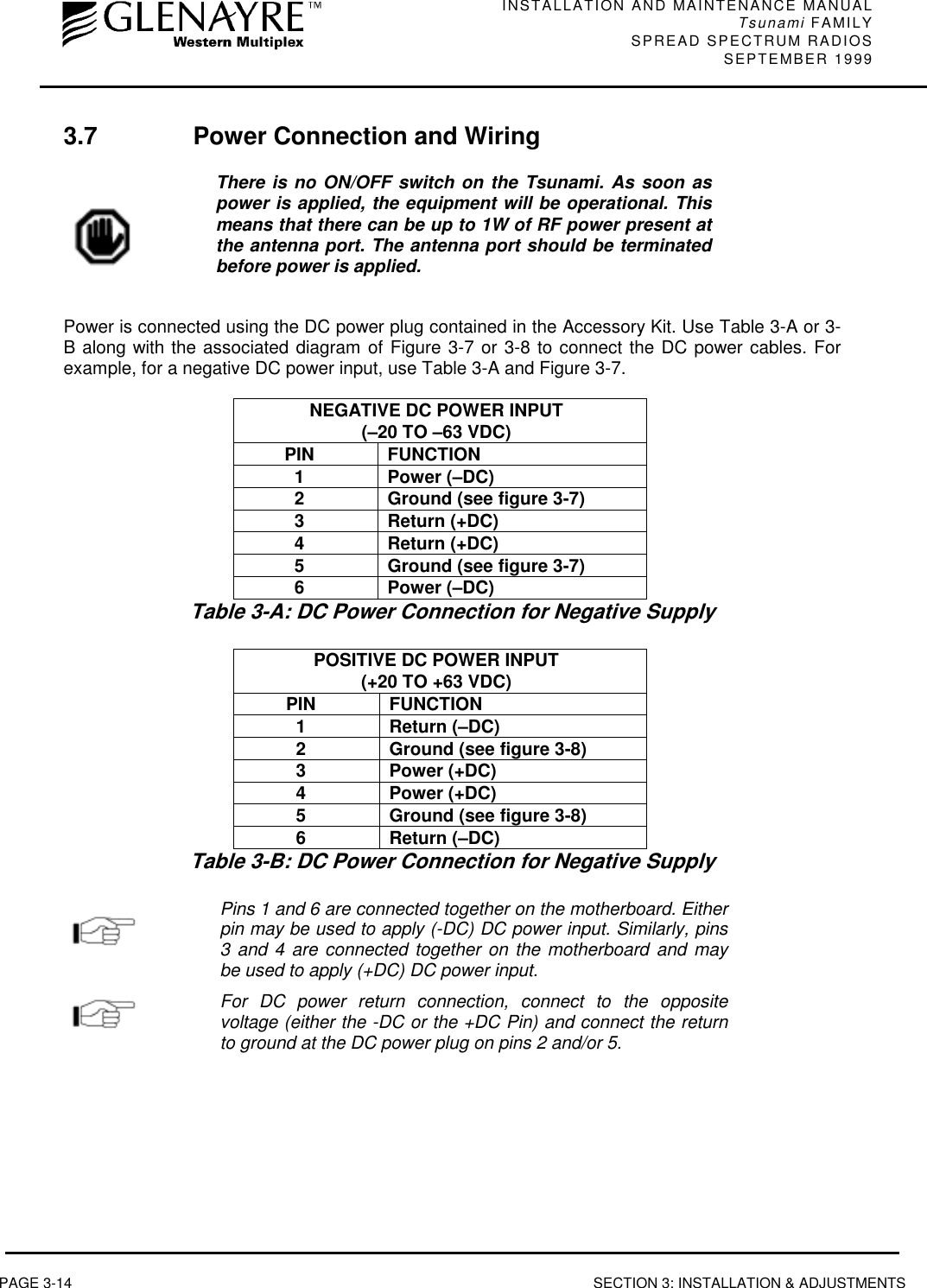
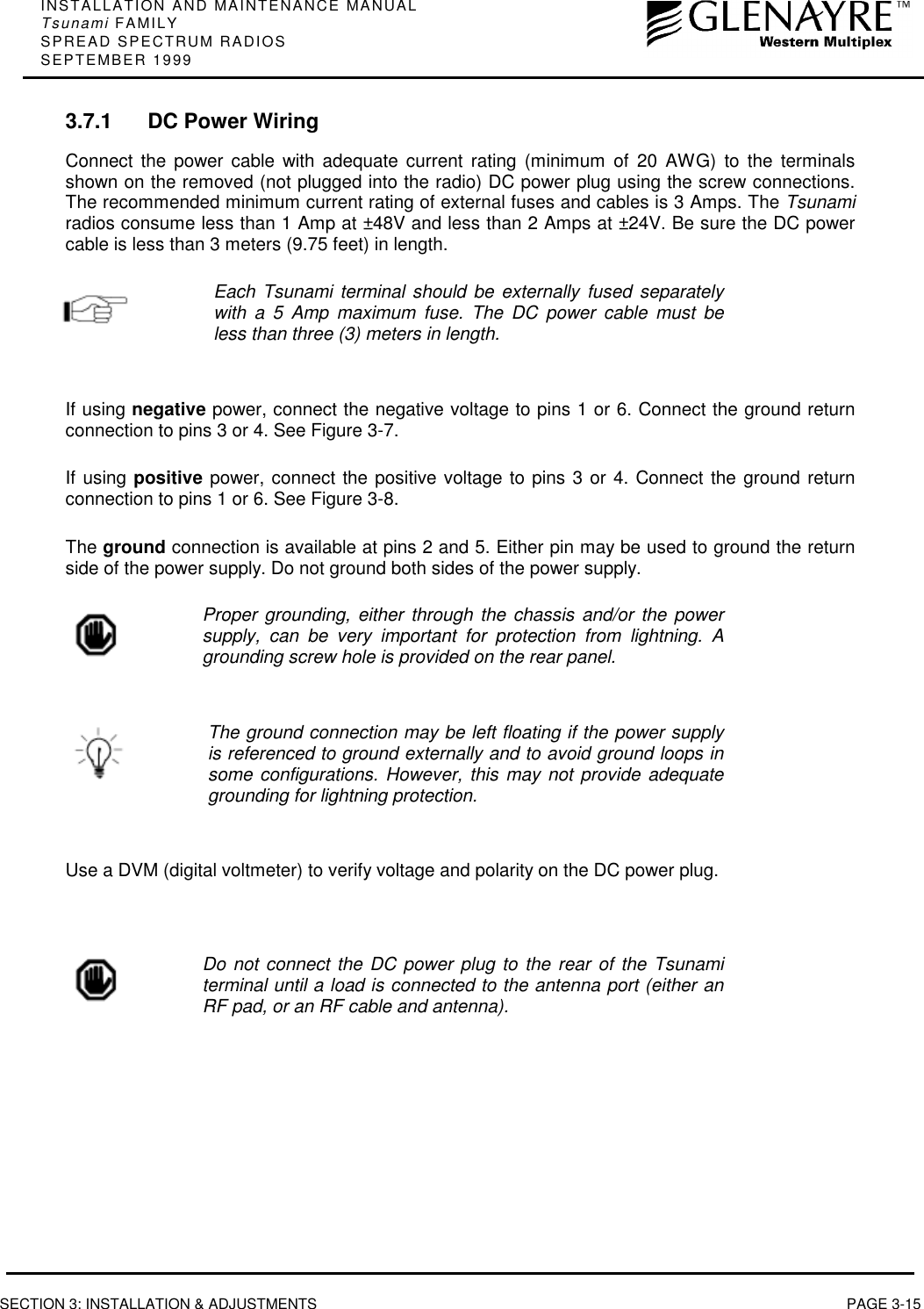
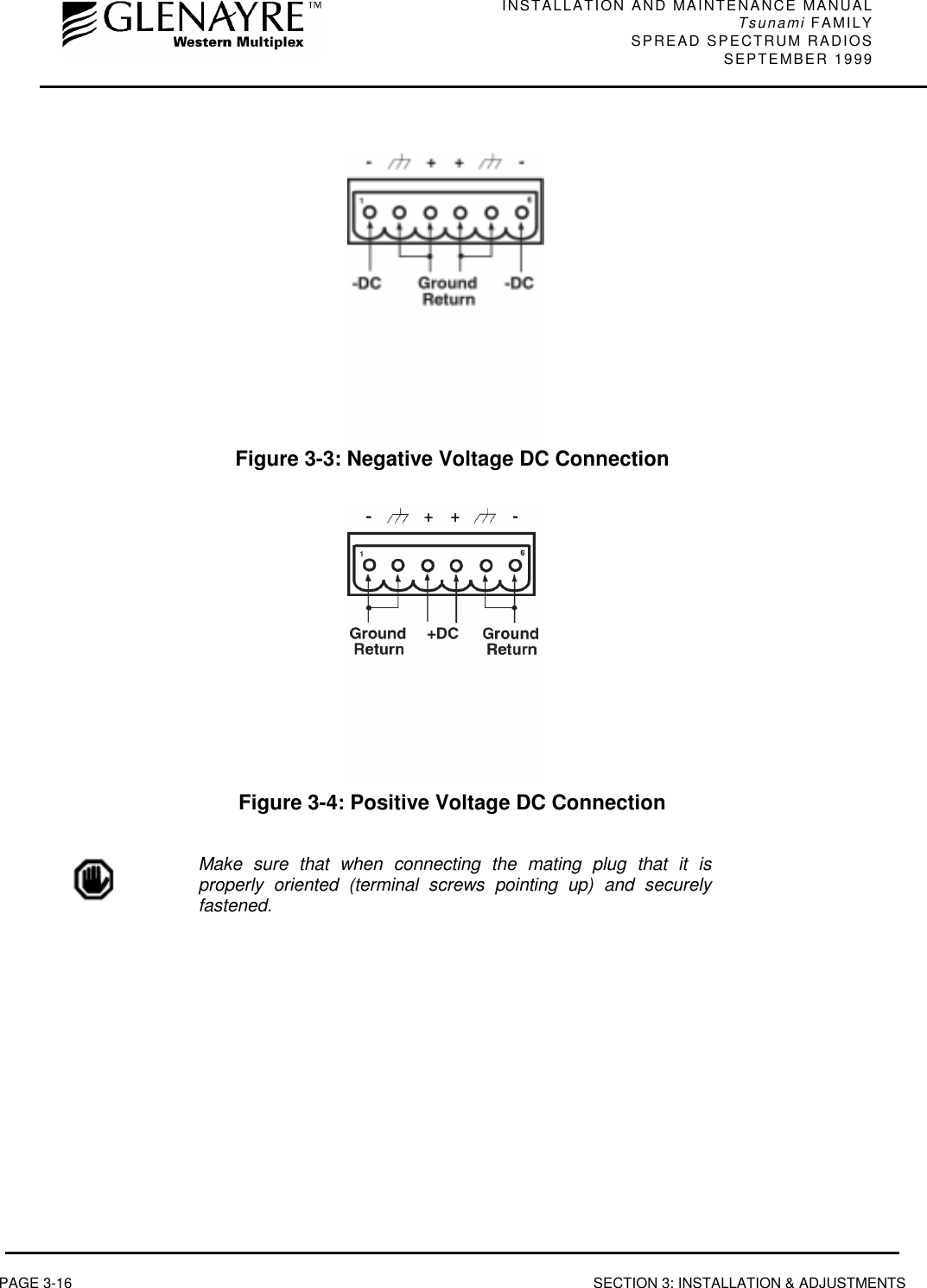
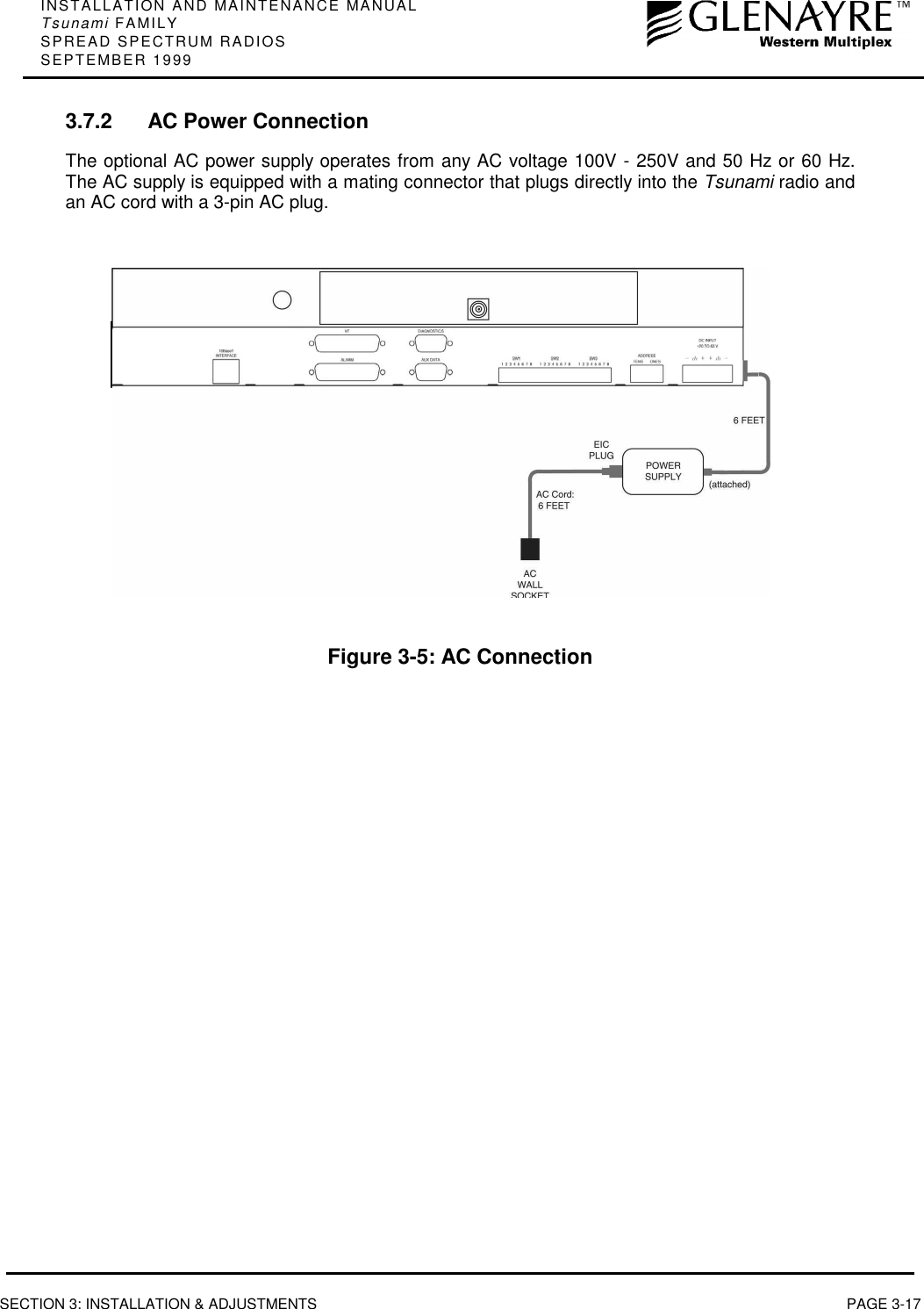
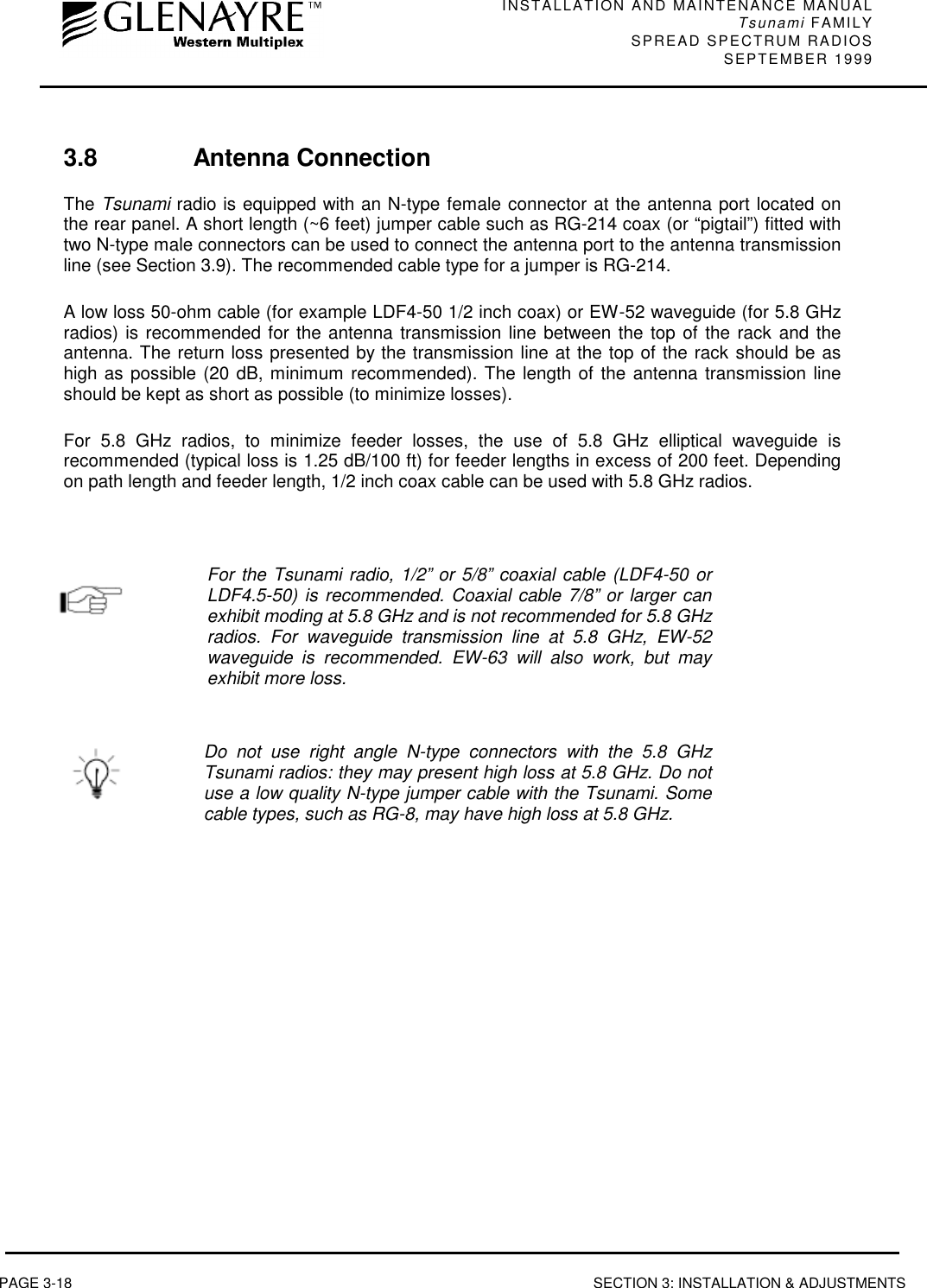
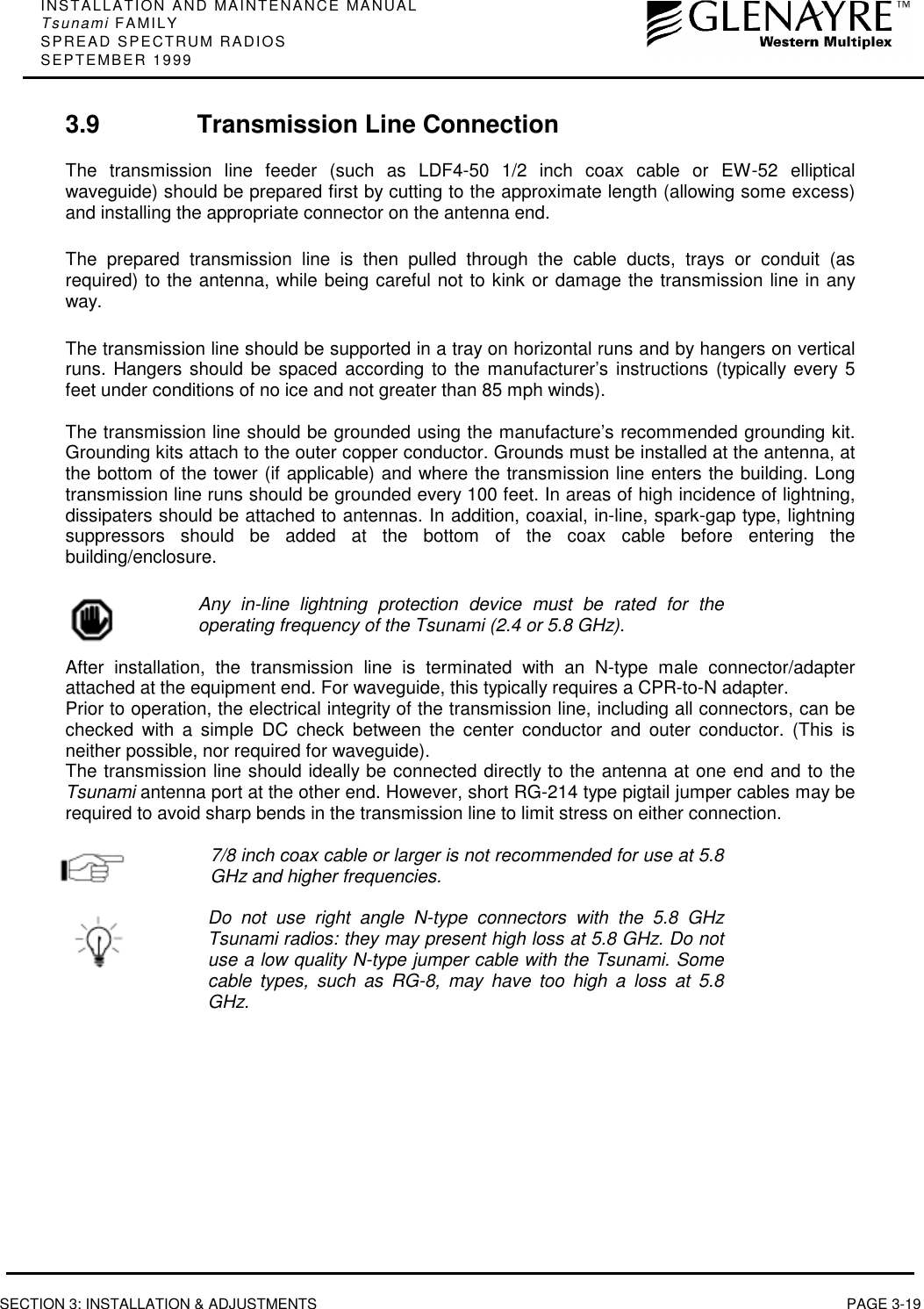
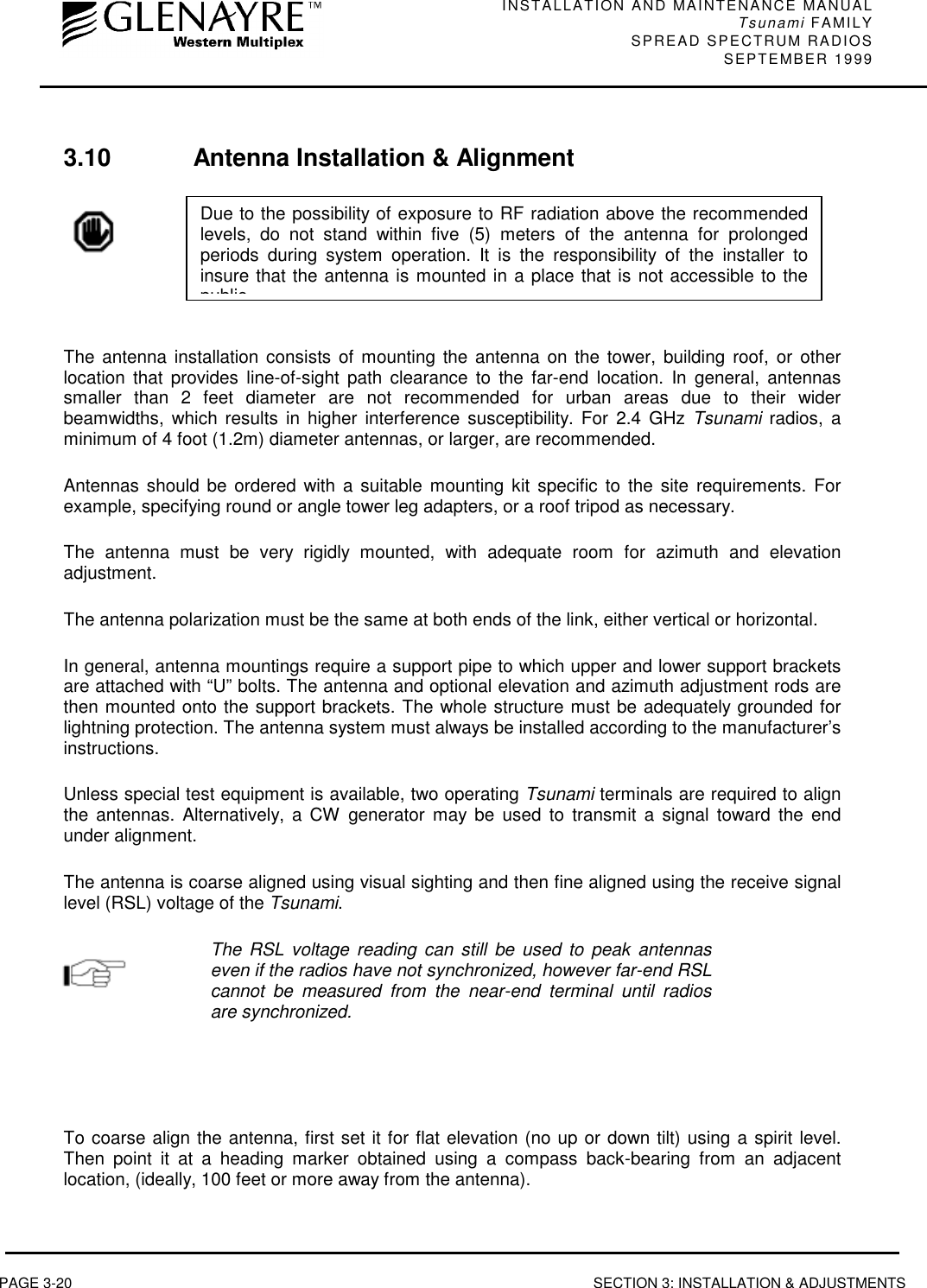
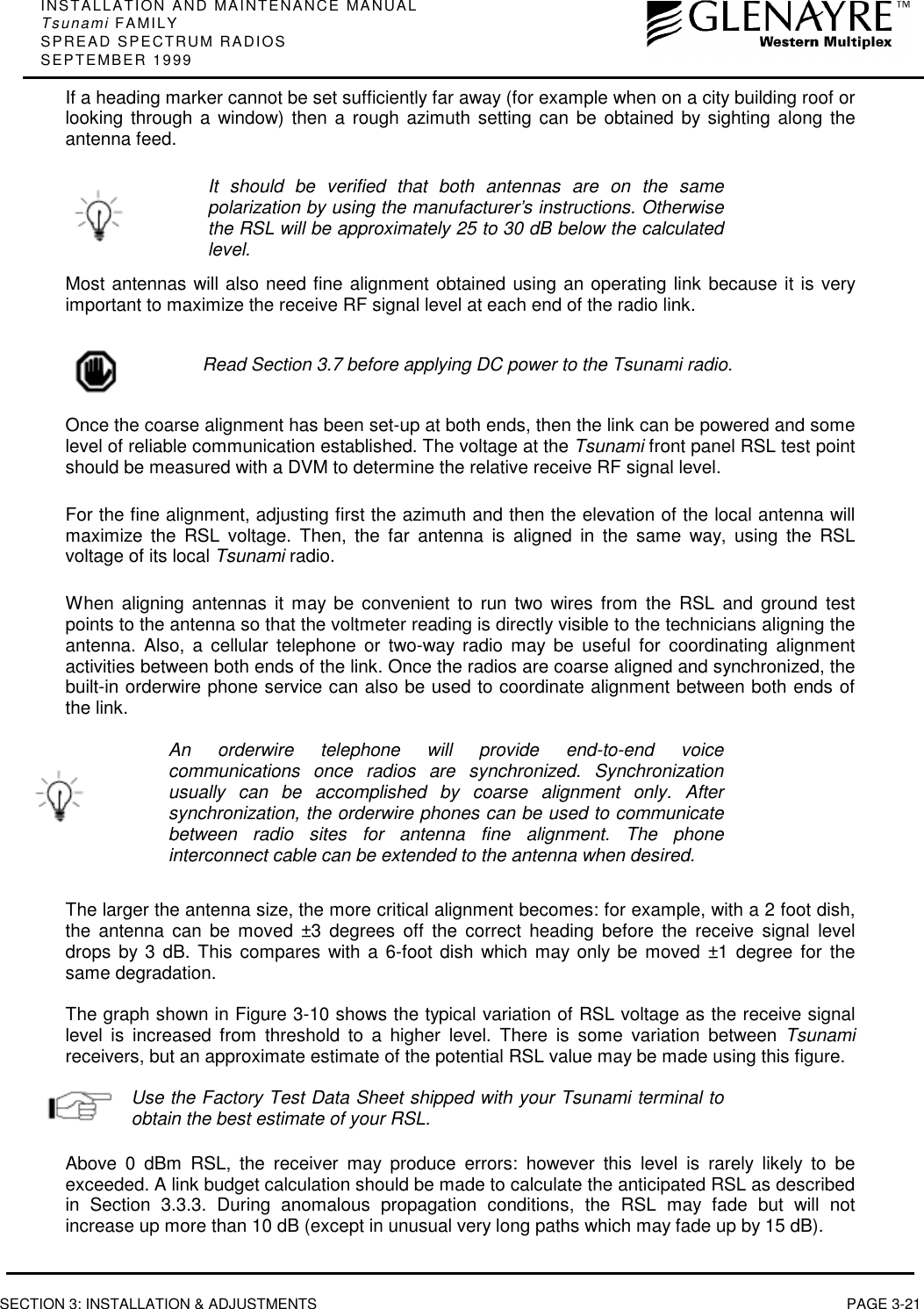


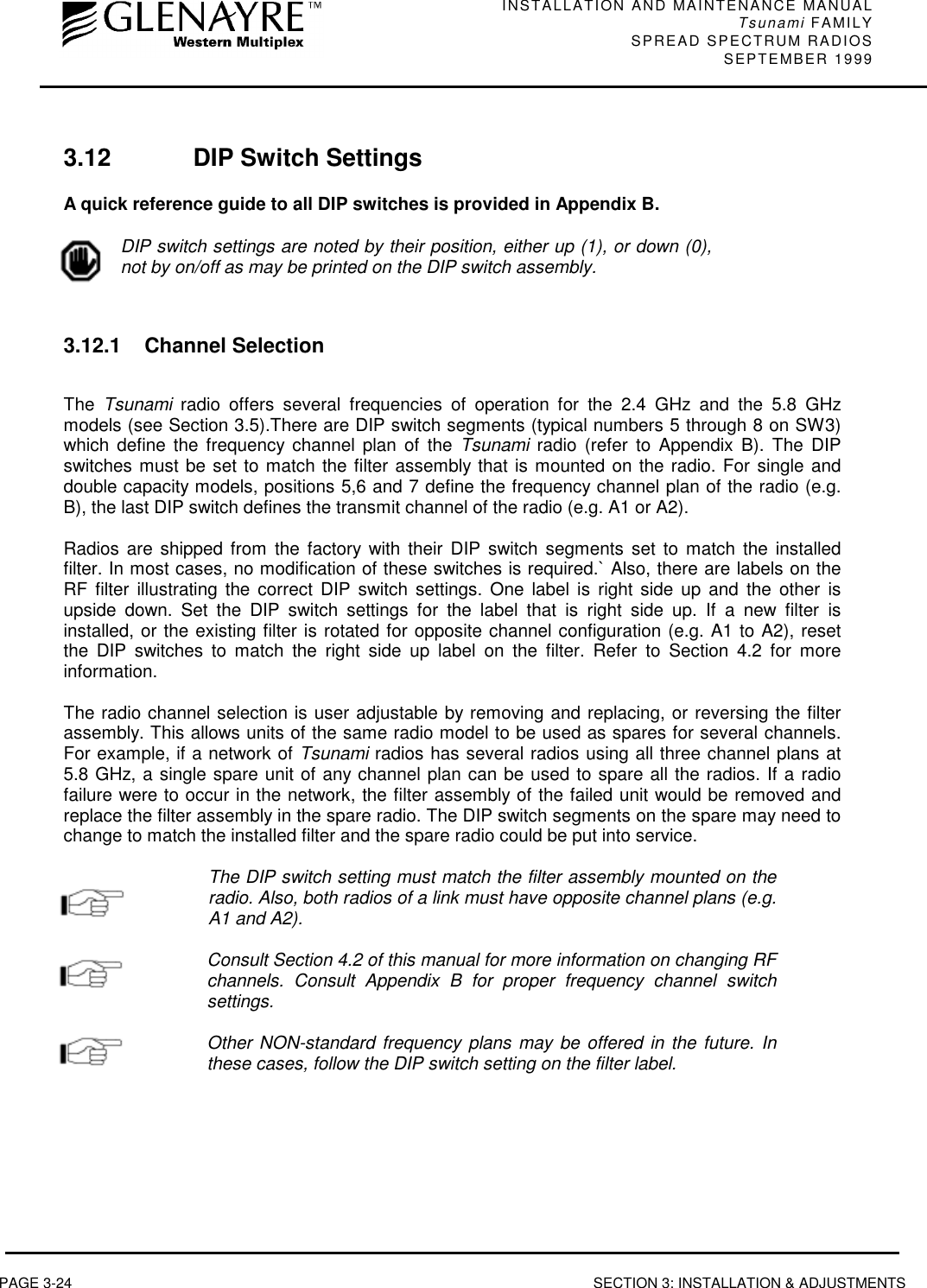
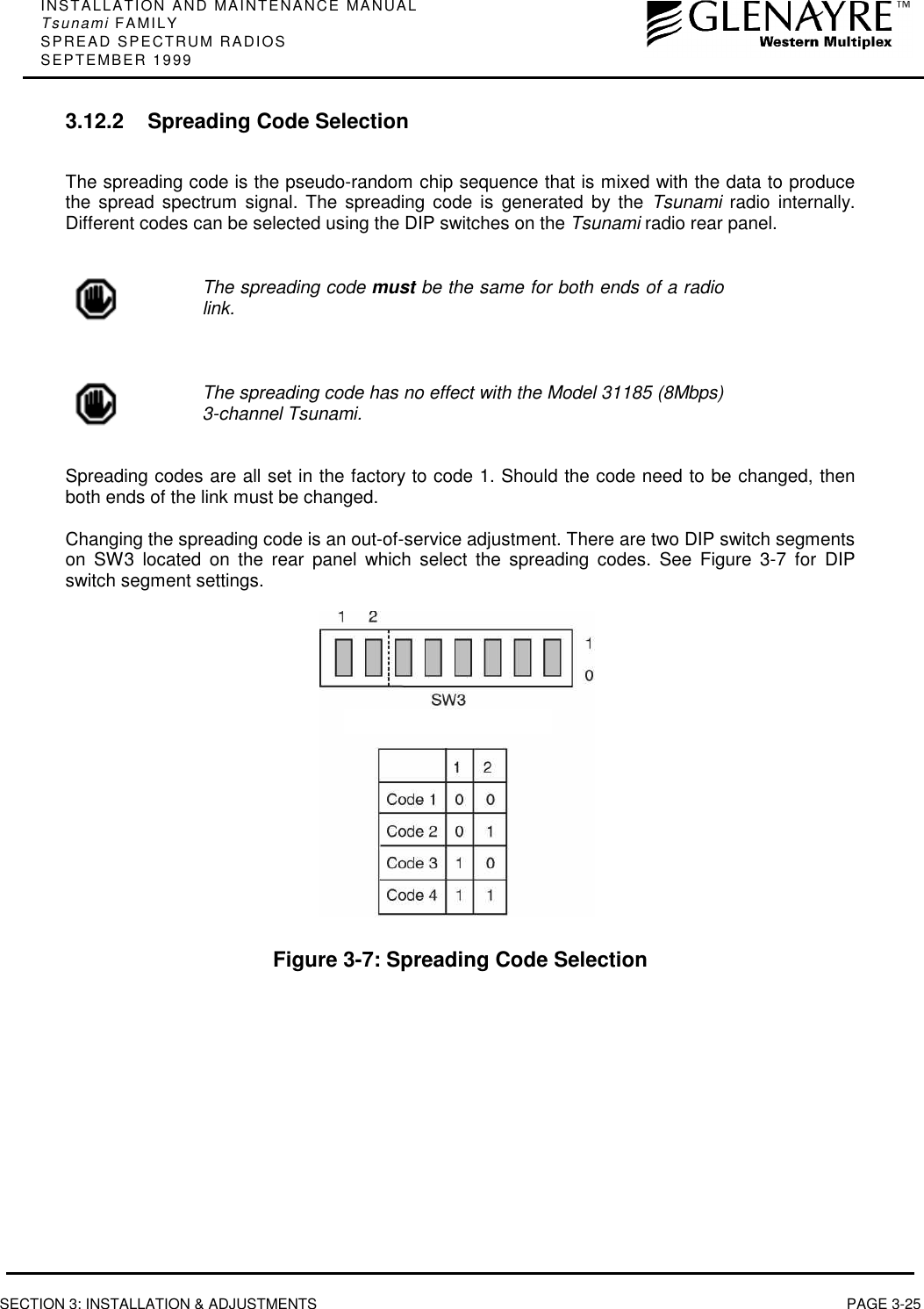
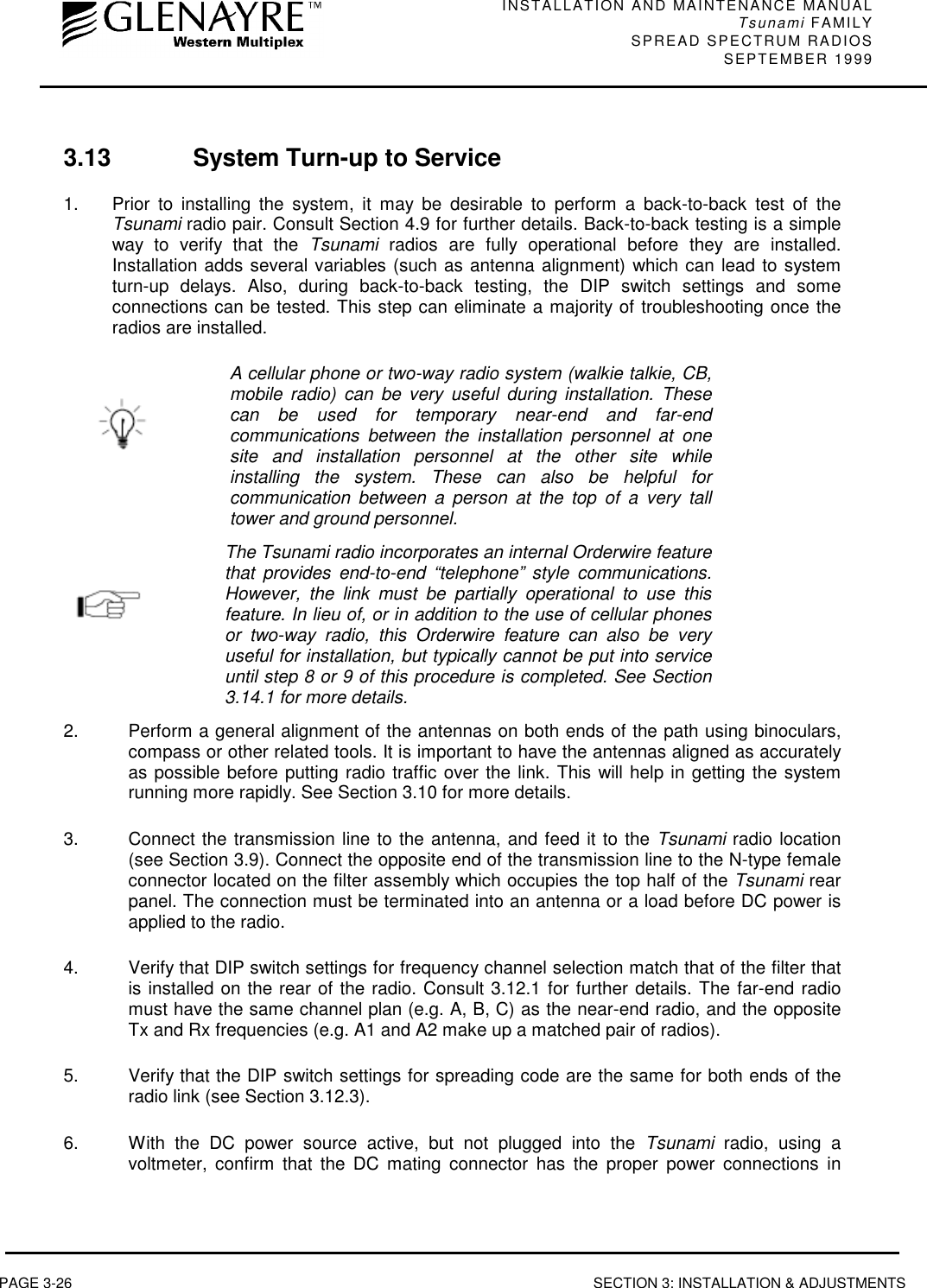

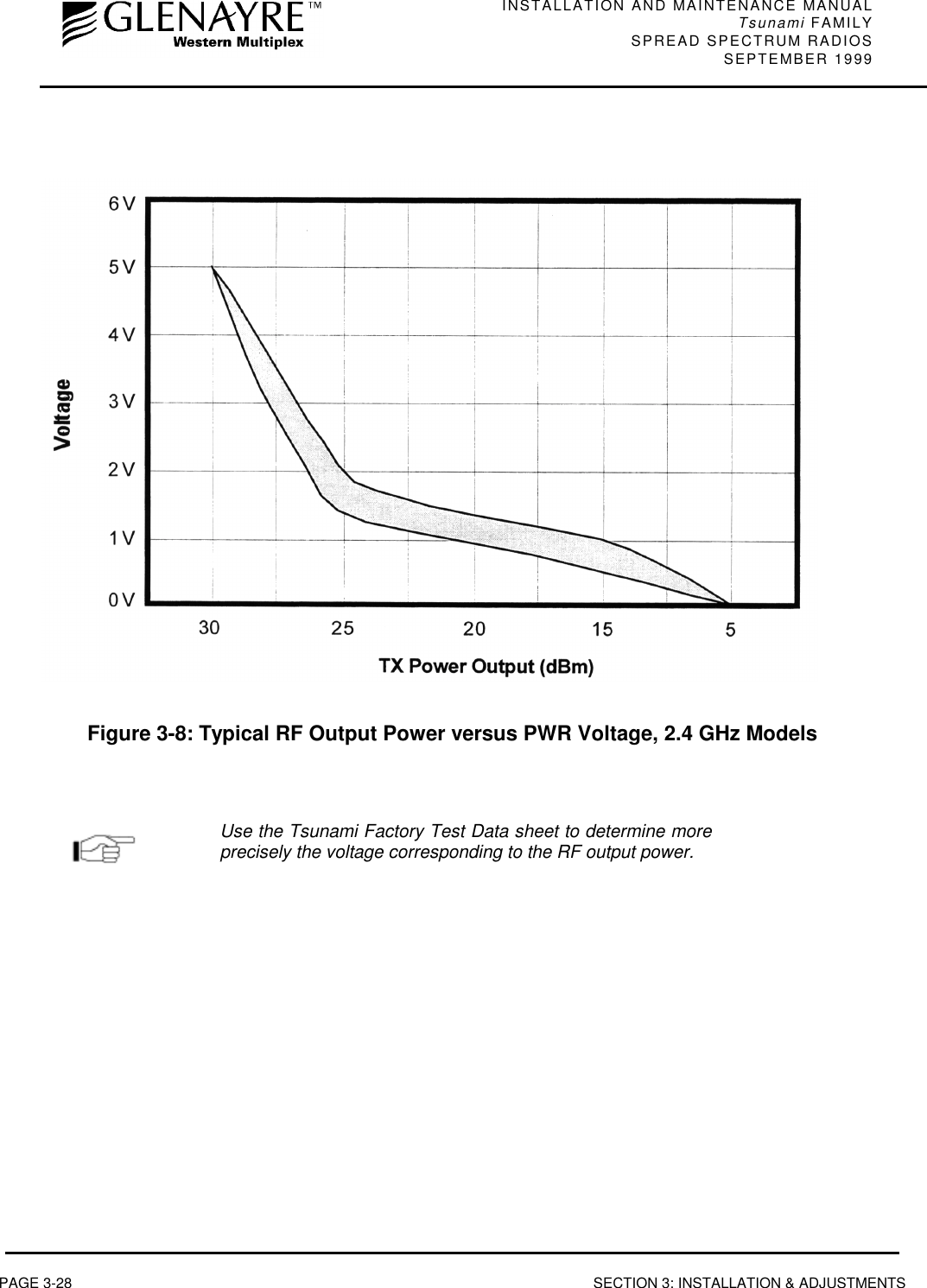
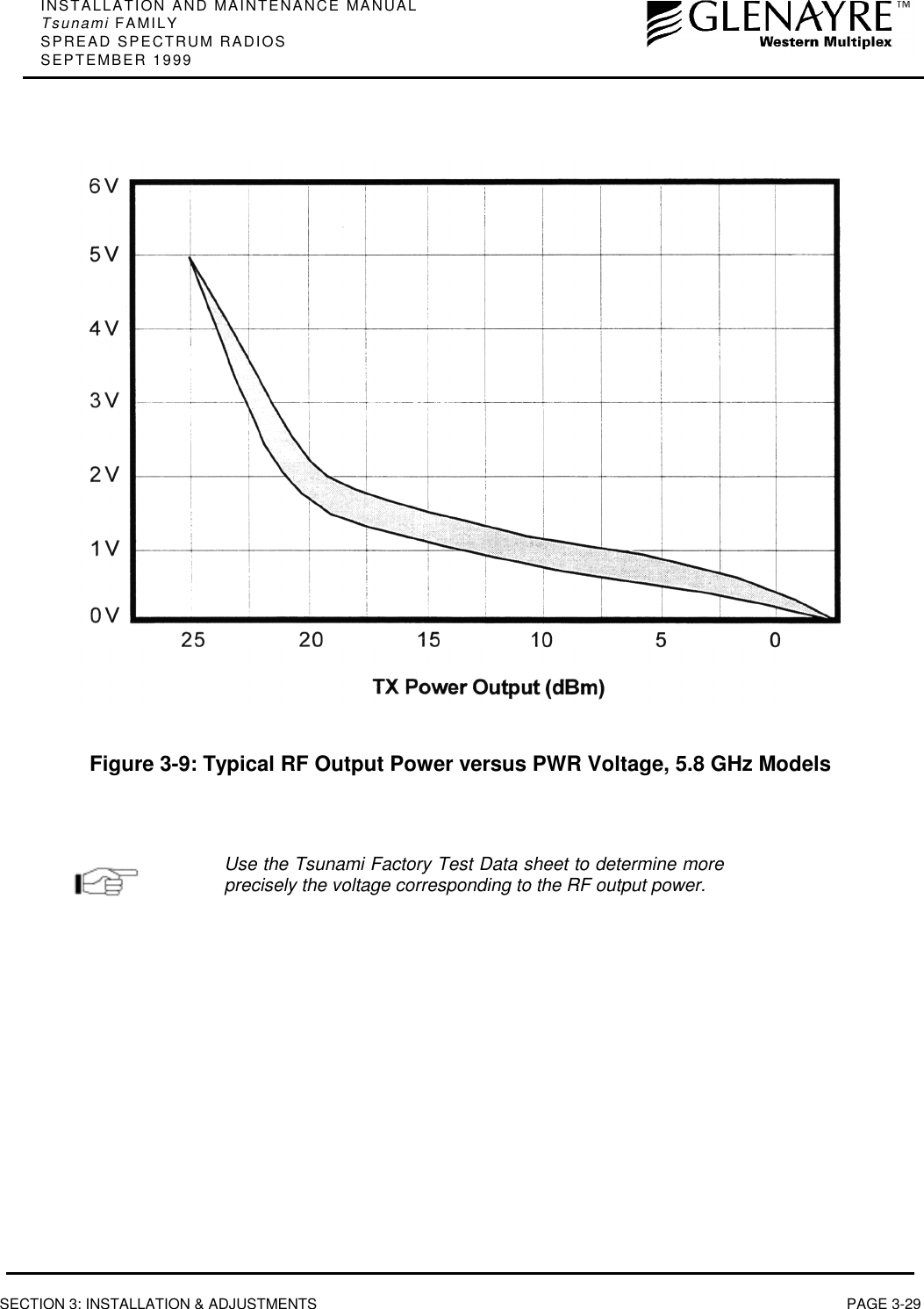
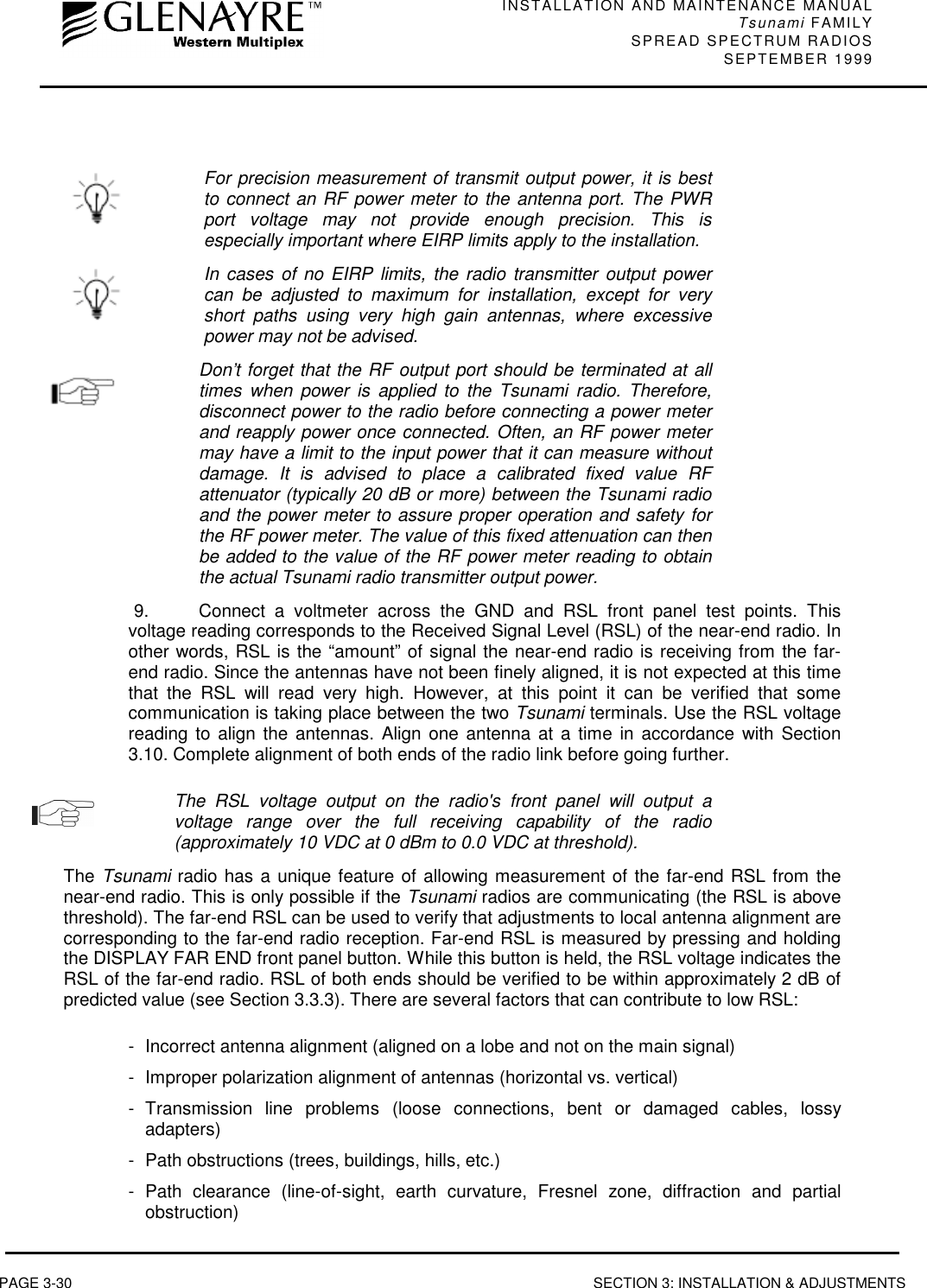
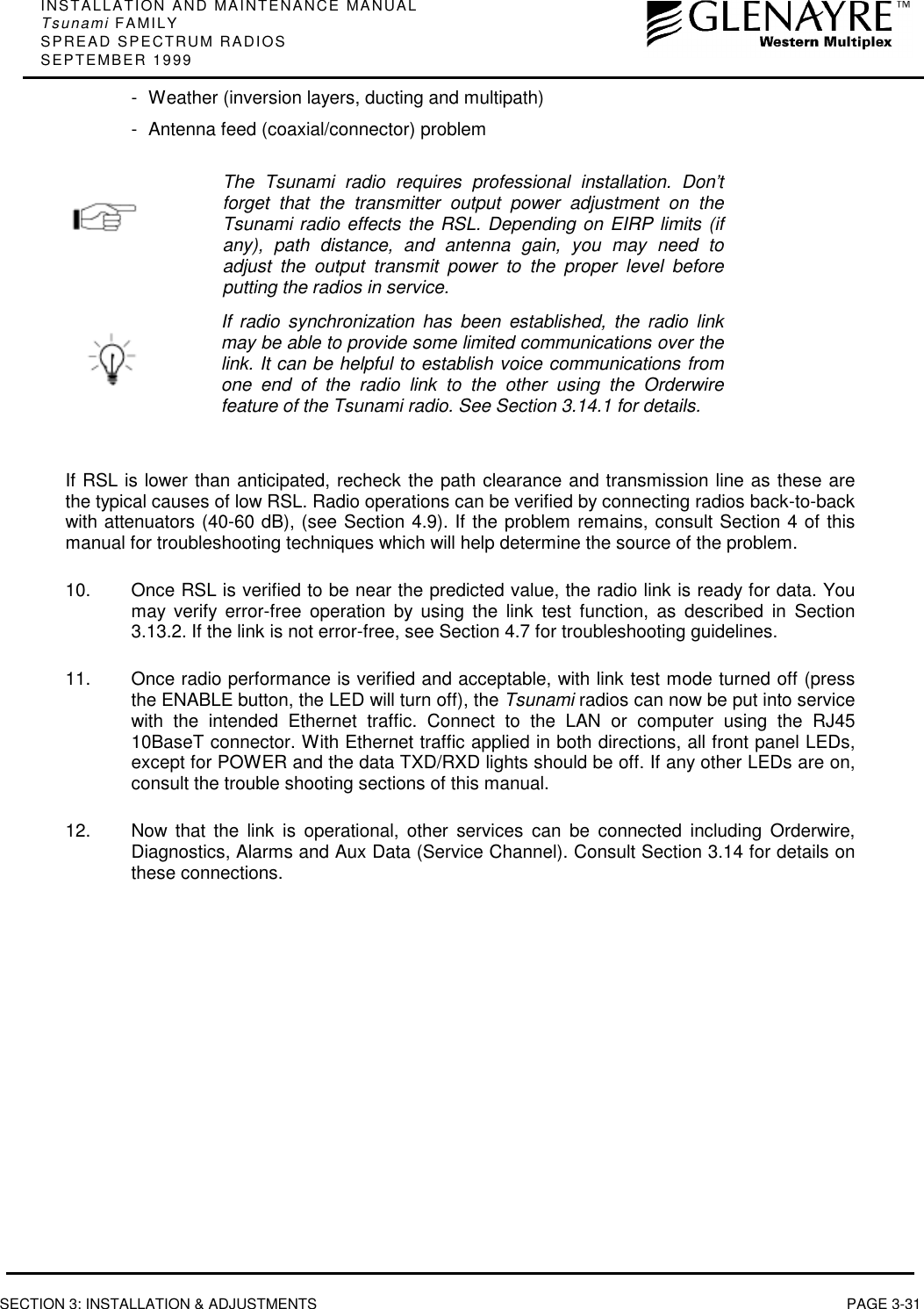
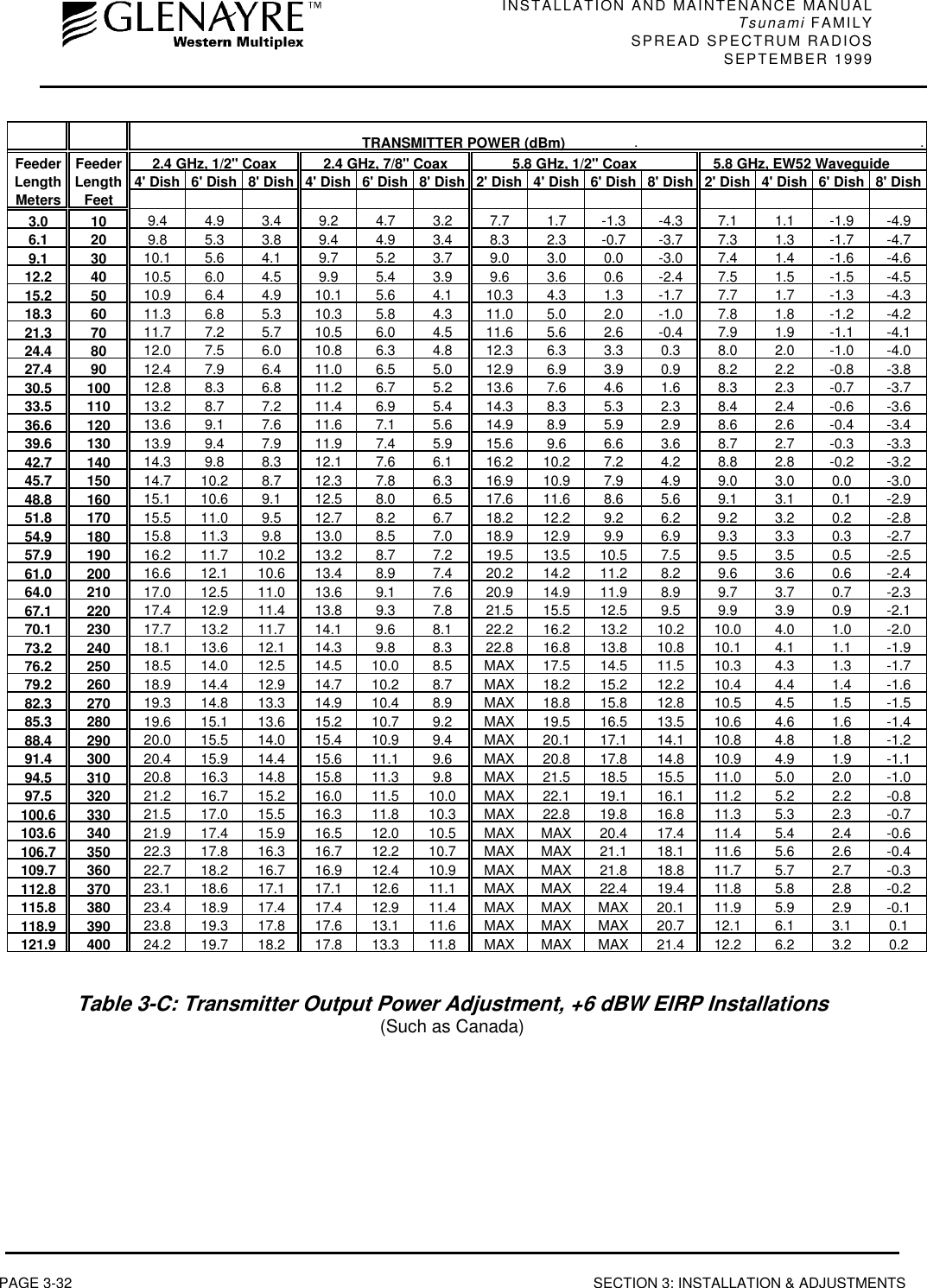
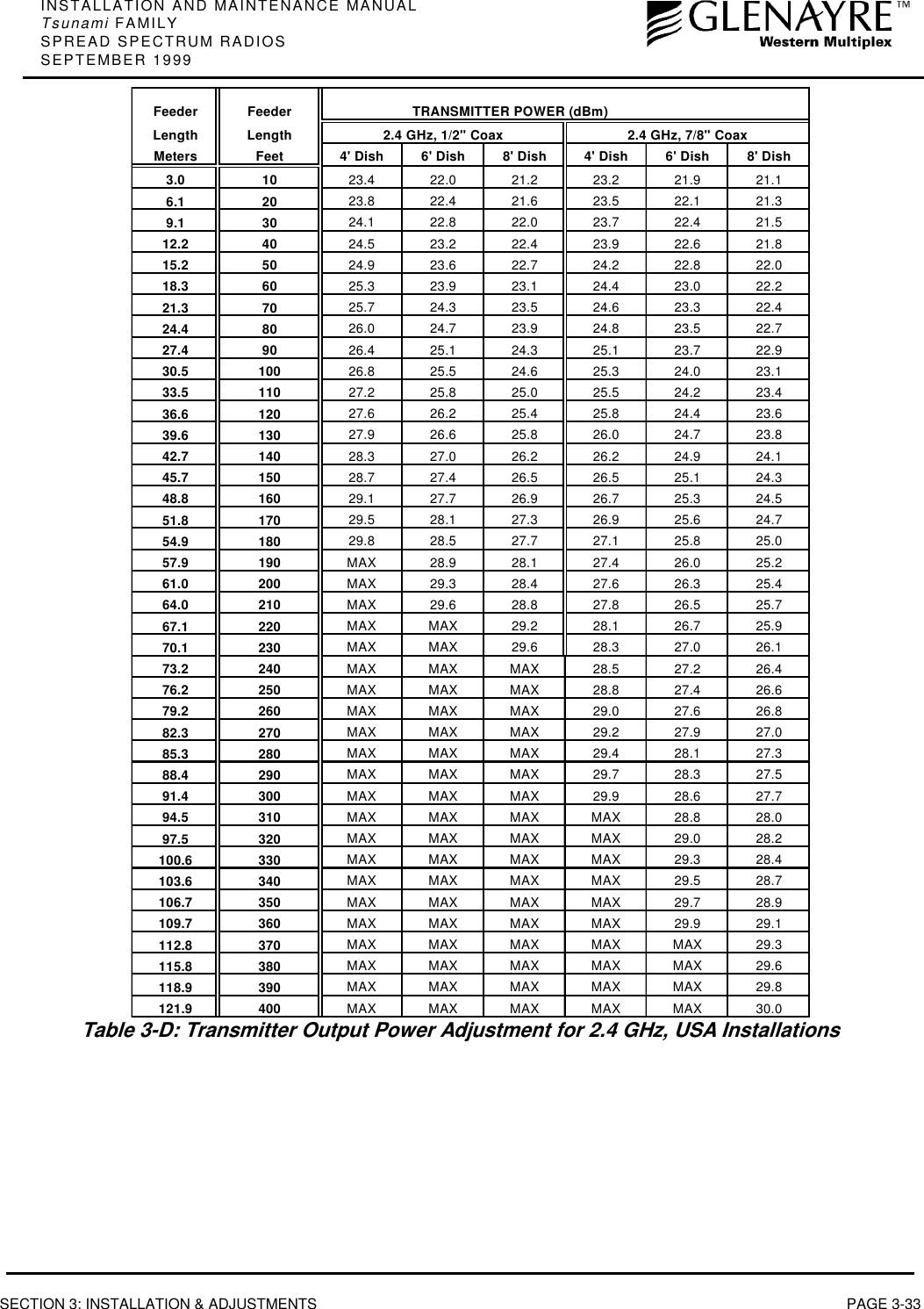
![INSTALLATION AND MAINTENANCE MANUALTsunami FAMILYSPREAD SPECTRUM RADIOS SEPTEMBER 1999PAGE 3-34 SECTION 3: INSTALLATION & ADJUSTMENTS3.13.1 Output Power AdjustmentThe Tsunami radio requires professional installation. In certain cases, it is necessary to adjust theoutput power from the factory setting, for example:❖to meet EIRP (effective isotropic radiated power) limits, such as +6 dBW in Canada.❖to meet transmitter output limits in the 2.4 GHz band for USA installations.❖to avoid exceeding the maximum far-end RSL of 0 dBm.❖to coordinate a hub or repeater location.To ensure maximum protection of the radio circuits, alwaysensure the antenna connector is terminated when power isapplied.For precise measurement of transmitter power, a calibrated RF power meter (such as the HP435B with Power Sensor HP8481) is recommended. This power sensor can be connected directlyto the output of the radio without exceeding the power rating. With some power meters, it may benecessary to place a calibrated in-line fixed attenuator between the radio antenna port and thepower meter so as to not exceed the power meter’s maximum input level. Thruline power metersdo not operate at Tsunami RF frequencies.If adjusting the output power to meet an EIRP limit, it will be first necessary to calculate the overallsystem gains and losses, including feeder losses for the type of transmission line installed and theantenna gain. Also refer to Table 3-C or 3-D for transmitter output power settings where installedwith various transmission line lengths and antenna sizes. You may determine the radio transmitpower for EIRP limited installations by the following equation:Tx Power (dBm) = EIRP Limit(dBm) + Feeder Loss(dB) - Antenna Gain(dB)In the USA, 2.4 GHz models have an output limit which is determined by:Tx Power (dBm) = 30 - [(Antenna Gain - 6)/ 3] + Feeder LossOutput power may be adjusted using a small screwdriver and rotating the potentiometer which isrecessed behind the front panel. Clockwise rotation increases output power while counter-clockwise rotation decreases output power.In lieu of a calibrated RF power meter, the PWR test port voltage can be used to estimate theoutput power. Figures 3-18 & 3-9 illustrate the voltage reading for various output power levels.The factory test data sheet should be used to establish a more precise setting of this adjustment.After setting the correct output power, place the cover capfound in the installation accessory kit over the front panelreceptacle.](https://usermanual.wiki/Proxim-Wireless/S58-12.Reply-to-request-10789-Attachment-4/User-Guide-75597-Page-74.png)
